Discover Which Colorado Mountain Town is right for you

14 Scenic Backpacking Trips in Colorado You’ve Got to Try
- March 2, 2023
- By foxintheforest
Last Updated on March 31, 2024 by foxintheforest
Backpacking in Colorado is a bucket-list activity for locals and visitors alike. The best backpacking trips in Colorado can be found all over the state. There’s a trail for all ability levels, making Colorado an epic place to backpack.
There’s something magical about spending the night in the Rocky Mountains.
Green valleys butt against beautiful rocky peaks streaked with snow. Backpacking in the alpine offers stunning beauty and plenty of challenging terrain.
I’ve lived in Colorado for over 13 years and I’ve had the privilege of going on some amazing backpacking trips in Colorado. It’s my mission to give you the inside scoop on the best Colorado backpacking trips so you can get out there like a local, not a tourist.
Not to mention, I write about the outdoors for a living, meaning I’m a literal pro at backpacking in Colorado. Be sure to check out the insider tips in this guide to the best backpacking in Colorado.
About this Guide to the Best Backpacking Trips in Colorado
When it comes to the best backpacking trips in Colorado, this is the ultimate local guide. You’ll find info on 13 amazing backpacking trails in Colorado including:
- A locally-curated list of amazing backpacking trips in Colorado
- Difficulty, duration, and location of each trail
- Local tips for hiking in Colorado
Is Colorado Good for Backpacking?
Colorado has long been considered a backpacking mecca. One of the reasons Colorado is so great for backpacking is that water is readily available.
Not to mention, there is a wide range of trails to choose from. You can backpacking in the mountains, desert, and lush pine forests throughout the state.
Do You Need a Permit to Backpack in Colorado?
That depends. Some trails require you to purchase a backcountry permit in order to go backpacking in Colorado. Particularly national parks, and special wilderness areas such as the Indian Peaks Wilderness require advanced permits.
However, most trails don’t require any permits. Just note that as Colorado becomes more popular with backpackers, more and more places are becoming permit-only. Always check your specific trip before you go!
When Can You Start Backpacking in Colorado?
There are a limited amount of backpacking trails in Colorado that you can use year-round. However, if you’re planning to backpack in the mountains, particularly at higher elevations, you should look to start your backpacking trip around mid-June at the earliest.
High elevation trails tend to be snowy from October through mid-June most years. By about mid-September, the nights get below freezing, so be prepared with the proper gear. So, yeah, don’t go in April in Colorado and expect to enjoy a snow-free trip.
Where are You Allowed to Backpack in Colorado?
Most public lands are open for backpacking in Colorado. The big exception to this tends to be state parks, many of which do not offer any overnight camping options, including backpacking. Places you’re allowed to backpack include:
- National Forests
- Wilderness Areas (permits may be required)
- National Recreation Areas (permits required)
- National Monuments (permits required)
- National Parks (permits required)
- Limited state parks
Backpacking Loop Guides
I get asked a lot about backpacking loops in Colorado. Frankly, loops are hard to find in this state. This is often because trails run out and back to alpine cirques.
However, I’ve got two amazing resources I use to plan loops. If you don’t see what you’re looking for here, you can snag the Southern Colorado Backpacking Loop and Northern Colorado Backpacking Loop guides.
A few trails from each are featured on this post, but for the most part, these topo guides show you cool trips you can take in different wilderness areas.
What I love about this is that you can quickly choose a route on a whim! Now that I’m a mom, I frequently use these guides when we have a quick weekend with childcare. These guides give us an adventure on short notice!
A Map of the Best Backpacking Routes in Colorado
Get oriented with this map of featured backpacking trips in Colorado. These pins mark the trailheads described below. Be sure the check out the interactive map for planning.
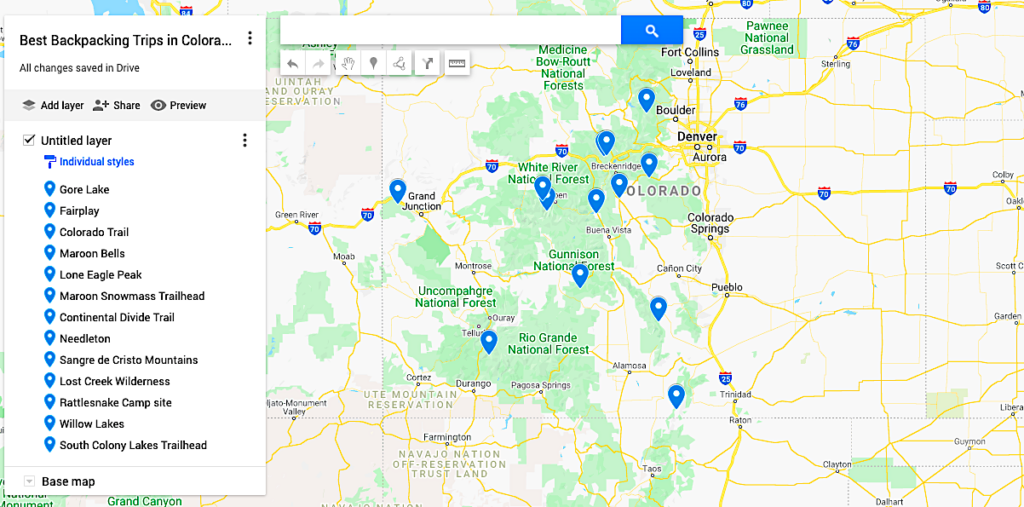
The Best Time to Backpack in Colorado
Backpacking in Colorado is possible year-round depending on where you go and how much you’re willing to deal with the snow and cold during times like March in Colorado .
However, if you are planning to head to the mountains, the best season for backpacking is from July through September.
June is still pretty snowy in the high alpine, although trails at lower elevations are typically snow-free.
Temperatures start to drop in October, although you can still sneak in a warm-weather weekend, just be prepared for the cold once the sun goes down.
July is considered a monsoon season in the mountains. This means you should be prepared to encounter quick and violent thunderstorms in the afternoon. Stay below the treeline to avoid getting hit by lightning.
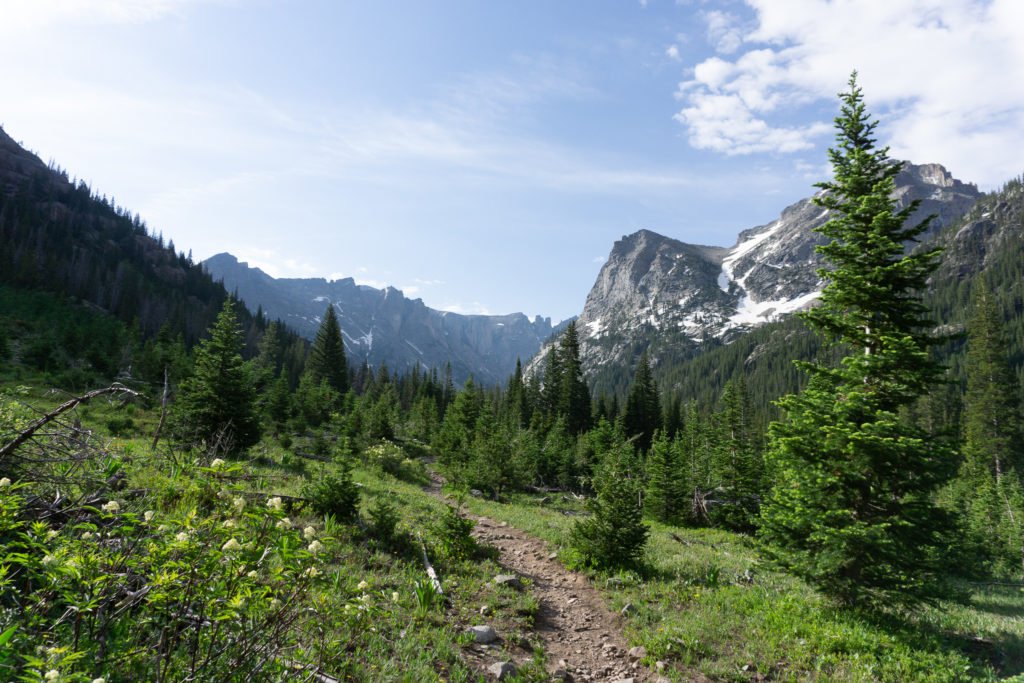
Amazing Beginner Backpacking Trips in Colorado
New to backpacking? Start here! These easier Colorado backpacking routes give you all the beautiful mountain scenery without too much pain for gains.
1. Early Season Backpacking in the Lost Creek Wilderness
The Lost Creek Wilderness, located near Denver, off of Highway 285, used to be one of Colorado’s best-kept secrets. Unfortunately, the cat is out of the bag, but with a wide variety of trails, it’s easy to find solitude here in the early season.
Since it’s lower in elevation, the snow melts here first. So if you’re itching to get out in April, May or even early June, check out the Ben Tyler Trail.
The 11.8-mile, difficult trail winds its way through the Lost Creek Wilderness, terminating with some spectacular views. Be sure to check up on water sources before heading out.
Local Tip: Want more mileage? The Lost Creek Wilderness Loop is a 28.3-mile loop that circumnavigated the greater wilderness area.
2. Best Beginner Backpacking Route in Colorado in Fairplay
Buffalo Peaks Loop, located just south of Fairplay is an excellent high-alpine beginner backpacking loop. Loop trails in Colorado are a rarity, so enjoy the fact that you’ll never see the same thing twice along this route.
The trail spends most of its time in the aspen and pine forests before popping up into a high alpine valley with gorgeous views.
There are plenty of spots to camp and excellent water sources throughout the trail. Beginners can opt to break the trail into two nights, or more avid backpackers can choose to make this a quick overnight jaunt.
Distance: 11.4 miles Elevation: 2,024 feet, mostly done in two steep sections Average time to complete: one night
3. Mohawk Lakes Backpacking near Breckenridge
As one of the top hikes near Breckenridge, many people head to Mohawk Lakes. For a real adventure, give this 8-plus-mile roundtrip hike an overnight to really soak in all the views.
You’ll start at the Spruce Creek Trailhead as you wind your way up several steep sections.
The trail passes by four distinct lakes, providing for an opportunity to rest your weary legs. Take your time until you reach Mohawk Lake, where you’ll find plenty of amazing places to pitch a tent.
From here, you can drop your bags and continue upwards to upper Mohawk Lake for even more dreamy views.
Distance: 8.6 miles from the lower lot, the upper lot cuts about a mile or so off each way (see Crystal Lake) Elevation: 2,129 feet from the lower lot (see Cyrstal Lake) Average time to complete: one night
Local Tip: This area sees a lot of traffic and is considered a moderate hike. It’s probably one of the tougher beginner backpacks. But with so many places to stop and enjoy the lakeside views, a beginner will find this trail rewarding.
Moderate Backpacking Trails in Colorado to Check Out
Looking for a challenge, but without feeling totally spent? Then be sure to check out these moderate backpacking trails for your backcountry fix.
4. Backpacking to Lone Eagle Peak
The drama of seeing Lone Eagle Peak reflected perfectly on Mirror Lake is well worth the nearly 15-mile journey deep into the Indian Peaks Wilderness.
The sky-piercing Lone Eagle Peak is an absolute icon and the surrounding dramatic cirque will take your breath away. In fact, it’s one of the best lake hikes in Colorado.
Hike from Cascade Creek to Mirror and Crater Lakes. It is possible to day hike this trail, however, you should spend the night here.
Climbers and mountaineers will love the opportunities for nearby alpine trad routes, a rugged class 4 route to the top of Lone Eagle, and plenty of couloirs.
Overnight trips require a permit, so be sure to reserve yours in advance, since you are only allowed to camp in designated sites.
Keep in mind, this area is moose territory (we saw 5 when we hiked here), so if you bring your pup, keep them leashed.
Distance: 14.6 miles Elevation: 2,375 feet Average time to complete: overnight
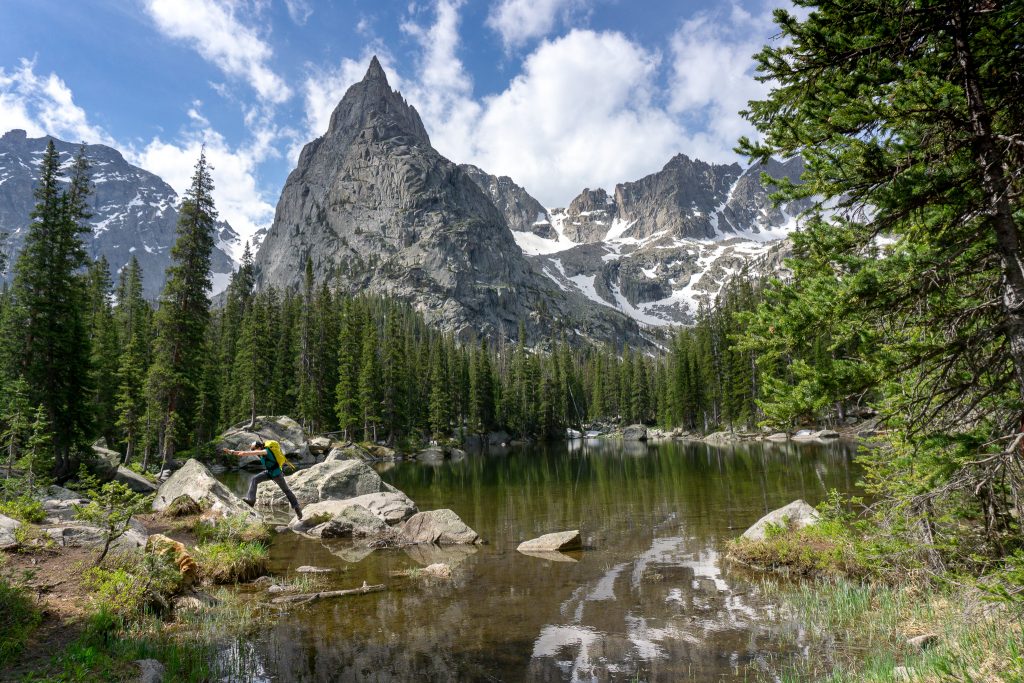
5. Wildflowers Galore from Crested Butte to Aspen
In the July months, the high alpine of Colorado comes to life. The Maroon Snowmass Trailhead that goes from Crested Butte to Aspen is a wildflower lover’s dream.
This moderately-strenuous trail blooms with color in the summer months. This is the best backpacking trip in Colorado for those seeking dramatic alpine views without tons of ass-kicking el-gain.
Most people hike one way and bus their way back (or swap rides with friends headed in the opposite direction). But it’s just as nice as an out-and-back.
Distance: 10.45 miles one way, 20.9 round-trip Elevation: 3,322 feet of gain Average time to complete: An overnight or weekend.
6. Backpack Colorado 14ers in the Chicago Basin
One of the best ways to backpack in Colorado is to combine your backpacking trip with a couple of peaks.
The Chicago Basin in the San Juan Mountains is an excellent place to backpack and climb some of Colorado’s famed 14,000-foot peaks .
The journey starts with a scenic train ride to the Needleton trailhead (how freakin’ cool is that?!??).
Next, walk a 1/2 mile from the train stop (you’ll purchase a backpacker’s ticket, it’ll be obvious when to jump off) and then continue 6 more miles to the Chicago Basin.
From here, you can set up a base camp and climb Elous, Windom, and Sunlight Peak.
Although you can hike in, a round-trip train ticket will run you about $70 and is certainly worth the extra few days of hiking.
Local Tip: Due to the heavy use of this area, you are required to carry out your human waste, camp only in designated sites, and use bear protection for your food. Be sure to check in for the most up-to-date info.
Distance: 15 miles to the basin and back to the train stop. Peak mileage varies. Elevation: 4,393 feet to the basin from Needleton Average time to complete: A long weekend or 3 nights recommended
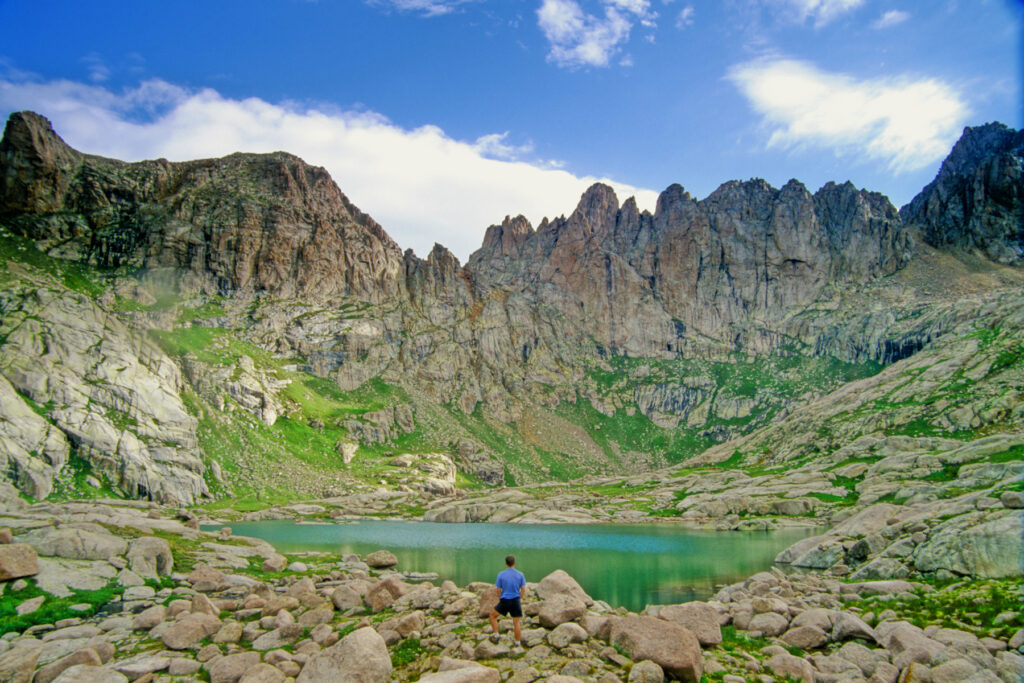
7. Rito Alto Four Pass Loop Fall Backpacking in Colorado
If you can stomach 6 miles of road walking, the Rito Alto Four Pass Loop is an amazing, crowd-free affair in the mighty Sangre de Cristos.
Furthermore, this (rare) loop trail is the perfect fall backpacking foray. Challenge your alpine skills with four distinct passes complete with stellar mountain scenery.
Distance: 23-mile loop Elevation: 5,843 feet of gain Average time to complete: 2 nights or one burly overnight
8. Savor the Views at Willow Lakes in the Gore Range
For a drool-worthy adventure with a big payout, head to Willow Lakes outside of Silverthorn. Located in the heart of the Gore Range, this incredible lake system bumps right into the impressive Zodiac Spire rock formations.
When it comes to backpacking Colorado, this trip needs to be on your list. Don’t be fooled, it’s an epic slog to make it here – the Gore Range always makes you earn it. But you’ll be rewarded with out-of-this-world mountain drama.
Local Tip: You’ll be hiking over a mile uphill through deadfall, so start early to beat the heat and save yourself from suffering too much.
Distance: 11.9 miles round trip Elevation: 2,716 feet of gain Average time to complete: Overnight.
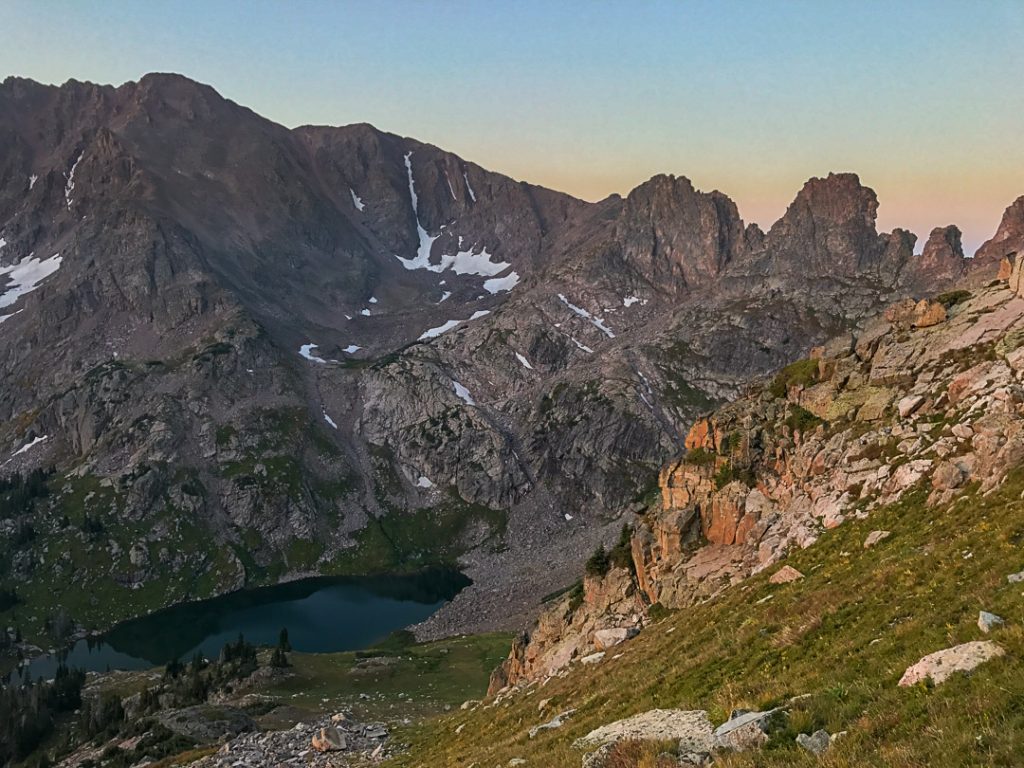
Challenging Backpacking in Colorado
Ready for a real butt buster? These Colorado backpacking trips are all burly outings. Expect long days on the trail with endless uphills. The reward? Some of the most solitude you can find!
9. Backpacking Gore Lake The Best Alpine Lake in Colorado
If you’re looking for a dramatic alpine lake with unbelievable mountains, take a weekend to backpack to Gore Lake . The Gores have a special appeal for the adventurous backpacker looking to tackle tougher terrain. As a dog-friendly hike featuring incredible Colorado wildflowers , you’ll be spoiled along this epic backpacking route trail.
Even a moderate hike in the Gores will feel like a total butt-buster. Trails are often not well maintained, and this area is a pristine wilderness. This means that you should take extra care to follow Leave No Trace principles when venturing out here.
Distance: 12.5 miles out and back Elevation: 2,890 feet, with a large majority of that gain in the last two miles. Average time to complete: Overnight
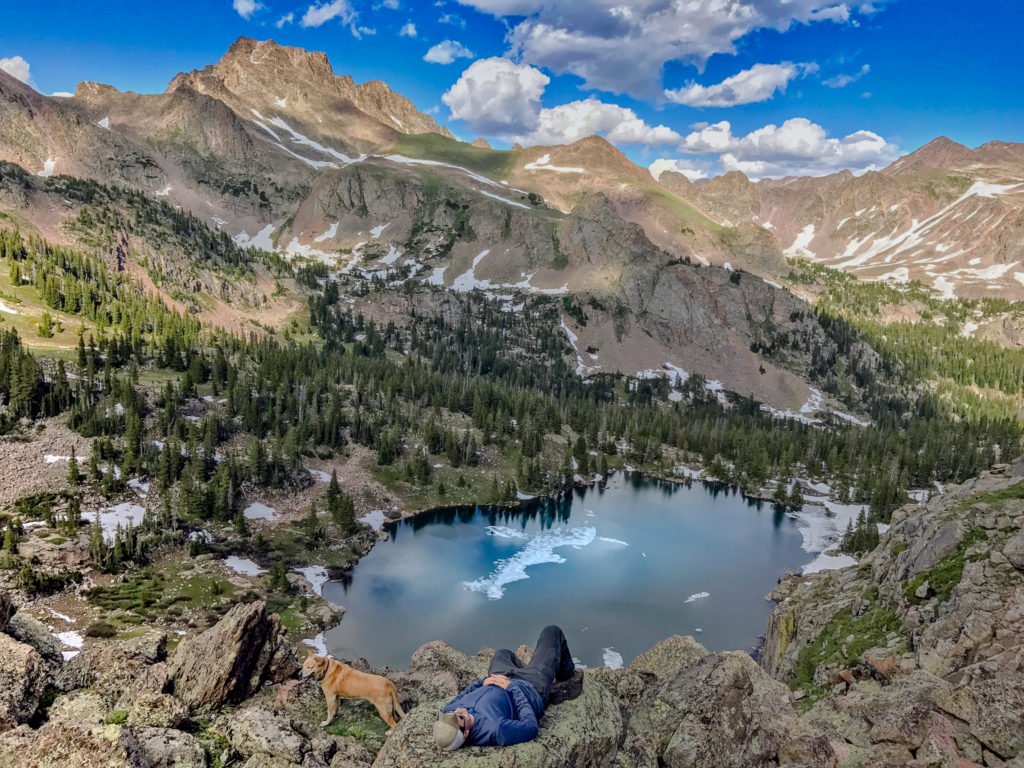
10. Aspen’s Four Passes Loop
You can’t talk about the best backpacking in Colorado without mentioning the 4 Passes Loop. This iconic trail winds its way over four distinct passes all while delivering breathtaking views of the Elk Range.
This is certainly a more strenuous backpacking loop, but it’s worth it. Keep in mind that parking fills up early, and you’ll have to plan your entry and exit with a bus service that runs daily.
Bear cans are required on this popular loop. be sure to check with the Forest Service for the most up-to-date information.
Distance: 26.8 miles Elevation: 8,115 feet Average time to complete: 2 nights or a long weekend
11. The Colorado Trail: The Highest Thru-Hike in America
The Colorado Trail winds its way from Denver to Durango over 486 of mountainous terrain. This is the United State’s highest thru-hike, with a majority of the trail above 10,000 feet.
If thru-hiking isn’t your thing, it’s certainly possible to section hike this incredible trail (I’ve done over 120 miles of section hiking with my dog).
Segment 6, segments in the San Juans, and the Sawatch Range are a few of the most beautiful parts of the trail. I’d highly recommend picking up the Colorado Trail Guide book and Field Guide .
Distance: 486 miles. Each segment is between 12 and 20 miles on average Elevation: 89,000 feet! Average time to complete: One month as a thru-hike. Most segments can be completed in a day or a weekend.
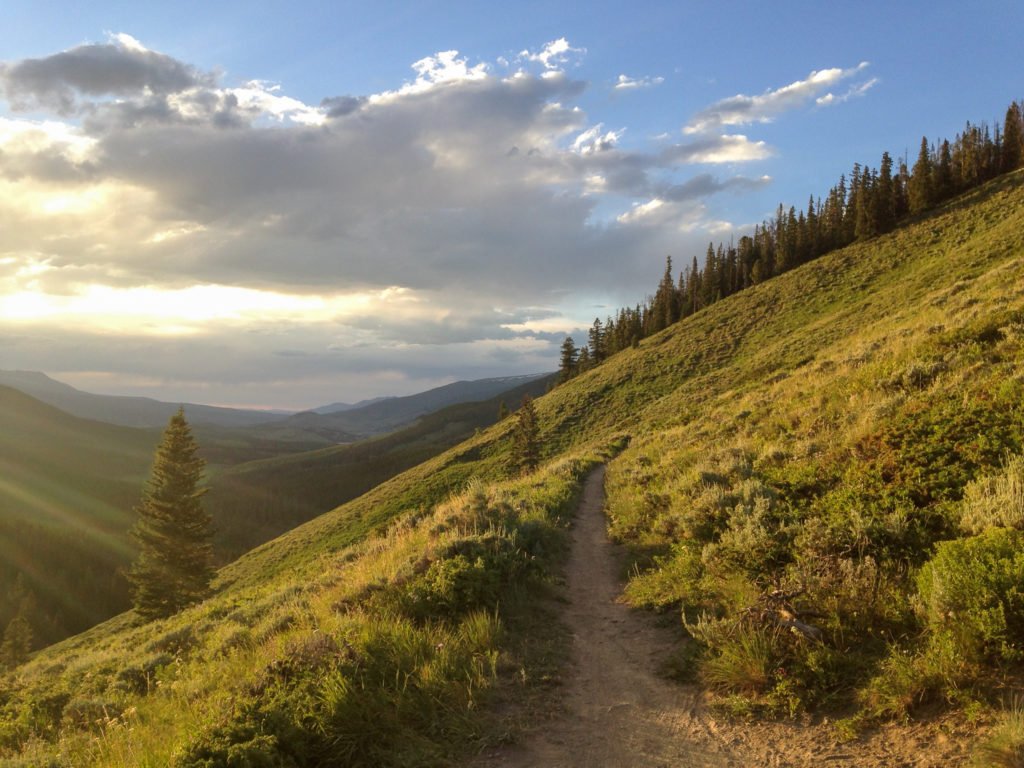
12. Best Backpacking Route in Rocky Mountain National Park
Hop on the iconic Continental Divide Trail in Rocky Mountain National Park to hit all the highlights of Colorado’s most famed National Park.
No visit to Rocky Mountain National Park is complete without spending the night in the backcountry.
Hop on the iconic CDT as it makes its way from Mexico to Canada, crossing through the state of Colorado. The trail tops out on Hallet Peak, Flattop Mountain, and Ptarmigan Peak.
This 30-mile stretch of the trail can be looped from the Bear Lake trailhead or you can hitch a ride back to your car on the opposite end of the park.
Keep in mind that no dogs are allowed on the trails in Rocky Mountain, you’ll need to book your permits in advance, and the entire loop takes around 5 days to complete.
Distance: 30 miles of Continental Divide Trail, 45 miles as a loop Elevation: around 11,600 feet of gain Average time to complete: 5 days
13. Winter Backpacking at Rattlesnake Arches
You may be surprised to learn that Colorado is home to some beautiful sandstone canyons. Backpacking to Rattlesnake Arches , just outside of the Colorado National Monument in Fruita is one of the best trails for backpacking in Colorado.
What makes this one of my favorite backpacking trips in Colorado is that you can make the trip year-round. The trail treats you to epic canyon views along with plenty of amazing rock formations and arches.
You’ll likely want to camp at the water source, below the final climb. The water source typically runs through mid-spring, so be sure to check up on local conditions before heading out (otherwise, you’re carrying your water with you).
After that it’s a sustained, grueling march to the arches, but wow is it worth it.
In 2020, it recently became illegal to camp at the Rattlesnake Arches, but you can find camping in the gulch before you climb the hillside leading to the arches.
Local Tip: Don’t forget, you’re in the desert and you’ll need to pack in all of your water. You can aslo enjoy some of the best things to do in Grand Junction afterward.
Distance: 14 miles round trip Elevation: 2,444 feet of gain Average time to complete: Overnight.

14. Zirkel Circle
Located near Steamboat Springs, this challenging climb is one of the best backpacking trips in Colorado that takes you through the Zirkel Wilderness and on a loop hike past Gilpin Lake and along the Gold Creek Lake Trail.
It’s also a great trip for anyone looking to get off the beaten path since a lot of travelers don’t stop here to check out area’s amazing mountains, stunning alpine lakes, and vast meadows – area’s of natural wonder that come alive with vivacious summer and fall colors.
Also, while this trail can be hiked in either direction, hiking counterclockwise will result in a bit more of a gradual climb.
Additionally, while Gilpin Lake is super picturesque, Gold Creek Lake is better for swimming if you need a spot to cool off during the summer.
Distance: 10.6 miles round trip Elevation: 2,444 feet of gain Average time to complete: Overnight.
Tips for Backpacking in Colorado
Backpacking in the Rocky Mountains is certainly a rewarding experience. However, if you’re new to mountain environments, take these tips into consideration before backpacking in Colorado
Always follow Leave No Trace principles , fire bans, and bear protection regulations. Every year backpackers encounter wildlife, start wildfires, and leave pristine wilderness areas a mess. Don’t be that person.
Be sure to check recent trail conditions by either calling a local ranger station or checking AllTrails.com. Snow can linger late into summer on some trails, so be prepared.
Protect your food against unwanted wildlife . This goes for tiny critters too! Always hang your food and keep it stored in odor-proof bags. Some areas require the use of bear cans, so know the rules before you go.
Plan to start early if you are going above treeline. You want to be below the trees by noon. Storms roll in quickly in the mountains and hikers die each year from being struck by lightning.
Follow all drone regulations . Drones are banned from most wilderness areas in Colorado, so please respect the area you are traveling in.
Colorado is home to some of the most beautiful backpacking trips in the US. Backpacking in Colorado can be a bit tougher with the altitude, but the views and mountain scenery make the extra effort worth it.
What to Pack
- Water and snacks for the car – it’s always nice to have a treat at the end!
- Sunscreen, sunhat, sunglasses
- First Aid Kit
- Noncotton socks
- Hiking footwear with good traction that you are comfortable wearing all day.
- Non-cotton shorts for hiking
- Non-cotton, pants for hiking. Convertible pants are great too!
- Electrolyte powder – optional but nice to have!
- A water bladder capable of carrying at least 2 liters of water.
- Camera clip to strap to your back
- Glove liners
- Fleece layer
- Puffy layer
- Hiking poles (optional, but recommended)
- A toilet kit: shovel, WAG Bag (if you plan to travel above treeline), hand sanitizer, TP/baby wipes, a small plastic baggy to pack out TP and sanitary items
- Pee funnel – optional
- Pee rag – optional.
- GPS navigation
- emergency communication device
- Wind/rain layer
- Sleeping pad
- Sleeping bag or sleeping quilt
- Backpacking pack (I like to use at least a 60L bag, but I’m usually carrying technical gear and a tripod)
- Backpacking tent.
- Water filter
- Odor-proof bag for food
- Hang bag and line to hang your food
- Personal items
- A change of underwear (preferably non-cotton)
- Backpacking stove and fuel
- Backpacking utensils
- Lightweight packable daypac k for day hiking
- Long underwear for sleeping
- Extra pair of socks
- Pair of warm socks for camp
- Pocket knife
Additional Colorado Backpacking Resources
Want to get to know the REAL Colorado? Then check out these local hiking resources for the Centennial State:
- Incredible Alpine Lakes in Colorado
- Must-See Places in Colorado
- The Ultimate Guide to Backpacking Gear for Beginners

Meg Atteberry
Meg is a long-time Colorado local and outdoor industry professional. She's spent the last 15 years hiking, climbing, mountaineering, and canyoneering all over Colorado, Utah, Arizona, and Nevada in search of the best views. She's written for Outside Magazine, REI, Backpacker Magazine, and appeared on the Weather Channel.
Let’s connect!

Meg aka Fox is a 30-something who's born to explore. Toddler mom, queer, and neuro-spicy her favorite things to do are climb in the alpine and camp in the desert. Her mission is to get you out on your greatest adventure.
Best backpacking trips in Colorado: 8 epic overnights in the high country
The best backpacking trips in Colorado serve up unforgettable overnight adventure through untouched alpine landscape
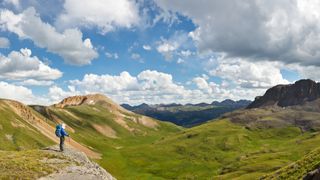
Backpacking is one of the most immersive ways to commune with nature, offering you the gratifying experience of setting off from civilization and venturing into the wilderness for a night or longer. With overnight trips you can take in more than you might on a day hike and you’ll often have swaths of nature all to yourself. The best backpacking trips in Colorado range in length from a few miles to epic treks that guide you through untouched alpine landscapes.
The trails in Colorado are certainly some of the best, but they can also be busy. However, you usually find that only the first couple of miles of any trail are clogged up before the crowds thin out. It’s worth venturing a little further to lose the crowds and to see some of the gems that aren’t easily reachable on a day hike, and one of the best ways to do this is to turn your hike into an overnight trip. In this article, we take a look at some of the best backpacking trips in Colorado to whet your whistle for some overnight adventure in the backcountry.
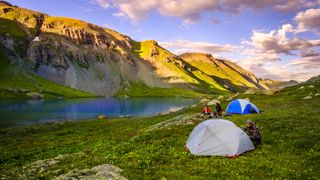
You’ll want to take a look at our articles on different types of backpacking and how to plan a backpacking trip before you set off. Colorado is blessed with lots of dry weather so it’s a great place to dip your toe into backpacking, though be prepared with a good 3-season sleeping bag because overnights in the high country are always cold. For all Colorado hiking you’ll of course want to have a good pair of boots – though the trails in this state are well-maintained, they get rocky up above the treeline which is where many of these trips take you.
Best backpacking trip near Denver: Crater Lakes
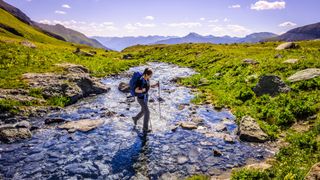
Distance: 6.8 miles Difficulty: Challenging
It might be Colorado’s urban center, but you don’t have to travel far from Denver to reach some impressive heights. Crater Lakes are three high alpine lakes in the James Peak Wilderness that feature waterfalls and wildflowers along the way. Crater Lakes is definitely short enough to be done as a day hike, but add a heavy pack and it will make for a satisfying overnight trip.
The trailhead is near Black Hawk, about an hour’s drive from Denver. From Black Hawk, travel north Highway 119 to Rollinsville. Turn west onto Gilpin County Road 16 and continue eight miles to the Moffat Tunnel, and park at the East Portal Trailhead.
Follow the South Boulder Creek trail for 1.2 miles before turning right at the junction onto the Crater Lakes Trail. This takes you through a wide forested valley then onto a narrow strip of land between the two beautiful main lakes. The third lake is found via the steep climb to the west of the lakes.
Advnture Newsletter
All the latest inspiration, tips and guides to help you plan your next Advnture!
Best backpacking trip near Boulder: Caribou Lake
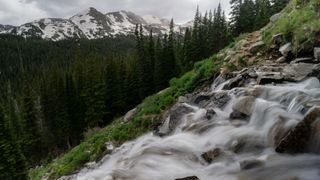
Distance: 9.3 miles Difficulty: Challenging
You’re certainly spoilt for choice in the Boulder area, which boasts access to a variety of wilderness areas from Chautaqua Park in the city limits to nearby Rocky Mountain National Park. Our favorite is beautiful Caribou Lake via the Arapahoe Trail, which boasts a high alpine climb to the Continental Divide followed by a descent for your overnight stay in the attractive bowl forming Caribou Lake.
This trail is accessed from the Fourth of July Trailhead in the Indian Peaks Wilderness near Nederland, about an hour from Boulder. From Nederland, go south on Highway 72 for 0.5 miles to County Road 130 and make a right. Go through the town of Eldora, just past which it becomes a dirt road. Continue on the dirt road another 4.8 miles and take the right fork at the Buckingham Campground to park.
Begin on the North Fork of Middle Boulder Creek trail which takes you up above treeline to the Continental Divide via expanses of wildflowers, steep waterfalls, glacier-fed streams and the historic Fourth of July Mine. After you reach the Divide, there’s a steep switchback descent down to the lake. Be aware that in the morning, you’ll have another steep climb to get back out.
Best backpacking trip in Rocky Mountain National Park: Tonahutu Creek Loop Trail
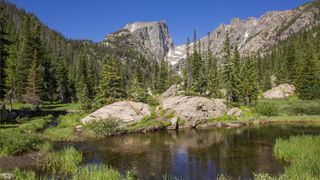
Distance: 25 miles Difficulty: Moderate
Within Rocky Mountain National Park ’s 355 miles of hiking trails, the Tonahutu Creek Loop Trail takes in most of the fabulous North Inlet Trail as well as the Continental Divide and takes you across the rugged alpine tundra of the high country.
Park at the North Inlet trailhead and head north on the Tonahutu Trail. This trail takes you across tundra topped flats, up to Ptarmigan Point on the Continental Divide and back down to Hallett Creek. There’s even a side option to detour up Flattop Mountain and enjoy the view down to sparkling Emerald Lake. This route is dotted with campsites along the way so you can take several nights to enjoy the journey.
Best backpacking trip near Vail: Gore Lake
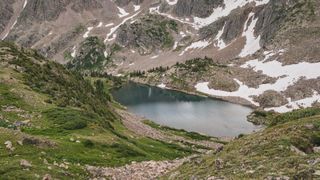
Distance : 12.1 miles Difficulty : Difficult
If you’re in Vail, there’s nothing quite like hanging your hat in the dramatic bowl of Gore Lake for the night and waking up to see the sun rise over the Gore Range. The hike to Gore Lake makes for a pretty serious day hike, but it’s a good challenge for an overnight trip.
Take the free bus from town or park at the trailhead on Vail Pass - 10 Mile road. Gore Lake shares a trailhead with Deluge Lake, but both trails are well signposted.
The trail begins with almost a mile of strenuous climbing and has many more steep sections as you wind your way up the valley. You’ll be treated to all the high alpine features of cool forests and alpine meadows, but one unusual feature of this hike is a set of two graves about four miles in. The graves are of the Recen brothers, two Swedish immigrants who came to the area to mine for precious metals in the late 1800s and had a cabin nearby. Keep going to finally arrive at this idyllic alpine lake nestled in a granite bowl, a gorgeous spot to camp.
Best backpacking trip near Leadville: The Colorado Trail Section 10
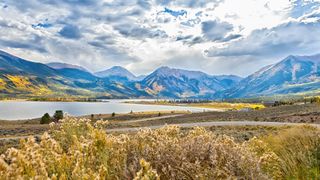
Distance : 12.4 miles Difficulty : Difficult
The Colorado Trail is a 567 mile trail stretching from Denver to Durango and section 10 takes you through the Leadville area from the Timberline Pass trailhead to the Mount Massive trailhead over 12 miles with views of some of the highest peaks in the state.
From Leadville, follow the signs for Turquoise Lake and park at the Timberline Lake trailhead at the western end of the lake.
This wooded trail takes you along the base of Mount Massive, the state’s second highest peak. The trail begins where The Colorado Trail and Continental Divide Trail overlap and takes you into the Mount Massive Wilderness via a moderate climb then levels out along the contours of Bald Eagle Mountain. There is good camping about five miles in at Twin Mounds saddle and again a little over six miles in at Rock Creek. The trail then climbs steadily to the intersection with Highline Trail before descending down to the Mount Massive trailhead. For a longer trip you could camp here and tackle Mount Massive the next day.
Best backpacking trip near Breckenridge: Spruce Creek Trail to Mohawk Lakes
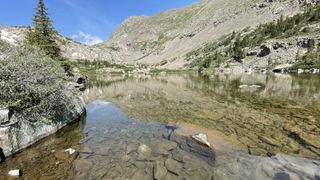
Distance : 8.4 miles Difficulty : Difficult
Spruce Creek Trail to Mohawk Lakes offers some of the best views of Colorado’s high country with lots of great backcountry camping spots along the way.
The Spruce Creek trailhead is less than five miles from Breckenridge. Just follow Highway 9 south then take a right onto Spruce Creek Road.
Follow the creek for about a mile and a half then join the Mohawk Lakes trail at the junction. After a couple more miles you’ll reach lovely Mayflower Lakes. Camp here or continue on up the steep climb to Lower Mohawk Lake passing Continental Falls on the way. There are several more stunning alpine lakes past Lower Mohawk so pitch your tent and go and explore them if there’s time before sunset.
Best backpacking trip near Aspen: Aspen to Crested Butte
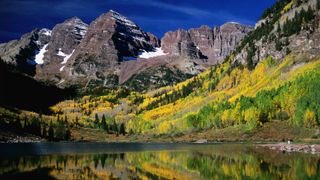
Distance : 11 miles Difficulty : Difficult
The drive from Aspen to Crested Butte is 100 miles, but go on foot and it’s 11 glorious miles over West Maroon Pass. This unforgettable trip takes you through aspen groves and wildflower meadows and treats you to some of the country’s most photographed mountain vistas.
To begin this hike from Aspen, park at Maroon Lake about ten miles south of town.
From spectacular Maroon Lake, hike through the forest to Crater Lake and pass the base of the iconic Maroon Bells. There’s a steep and strenuous climb up Maroon Creek to West Maroon Pass at 12,490ft of elevation – rest here for incredible views – then a steep descent down into more wildflower fields and old mining cabins as you follow Crystal River through the forest to Crested Butte. You can camp here and return on foot the way you came, or book a shuttle to take you back to Aspen. Needless to say, you can do this trip in either direction.
Best backpacking trip near Telluride: Blue Lakes Trail
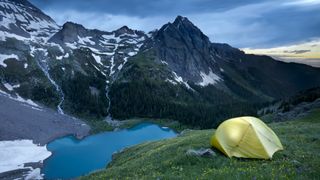
Distance : 8.6 miles Difficulty : Difficult
The San Juan and San Miguel Mountain ranges surrounding Telluride are quite possibly the most picturesque in the state. The Blue Lakes trail takes you to a turquoise lake via Mount Sneffels wilderness, cascades and wildflowers galore.
Blue Creek trailhead is very close to town as the crow flies, but since it’s on the other side of Mount Sneffels it requires a little over an hour of driving. Take Highway 62 towards Ridgewary and turn onto Dallas Creek Road then drive 9 miles south to the trailhead.
The hike takes you up the Dallas Creek drainage with spectacular mountain views all the way. You will pass an incredible waterfall before spending the night next to the turquoise waters of Blue Lake.

Julia Clarke is a staff writer for Advnture.com and the author of the book Restorative Yoga for Beginners . She loves to explore mountains on foot, bike, skis and belay and then recover on the the yoga mat. Julia graduated with a degree in journalism in 2004 and spent eight years working as a radio presenter in Kansas City, Vermont, Boston and New York City before discovering the joys of the Rocky Mountains. She then detoured west to Colorado and enjoyed 11 years teaching yoga in Vail before returning to her hometown of Glasgow, Scotland in 2020 to focus on family and writing.
The best wild swimming spots: find the perfect place to take the plunge near you
Shocked Yellowstone guide catches clueless tourist sticking hand in geyser
Glade Adapt 2 ski goggles review: they perform, feel and look great, especially for the price
Most Popular
By Julia Clarke April 03, 2024
By Julia Clarke April 02, 2024
By Fiona Russell April 02, 2024
By Fiona Russell April 01, 2024
By Alex Foxfield April 01, 2024
By Fiona Russell March 31, 2024
By Craig Taylor March 30, 2024
By Fiona Russell March 30, 2024
By Craig Taylor March 29, 2024
By Fiona Russell March 29, 2024
By Claire Maxted March 29, 2024
- 2 The best wild swimming spots: find the perfect place to take the plunge near you
- 3 Shocked Yellowstone guide catches clueless tourist sticking hand in geyser
- 4 Danner Mountain 600 Leaf GTX hiking boots review: tough, grippy trailbusters, but don’t cross the streams
- 5 How to stay safe in open water: wild swimming for beginners

15+ Epic Backpacking Trips in Colorado for Overnight Hikes
- By jesse.sumrak
Backpacking in Chicago Basin is a dream come true. Imagine…
- Massive peaks
- Rushing rivers
- Fields of wildflowers
- Alpine lakes
Check, check, check—Chicago Basin has it all.
Accessing Chicago Basin requires a journey that begins with the historic Durango & Silverton Narrow Gauge Railroad . Starting from Durango, Colorado, the scenic train ride takes you deep into the wilderness, passing through breathtaking landscapes of towering peaks and cascading rivers. The train drops off hikers at the Needleton stop, the gateway to Chicago Basin.
From Needleton, the real adventure begins with a hike along the Animas River. The trail starts pretty mellow before climbing up into the beautiful Chicago Basin.
Chicago Basin is famous for being home to not one but four stunning fourteeners (mountains with peaks over 14,000 feet):
- Sunlight Peak (14,059 ft)
- Windom Peak (14,082 ft)
- Mount Eolus (14,083 ft)
- North Eolus (14,039 ft)
Each peak presents its own set of challenges and rewards for hikers and mountaineers. Windom is an easy(ish) Class 2 14’er, while Sunlight’s crux is considered the most difficult of all the Colorado fourteeners.
Experienced climbers can attempt the “Chicago Basin Grand Slam” by conquering all four summits in one day. But it’s a beast .
Camping options abound in Chicago Basin, and this is one of the few areas in the Weminuche Wilderness where camping is allowed above treeline. There are several established campsites, but it’s essential to secure a train ticket well in advance due to the high number of visitors.
2. Lost Creek Wilderness Loop
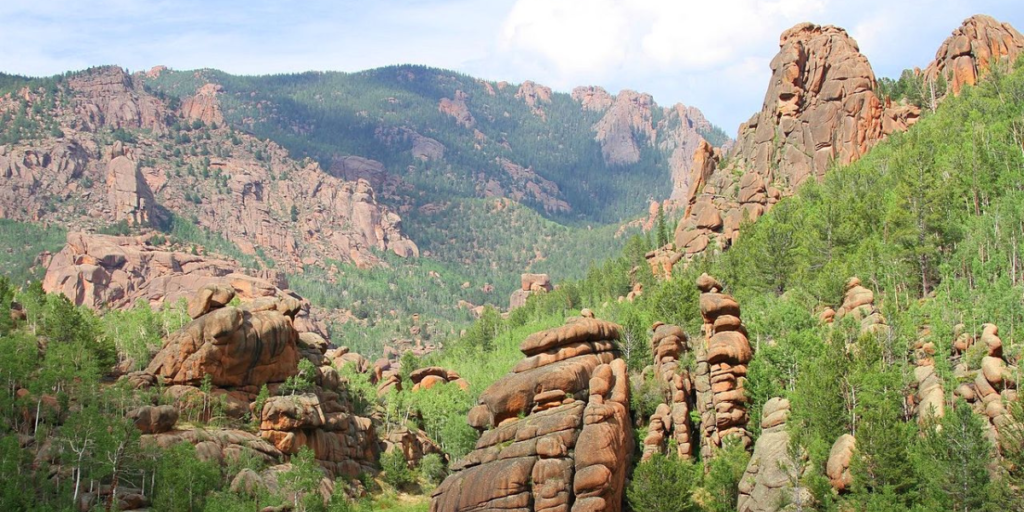
The Lost Creek Wilderness Loop offers a challenging and diverse backpacking experience in the heart of Colorado’s Lost Creek Wilderness. The loop is a picturesque trail system that winds through a mesmerizing landscape of unique rock formations, lush forests, meadows adorned with wildflowers, and babbling creeks.
It’s called “Lost Creek” because the creek wanders under boulder fields and rocks, making it difficult to keep track of as it winds through the wilderness.
The Lost Creek Wilderness Loop can be accessed from various trailheads, but the Goose Creek Trailhead is one of the most popular starting points. Located approximately 60 miles southwest of Denver, reaching the trailhead involves a scenic drive through the foothills.
The loop comprises several interconnected trails, providing backpackers options for different trip lengths and difficulty levels. The most common route covers approximately 25 to 30 miles, but depending on your preferences, more extended or shorter variations are possible.
One of the highlights of this wilderness area is the exceptional rock formations known as the “Lost Creek Wilderness granite domes.” These massive granite rocks, sculpted by millennia of erosion, create a surreal landscape that seems straight out of a fiction novel. The imaginative names of some of these formations, such as “The Sphinx” and “The Castle,” add to the charm.
You’ll encounter several creek crossings, adding an element of adventure to the journey. Yes, you will get wet. Some crossings may require careful navigation, especially during the spring snowmelt or after heavy rains. Take your time, and scout for safer opportunities.
On the bright side, it’s never hard to find water, so you can keep your pack light(er).
3. Colorado Trail
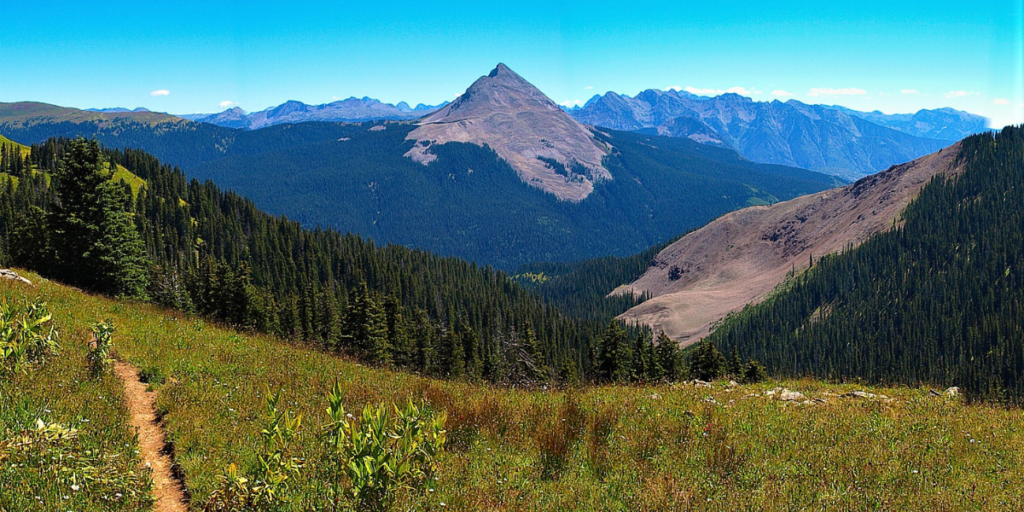
The Colorado Trail is a legendary long-distance trail that spans over 500 miles, winding its way from the outskirts of Denver straight through the heart of the Rockies to Durango. If you want to see the best of what Colorado has to offer, this is the backpacking trail for you.
The trail is divided into 28 segments, each varying in length and difficulty. Ranging from relatively easy sections appropriate for day hikers to challenging portions for experienced backpackers, the Colorado Trail caters to adventurers of all levels.
Hikers on the Colorado Trail will experience dramatic elevation changes, with several high mountain passes exceeding 12,000 feet. This means weather conditions can change rapidly, and it’s crucial to be prepared for sudden temperature drops, afternoon thunderstorms, and even snow in higher elevations (even during the summer).
Water sources can be scarce in some segments, especially during dry seasons. Do your research to plan ahead, and pick up a copy of the Colorado Trail Guidebook . It’s regularly updated and covers everything you need to know to survive your trip.
The trail offers numerous opportunities for backcountry camping, but hikers must follow Leave No Trace principles and abide by established regulations for camping in designated areas. Some segments may require permits, so it’s crucial to research and plan ahead.
4. Maroon Bells Wilderness
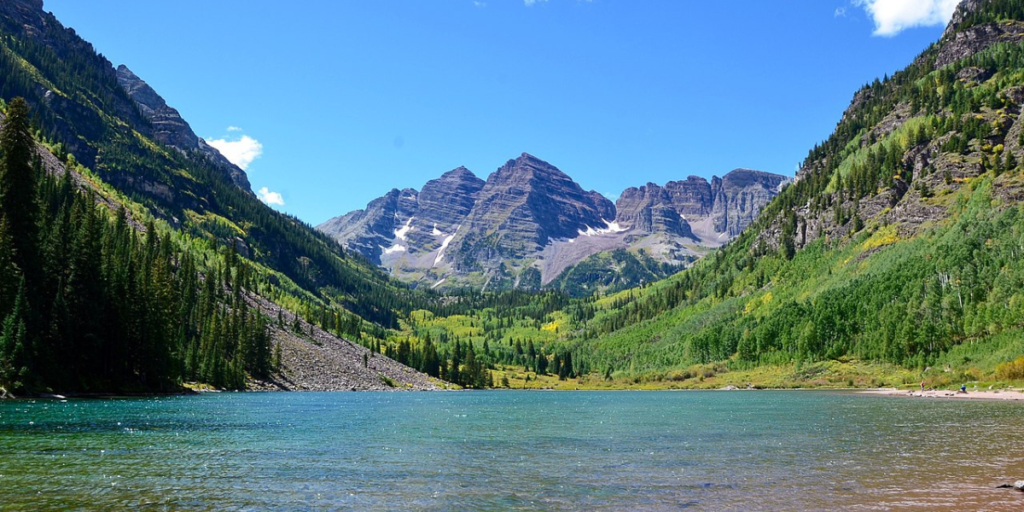
The Maroon Bells Wilderness offers a wide range of hiking trails catering to different skill levels and interests. From short day hikes to multi-day backpacking trips, there’s something for everyone.
Popular routes include the Maroon-Snowmass Trail, West Maroon Trail, and the Four Pass Loop, a challenging but incredibly rewarding 27-mile circuit that takes you over four high mountain passes.
However, everyone wants to go backpacking in the Maroon Bells Wilderness, so you’ll need to get in line and fight to earn yourself a permit. Some adventures want to backpack to beautiful alpine lakes, others want to do the Four Pass Loop, and many want to bag the area’s iconic (and scary) 14-thousand-foot peaks.
5. Wild Basin, Rocky Mountain National Park
Wild Basin is the lesser-visited area of Rocky Mountain National Park. It can get busy, but it’s far less crowded than Bear Lake Road and the northern areas of the park—yet, it has so much to offer. However, you have to work a bit more for everything.
There isn’t a shuttle to drop you off at every lake and waterfall.
Located on the southeastern side of Rocky Mountain National Park, Wild Basin is accessible through a separate entrance station. From the trailhead, visitors can choose from a variety of hiking trails, each offering its own unique charm and adventure.
Wild Basin is an excellent place for backcountry camping, with several established campsites available for anyone seeking a more immersive wilderness experience. Permits are required for backcountry camping and can be obtained through the Rocky Mountain National Park’s backcountry office.
I’ve backpacked to Thunder Lake, and it’s a relatively gradual trail that meanders through most of the basin. Thunder Lake is a gem, and we had the whole lake to ourselves when we visited. It serves as a great base camp for hiking (or climbing) Mt. Alice and Chiefs Head Peak. We also threw in Tanima Peak, just for fun.
6. Ice Lake Basin
Backpacking at Ice Lake Basin is a true alpine adventure, offering hikers a glimpse into one of Colorado’s most strikingly beautiful and pristine wilderness areas. Situated near the town of Silverton in the San Juan Mountains, Ice Lake Basin is renowned for its awe-inspiring turquoise-colored lakes, rugged mountain peaks, and breathtaking wildflower meadows.
The trailhead to Ice Lake Basin is accessible from the South Mineral Creek area, just a short drive from Silverton. The journey to the basin begins with a moderate ascent through a dense forest, gradually revealing glimpses of the surrounding peaks and valleys.
Eventually, you’ll make your way up to Ice Lake, a beautiful blue lake with rugged, craggy peaks surrounding it. From here, you can find a camp spot, and you can also go climb Class 2 Vermillion Peak (one of Colorado’s 100 tallest peaks). You can also take a short adventure around the mountain’s corner to Island Lake, a smaller lake with a little island in the middle.
The San Juan Mountains Association (SJMA) recommends camping in the Lower Ice Lake Basin for the following reasons:
- Protecting Fragile Alpine Vegetation: Exercise caution when setting up tents in the Upper Basin, as the delicate alpine vegetation can be easily damaged.
- Challenges of Cat Holes in Alpine Tundra: Digging a cat hole for waste disposal becomes problematic in the alpine tundra, and privacy options are limited.
- Discouraging Fires in the Upper Basin: Fires are highly discouraged in the Upper Basin due to several reasons. Firstly, wood is scarce, necessitating the need to carry it in. Additionally, open fire scars are unsightly and can take years for revegetation.
- Exposure to Elements in the Upper Basin: The Upper Basin lacks tree cover for protection, leaving backpackers exposed to storms and strong winds.
7. Continental Divide Trail
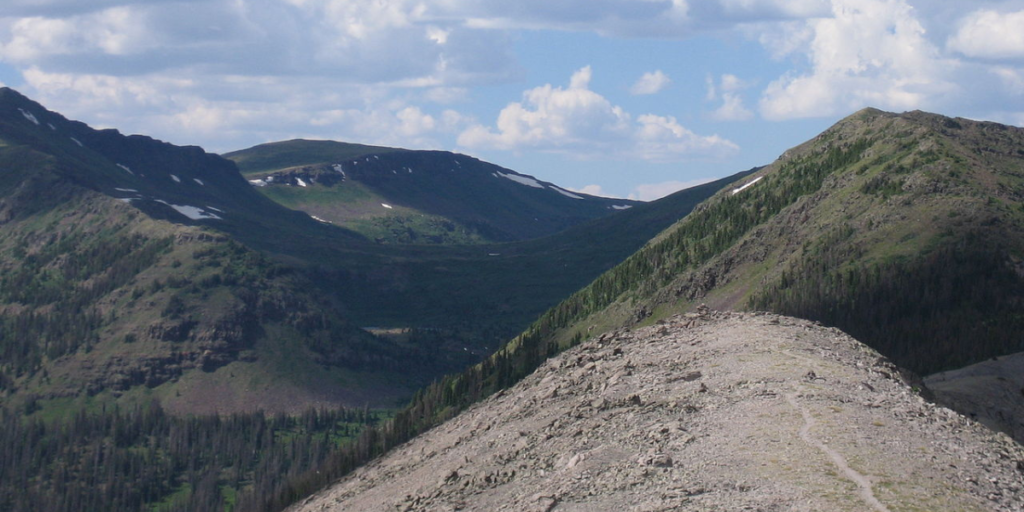
Backpacking the Continental Divide Trail (CDT) is a true backcountry odyssey that takes adventurous hikers on an epic journey along the spine of the Rocky Mountains.
Stretching over 3,100 miles from Mexico to Canada, the CDT offers an unparalleled wilderness experience, immersing backpackers in diverse landscapes, rugged terrains, and some of the most remote and unspoiled areas in the United States.
Colorado contains a large portion of the CDT, offering unique opportunities to camp in fantastic backcountry settings. However, be aware of each area’s specific regulations and permit requirements. Due to the trail’s remote nature, self-reliance and Leave No Trace principles are essential to minimize your impact on the environment.
8. Conundrum Hot Springs
Backpacking to Conundrum Hot Springs is a rewarding journey with rushing creeks, views of rugged mountain ridges, and (of course) natural hot springs.
The trailhead to Conundrum Hot Springs begins at the Conundrum Creek Trailhead, located near Aspen, Colorado. The trail winds through dense forests and wildflower-laden meadows.
After a challenging 8.5-mile hike, you’ll arrive at Conundrum Hot Springs. Here, you’ll find two natural hot spring pools. You get to soak in the warm, mineral-rich waters while gazing at the epic alpine scenery—it really doesn’t get better than this.
You might even feel refreshed on your descent hike back to Aspen…maybe.
9. Lone Eagle Peak, Indian Peaks Wilderness

The journey to Lone Eagle Peak typically begins at the Monarch Lake Trailhead near Granby, Colorado. The trail winds through dense forests and opens up to reveal stunning vistas of the surrounding peaks and valleys.
Stop by Mirror Lake and Crater Lake for awesome views of Lone Eagle Peak reflecting in the water. This majestic granite spire rises dramatically from the alpine landscape—it looks like something out of a movie.
The Indian Peaks Wilderness is known for its remoteness, providing a sense of isolation and solitude that connects hikers with the raw beauty of nature. While the trail is popular among adventurers, the vastness of the wilderness ensures that you can find solitude, too.
Camping opportunities abound in the Indian Peaks Wilderness, offering backpackers the chance to spend the night beneath the starlit skies. Obtain the necessary permits for overnight stays and adhere to Leave No Trace principles to protect the fragile alpine environment.
10. Crested Butte to Aspen
This multi-day trek offers backpackers a chance to immerse themselves in the untamed beauty of the Maroon Bells-Snowmass Wilderness and the Elk Mountains while connecting two mountain towns.
The adventure begins in the charming town of Crested Butte, where the West Maroon Pass trailhead awaits. The most popular route is the West Maroon Trail, which takes hikers through a lush valley adorned with wildflowers and towering peaks. Another option is the East Maroon Trail, providing a slightly different but equally scenic route.
Plan transportation logistics in advance, as the trailhead and endpoint are in different locations. Shuttles and private transportation services are available between Crested Butte and Aspen, letting you enjoy a no-stress point-to-point journey.
11. South Colony Lakes
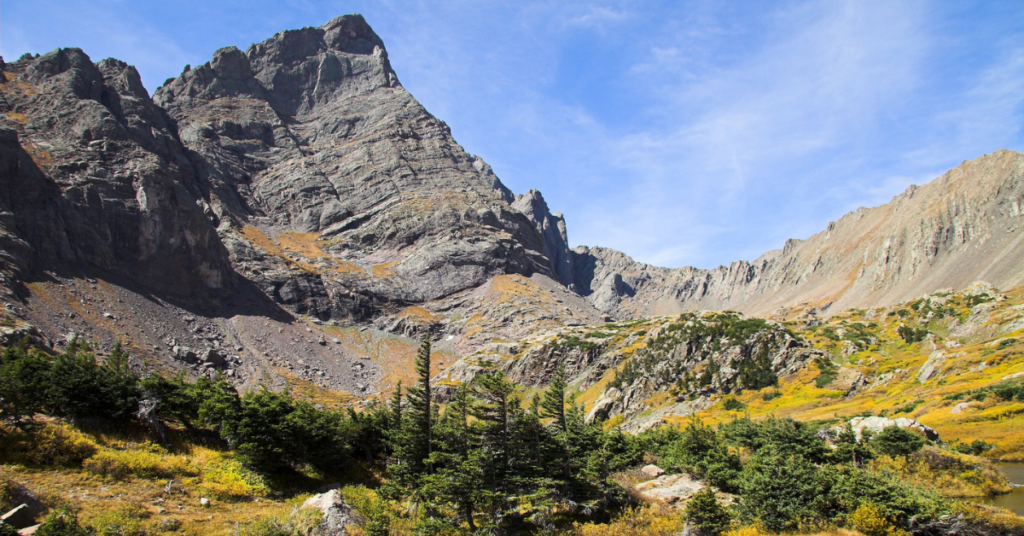
The trailhead to South Colony Lakes is accessible from the South Colony Lakes Road near Westcliffe, Colorado. The initial part of the trail takes hikers through dense forests, gradually opening up to reveal spectacular views of the surrounding mountains.
South Colony Lakes is the gateway to two of Colorado’s most challenging and iconic 14ers: Crestone Needle and Crestone Peak. You can also bag Humboldt (another 14er) or do a little bit more adventuring to get Columbia Point (a centennial).
You’ll find plenty of backcountry campsites close to Lower South Colony Lakes. You can camp up at the Upper South Colony Lakes, but the area is above treeline and exposed to the elements.
12. Zirkel Circle
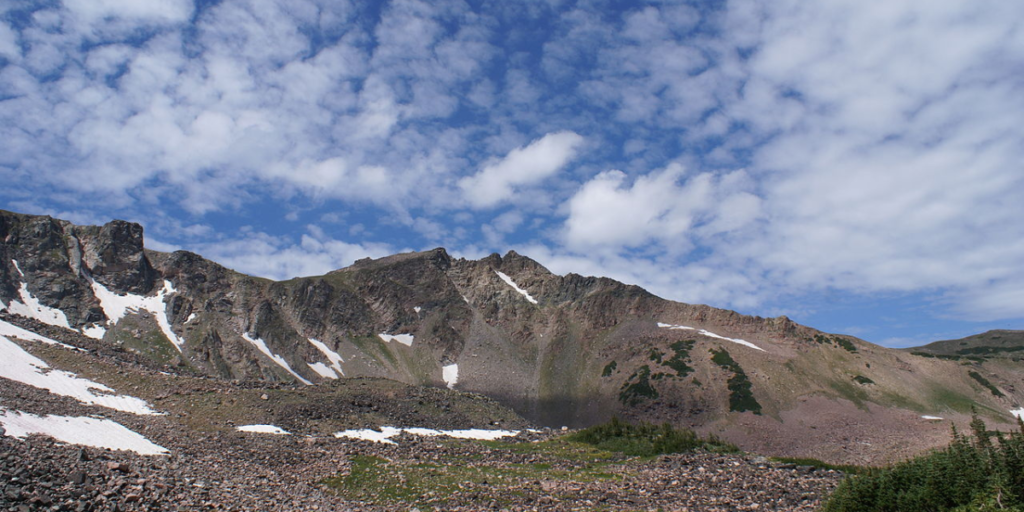
This iconic loop trail offers backpackers the chance to experience the raw beauty of the Rocky Mountains, with alpine lakes, rugged peaks, and diverse landscapes that showcase the essence of Colorado’s remote wilderness.
The Zirkel Circle typically starts from the Slavonia Trailhead, near the town of Steamboat Springs. The loop covers approximately 10 miles, passing through some of the most picturesque areas of the Zirkel Wilderness. You’ll get amazing views of Mount Zirkel and pass by Gilpin Lake and Gold Creek Lake on your loop through the wilderness.
13. Rainbow Trail
The Rainbow Trail stretches approximately 100 miles as it takes hikers from Salida all the way to the Sangre de Cristo mountain range. The Rainbow Trail can be accessed from various trailheads, but the most popular starting point is near the town of Salida, Colorado. The trail is divided into several sections, each offering its own unique scenery and challenges.
Backpackers can camp in designated areas along the trail or utilize backcountry shelters in some sections. Backpacking the entire length of the Rainbow Trail requires thorough planning and organization. Arrange transportation and resupplies accordingly to ensure a smooth and successful journey.
Embarking on a backpacking expedition along the Rainbow Trail offers an unforgettable experience in the heart of the Colorado wilderness. The trail’s diverse landscapes, mountain vistas, and opportunities for solitude make it a genuine adventure for backpackers.
14. Colorado National Monument Traverse
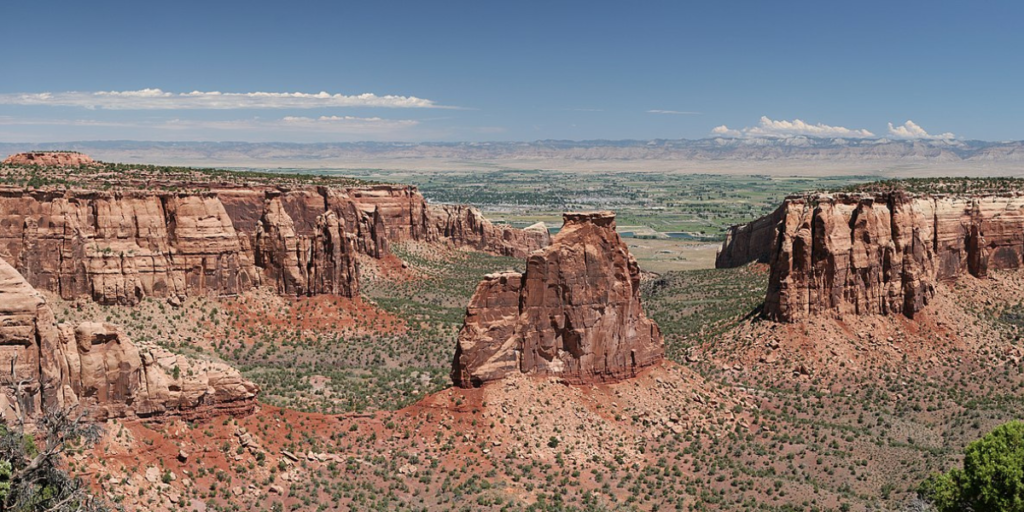
The Colorado National Monument Traverse starts at the park’s east entrance, near the town of Grand Junction. Hikers will follow a combination of established trails and off-trail routes to traverse the entire length of the monument.
As you venture through the monument, you’ll encounter a super-cool display of geology, with massive red sandstone formations, steep canyons, and striking rock spires. The terrain can be rugged, and hikers should be prepared for some scrambling and challenging sections. Carry a detailed map, a GPS device, and a compass to navigate effectively.
The monument has several designated backcountry camping areas, allowing backpackers to spend the night amidst the canyons. The desert environment of the Colorado National Monument can be harsh, with hot temperatures during the day and cooler temperatures at night. Be prepared for sudden weather changes, carry sufficient water, and protect yourself from the sun.
15. Sand Ramp Trail, Great Sand Dunes National Park
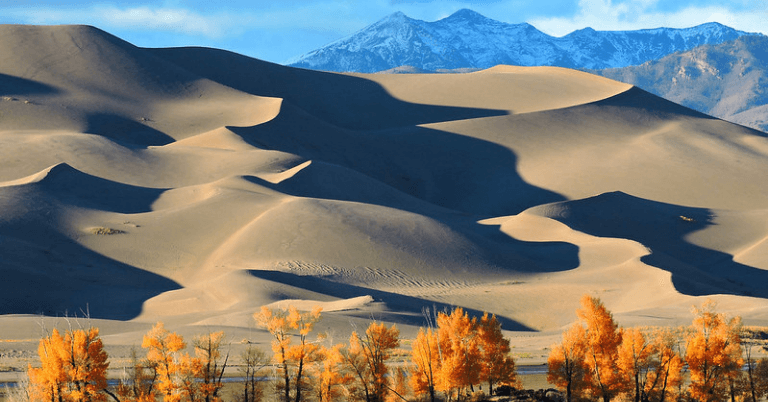
Backpacking the Sand Ramp Trail in Great Sand Dunes National Park is an adventure that takes backpackers through the tallest sand dunes in North America. This lesser-known trail takes hikers through diverse landscapes, from the sandy dunes to the rugged mountains—you won’t find that in many other places on the planet.
The Sand Ramp Trail begins at the Mosca Pass Trailhead on the east side of Great Sand Dunes National Park. While the trail mostly avoids dunes, prepare to get sandy. The Sand Ramp Trail rewards hikers with stunning vistas that provide panoramic views of the vast dune fields, the towering Sangre de Cristo Mountains, and the sweeping San Luis Valley.
Find Something Shorter Than a Backpacking Adventure
Looking for something more tame than a backpacking trip? Don’t worry—Colorado has that, too. Check out our guide to the Best Places to Camp in Colorado for a mix of glamping, yurts, campgrounds, and other backcountry adventures.
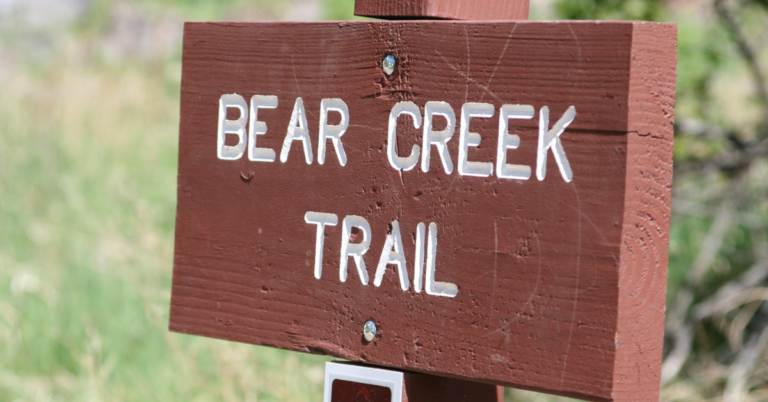
Learn everything you need to know about Lair o’ the Bear Park and the surrounding hiking and mountain biking trails.
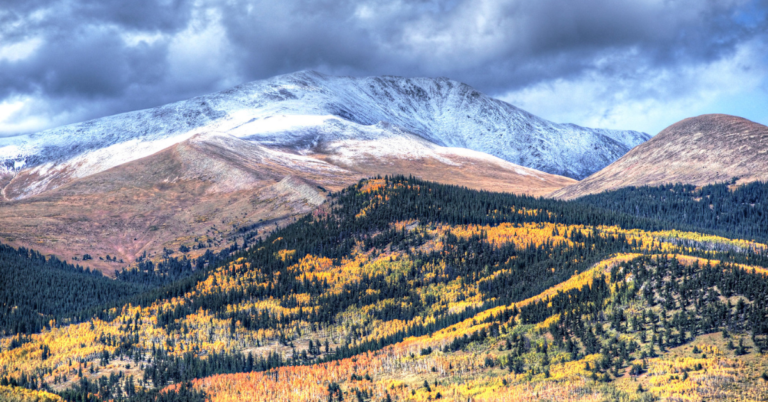
Discover Kenosha Pass with a comprehensive guide that covers hiking trails, camping, weather, and other considerations.
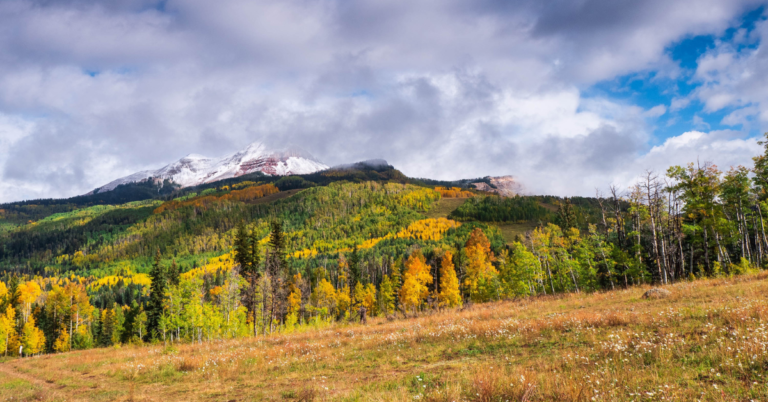
Discover the best hikes in Durango, from serene trails to challenging ascents. Experience breathtaking views and unforgettable adventures.
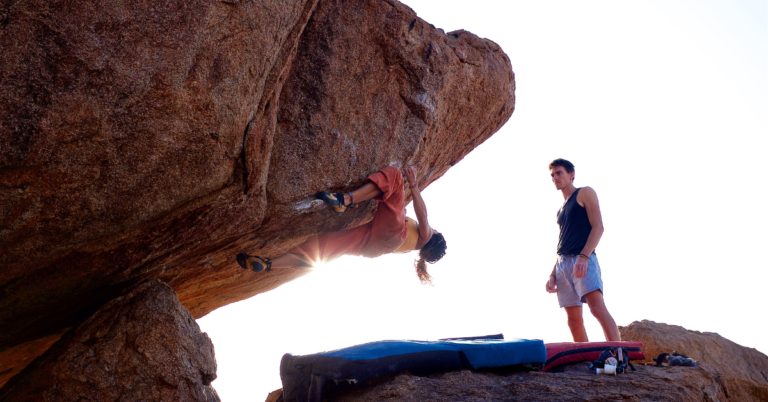
Discover the best bouldering in Colorado! Explore iconic venues and thrilling problems across the Centennial State’s rocky wonders.
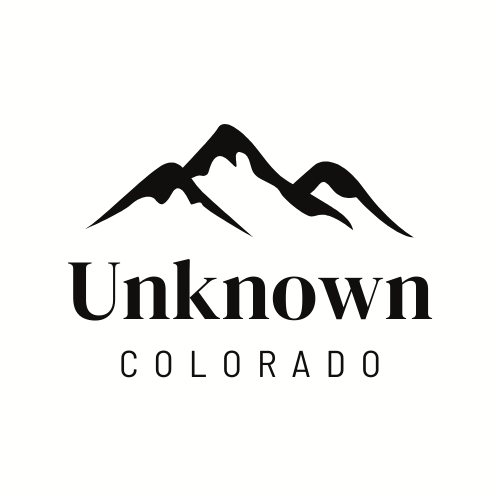
Join the email list!
Copyright © 2022 Unknown Colorado
- Skip to right header navigation
- Skip to main content
- Skip to primary sidebar
- Skip to footer
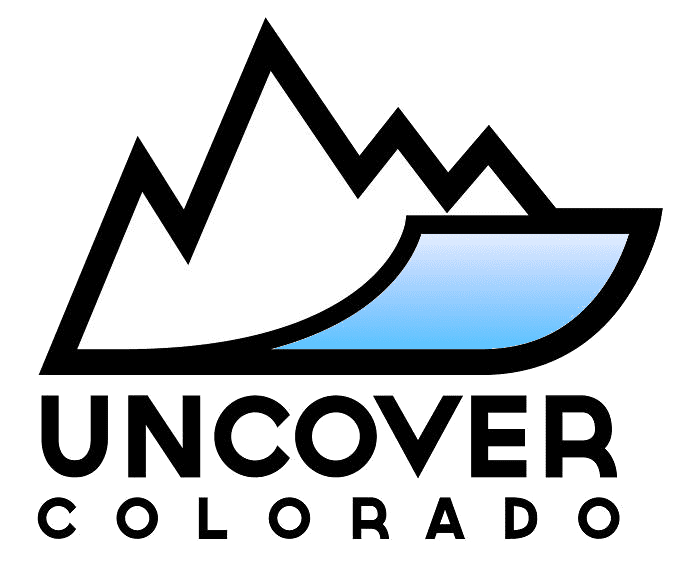
- Trip Planner
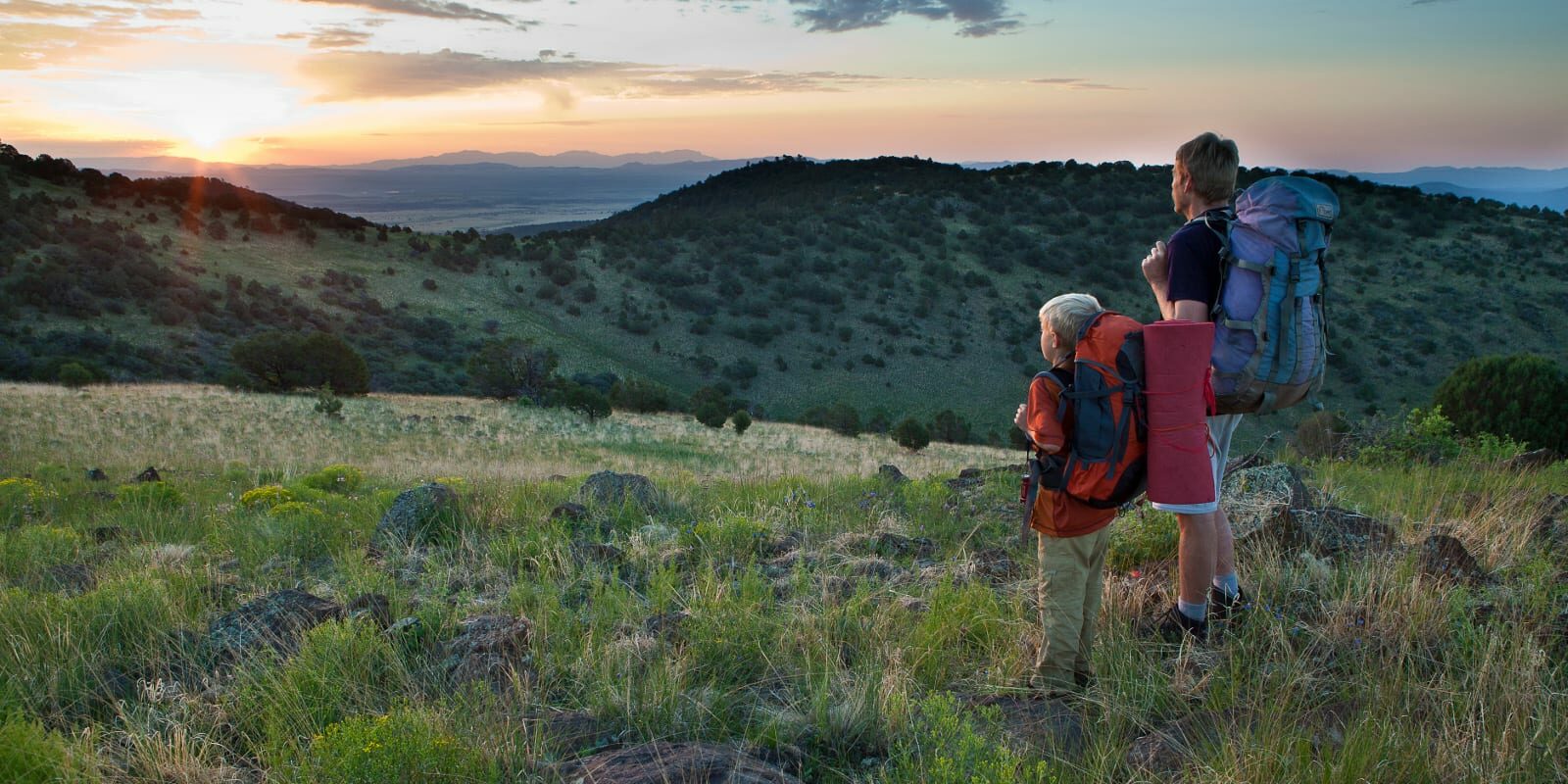
6 Outstanding Overnight Backpacking Hikes in Colorado
July 28, 2021 By // by Matt Thomas
Colorado is a hiker’s paradise, full of hidden overnight treks and magnificent multi-day trails. It’s among the best places in the world to be for stunning hiking trails.
Whether you’re looking for a simple day hike to do with your family or a longer jaunt for you and your pals, you’ll find it here. East to west, north to south, Colorado is covered in scenic hikes , some connecting to larger national trails. Summer is no doubt the most common time to hike, with the most popular trails usually being covered in visitors. But don’t let that deter you from visiting, there are plenty of fantastic trails that are could be yours, and yours alone. Colorado’s a big place after all.
Colorado’s Best Multi-Day Hiking Trails
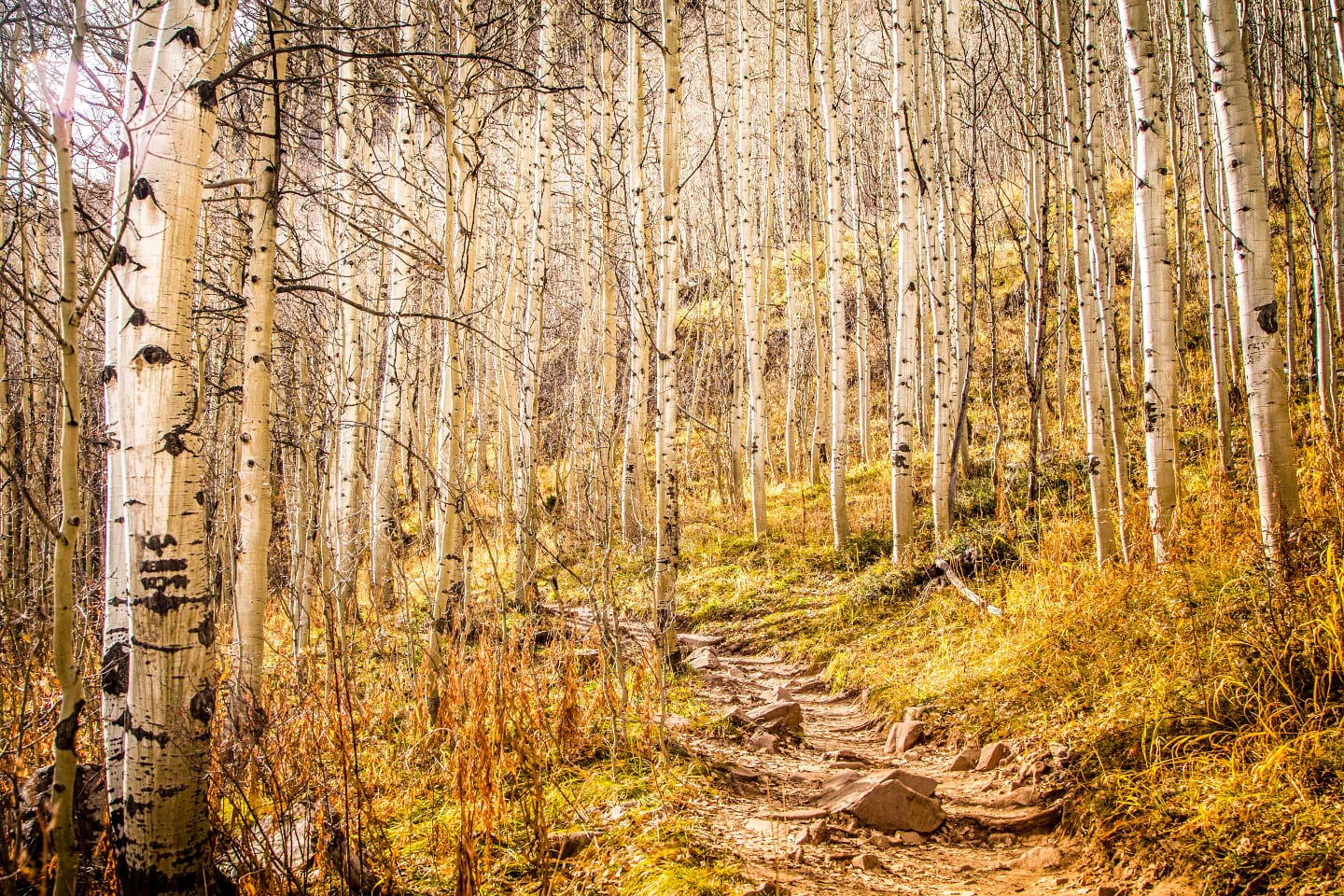
Thanks to a varied topography and the highest average elevation in the nation, Colorado provides a one-of-a-kind destinations for families and hikers from all over. You can stand on the Earth as high 14,400 if you’re atop Mount Elbert, our highest 14er . Or walk around at 3,315 feet if you’re probably not wading in the Arikaree River in Yuma County. We have ancient Anasazi ruins to explore, deep natural alpine lakes, forest teaming with wildlife, historic dinosaur and tree fossils. It’s an interesting place that keep’s you on your toes.
Easy day hikes in Denver and seemingly anywhere here are as easy to find as walking out your front door. Keep in mind too that nearly every single campsite I can think of has a hiking trail by it, so overnight hiking is also not too complicated. However, you must treat it with the utmost respect .
- Start out early each day, afternoon storms are common.
- If you are injured and solo, it’s best to stay on the trail and wait.
- Cell phone coverage is spotty at best.
- Be in a good shape.
- Trekking poles can help tired knees.
- Purchase a CO Outdoor Recreation Search and Rescue Card, CORSAR , if you don’t have a hunting or fishing license. It’s only $3 for a year or $12 for 5 years.
Backpacking is a worldwide passion, with people from all walks of life enjoying wonderful nights under the stars, coupled with early morning departures. Everywhere from the Swiss Alps to South America, you’ll find outstanding multi-day hikes. Oftentimes it’s beneficial to take a backpacking group tour and Colorado offers its fair share of choices for guided overnight hikes.
Here’s a look at the lesser strolled, multi-day hikes for your overnight pleasure. These are among the top multi-day hiking trails in Colorado:
Colorado Trail
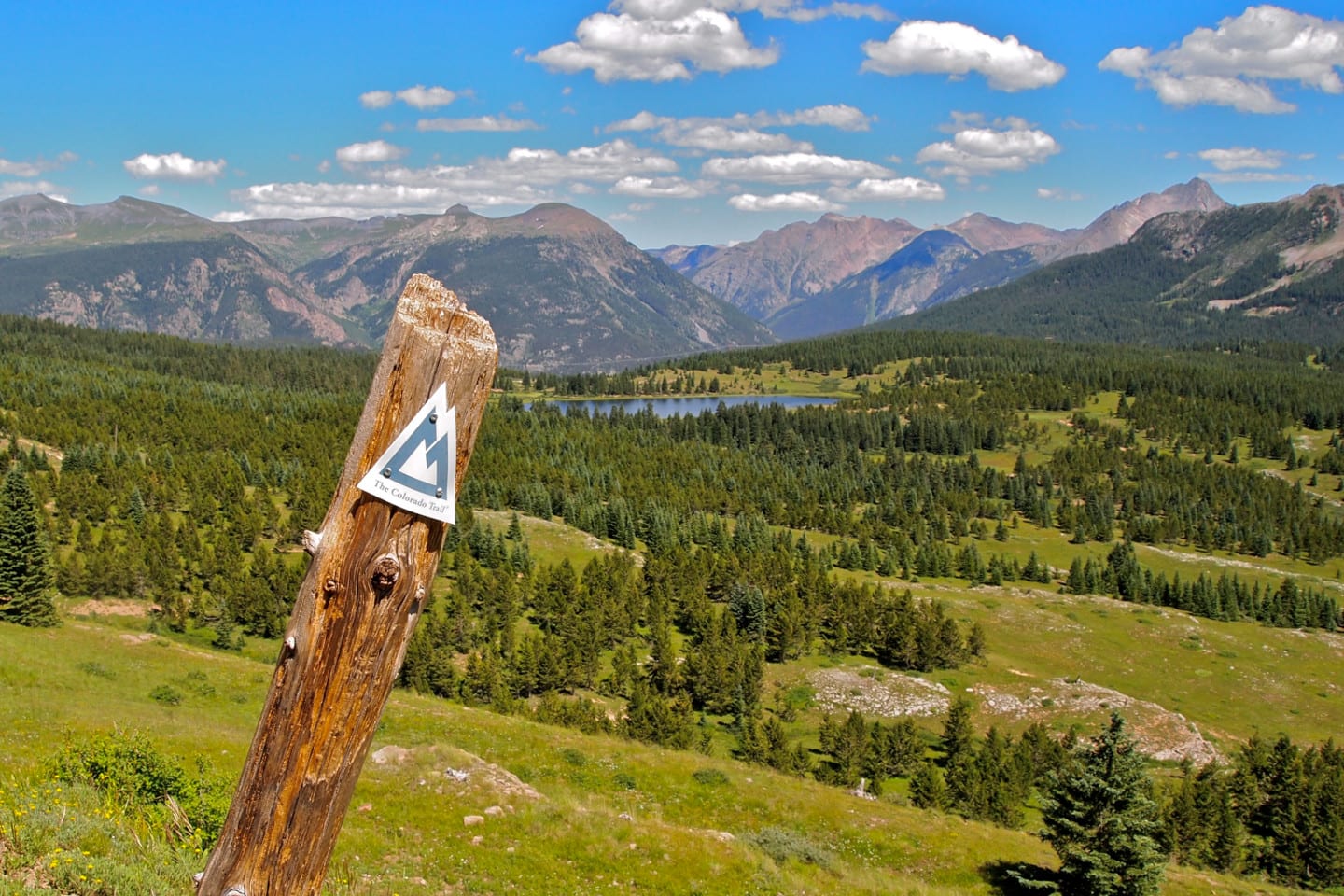
Day hikers will be able to access 28 segments of the Colorado Trail , each with check-in points. This state wide trail runs from Metro Denver’s Waterton Canyon to Durango . Elevations and difficulties of the sections vary. Backpackers too will have a splendid time hiking any bit of the 486 miles.
Allow yourself 4 to 6 weeks if you’re actually looking to conquer this life-changing hike. The average elevation is 10,300 feet to give you an idea. Optimal time to go is summer, late June to early September, and you should be relatively snow free. You’ll still see the white fluffy stuff on the mountain peaks. It’s also possible to choose any in-between segment for a two day or longer jaunt. It’s best to take a couple cars so you can park at the finish, just don’t forget your keys.
Continental Divide Trail
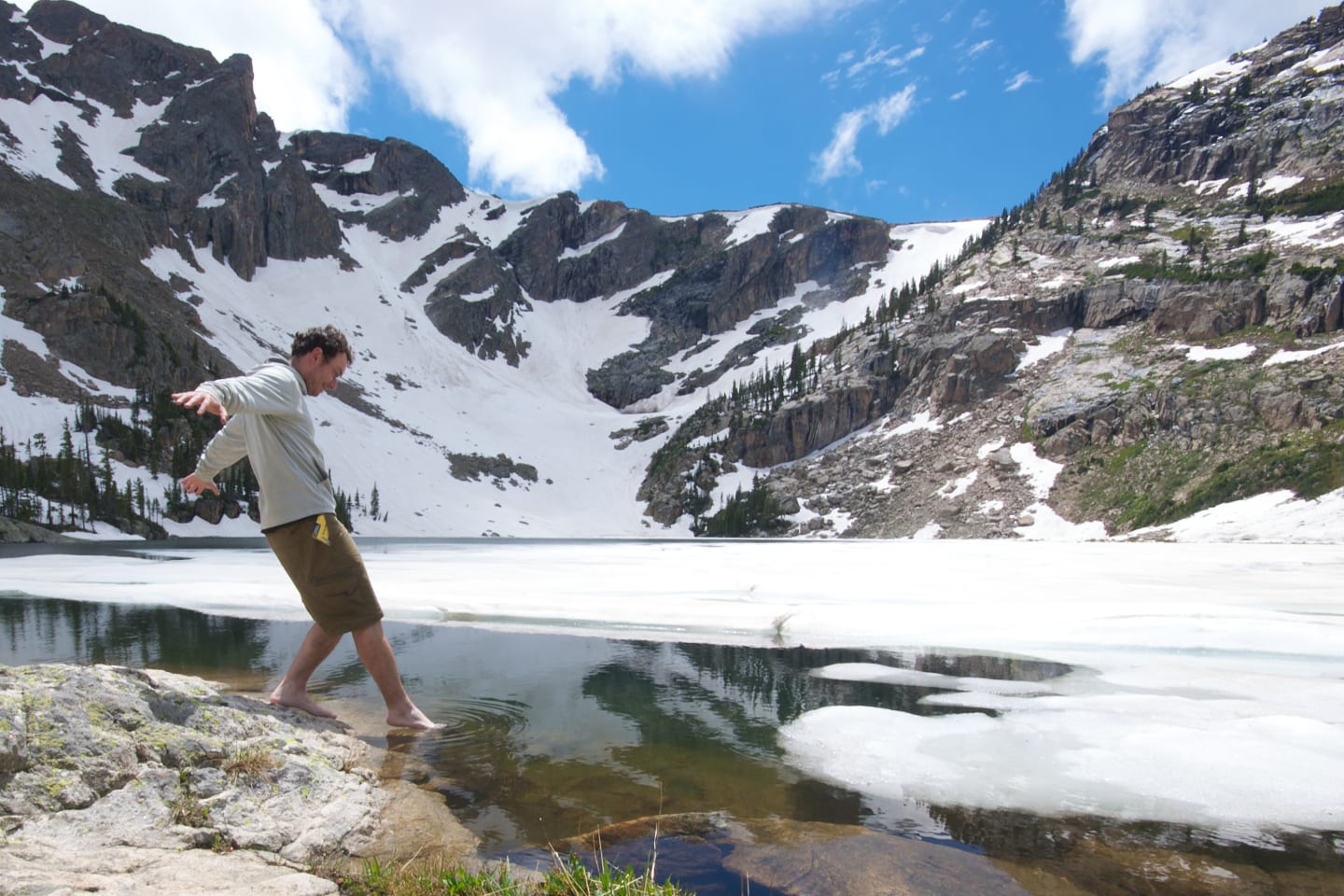
This nationally scenic trail is not for the feint of heart. It’s called the Continental Divide Trail for a reason, it traverses the spine of the United States. Traveling south to north or north to south, the choice is yours while your climbing high over some of Colorado’s tallest peaks. Established in 1978, it covers 3,100 miles from Mexico to Canada, passing 5 states.
The average through hike time for the whole shebang is 6 months at 17 miles per day. 740 of those miles of CDT are available in central Colorado . It’s highest point in the trail is Grays Peak in CO at 14,270 feet. Waterton Lake in Montana is its lowest point at 4,200 feet. More than 1,000 summits in Colorado top 10,000 feet on the CTD, making it one of the route’s best. It passes geological feature after feature, with a lot of historic ruins, like the Hancock ghost town .
Chicago Basin in Weminuche Wilderness

For a wild memory, consider this southwest hike that combines a trip on the Durango train . The destination is the Chicago Basin, which offers access to 3 area 14’ers. It’s unofficially called the backpacking train, which allows you to backpack from the train mid way to Silverton. At 499,771 acres, the Weminuche Wilderness is the biggest if the state.
Most overnight hikers to Chicago Basin will camp in the basin. It provides simple access to Durango & Silverton Narrow Gauge Railroad and Eolus, Sunlight and Wisdom peaks. So how does this work? Reservations should be made through the Durango Train ticket office to ensure seating. Let them know what you are doing. You can also save time and money by boarding form Silverton. If you have no reservations, you can may still be able to buy directly from the conductor at either Needleton or Elk Park drop offs.
How to flag the train:
The correct method is by waving your hands horizontally across your knees. When flagging the train in either direction, you must be on the east side of the tracks.
Maroon Bells Four Pass Loop
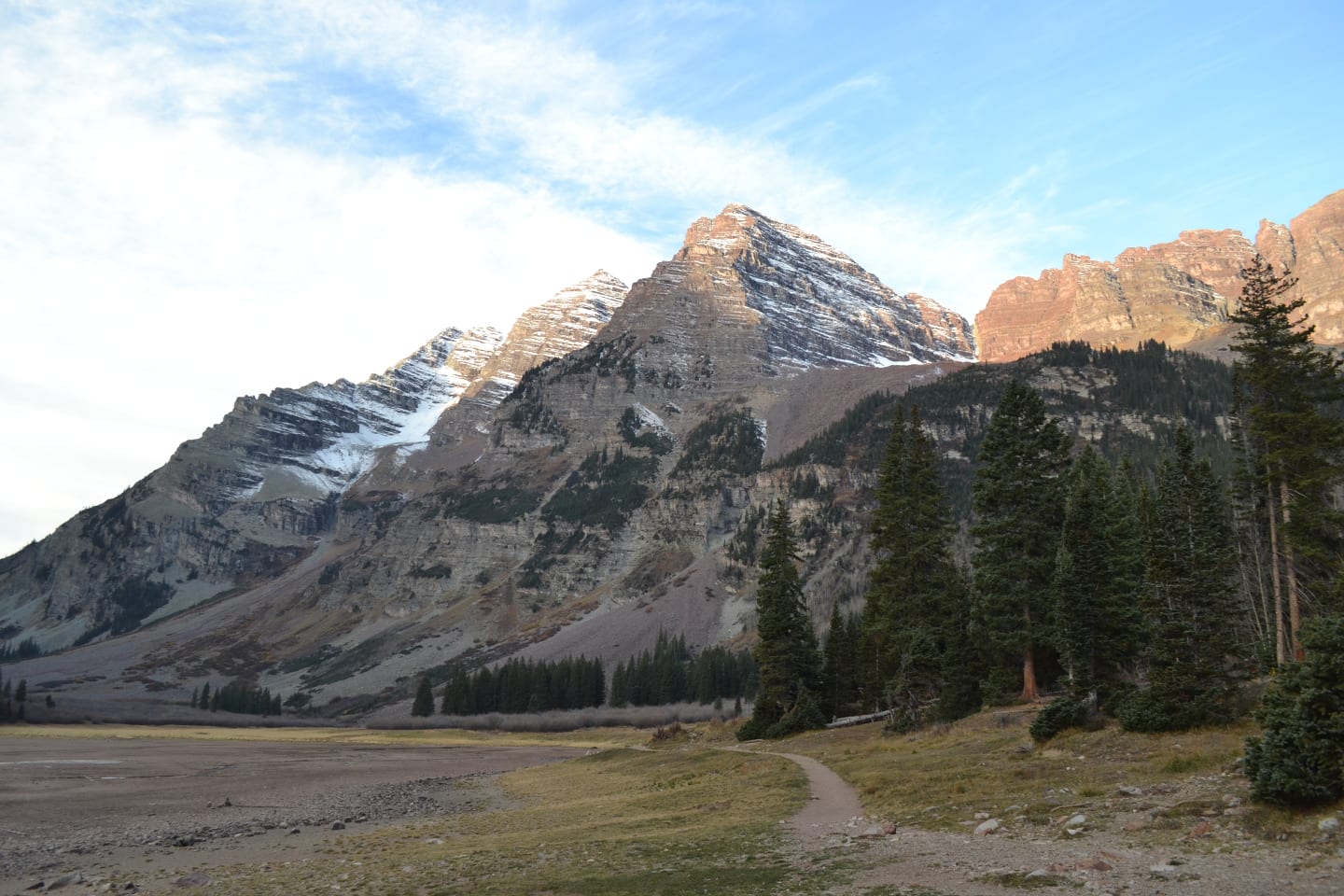
This is one of the best shorter multi-day hikes in the state. It begins from the famous Maroon Bells Scenic Area in Aspen Highlands. From here, it’s 28 miles roundtrip, with 8,000 feet of elevation gain between all the peaks. There is a special overnight parking area below Maroon Lake to start the hike. Take Maroon Creek Road past the Forest Station, after 8:30am requires a stop for a permit, to the parking area.
You can choose either way, clockwise or counter-clockwise, when you come to the fork in the road, AKA Maroon Lake. Backpackers generally take 3 to 4 days to complete the Four Pass Loop , which is best during summer. It’s rated as a difficult hike, beginning at 9,580 feet and peaking at 12,500 feet. Every party needs to self-register at the Trailhead and carry a copy of their free receipt. Good campsites are found on the hike.
Lost Creek Wilderness Loop
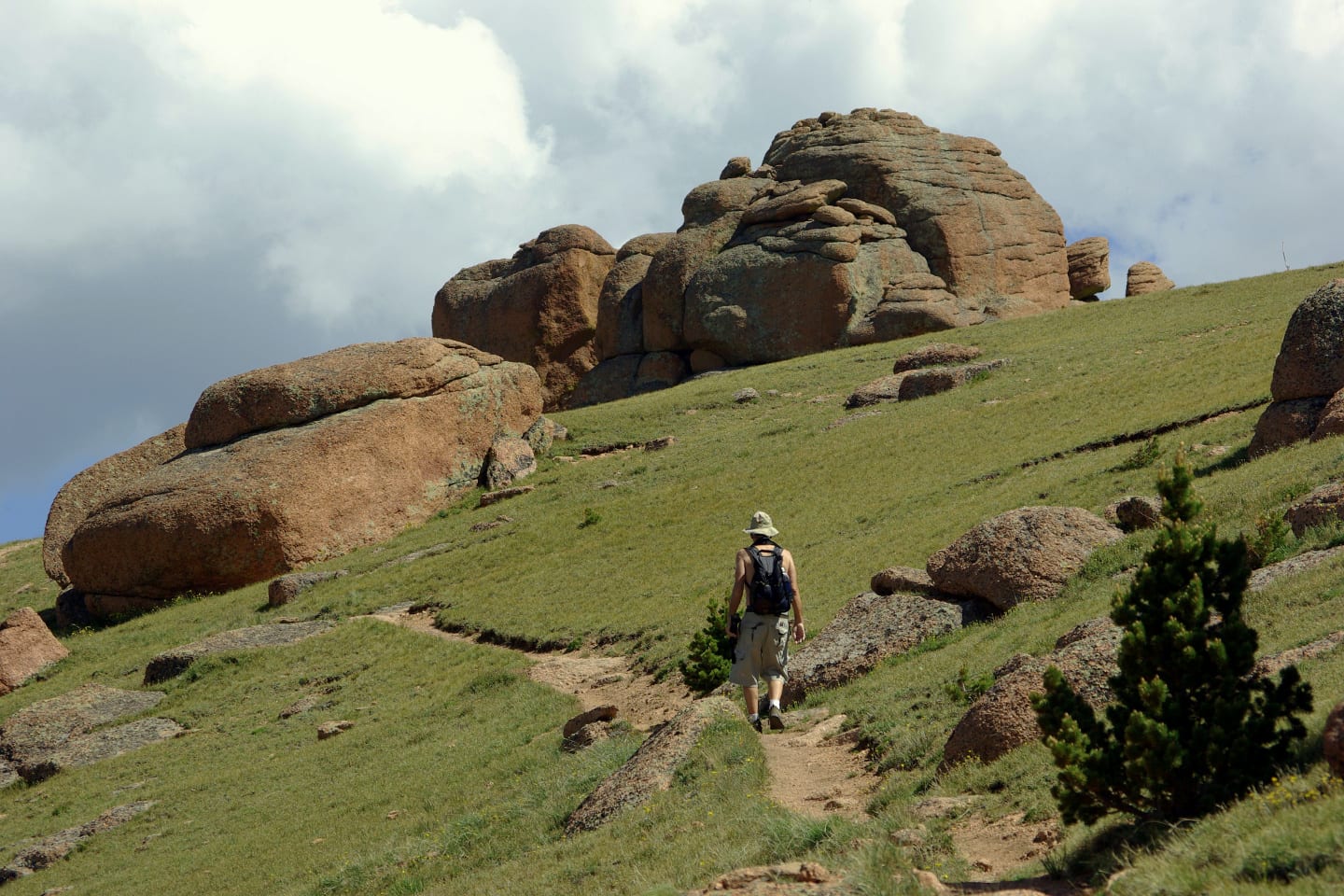
South Park is often overlooked at a hiking destination, especially multi-day treks. Upon first inspection descending from Kenosha Pass this high-elevation basin seems like a barren alpine desert. However, drive into it and you’ll soon realize its treasures, including elaborate rock formations at Lost Creek Wilderness , a myriad of rolling mountains forests, and Tarryall Reservoir, another gem for another day. Allow yourself at least a couple days to discover this magical place.
Situated close to Fairplay , you’ll begin from Goose Creek Trail, which winds through aspen groves and colorful meadows. Looking west affords splendid views of the Collegiate Peaks and Mosquito Range. Since it’s a loop you have a choice of going direction. One highlight is the Goose Creek drainage, which has granite spires and huge boulders. The total length is 34 miles, although you have the option of shaving off 10 miles or so with the McCurdy Park cutoff. Free dispersed camping is prevalent.
Devil’s Thumb to King Lake Loop
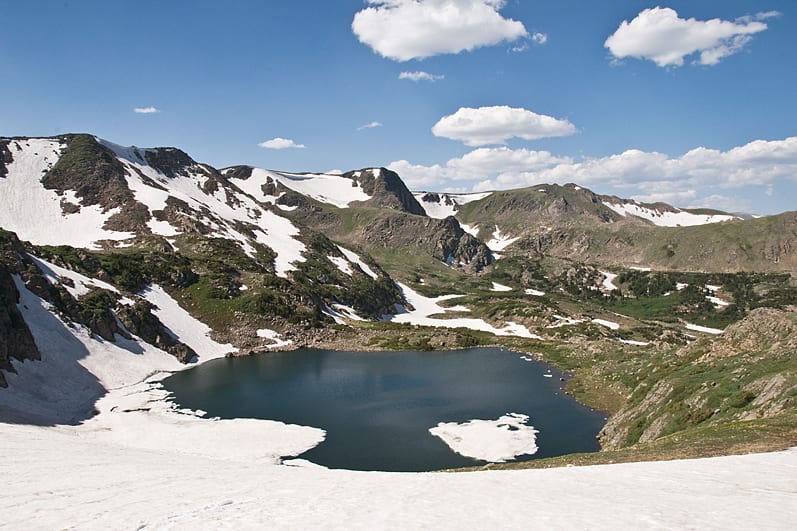
Denverites will enjoy this relatively easy-to-reach hike in Nederland . At only 16 miles many folks day trek this one too. The option is yours if you’ll spend the night, although once you see the views of the Indian Peaks Wilderness you’ll likely want to stick around for another day.
Begin your day at the Hessie Trail, which due to its Front Range proximity, does fill up quickly. The town of Nederland accommodates with a free shuttle to the trailhead. Remember to make the last bus home before it departs, if going this route. The first main point of interest, at over 5 miles up, is Devil’s Thumb Lake. If you do the whole loop, you’ll continue on Lonesome Trail to King Lake, then Devil’s Thumb Pass, completing the journey in 11 miles.
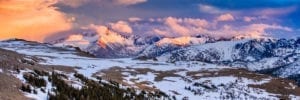
As you can probably guess, the list of Colorado’s top multi-day hiking trails could go on a longer time than we got. For a unique time, and probably better digs than you tent, consider hiking to the 10th Mountain backcountry hut system . These rental cabins are located throughout the national forest around Leadville, ranging in size and amenities, most fairly bare bones.
Do you have a favorite multi-day hiking trails in Colorado that you care to share? Please do in our comments. Thanks for reading!
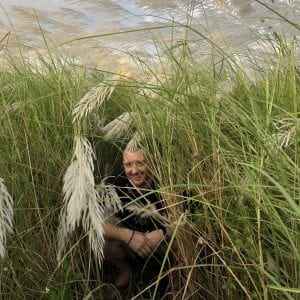
About Matt Thomas
Matt is an avid writer and explorer, who loves to showcase this wild, wondrous world. His favorite place to be is right here in the Centennial State.
Join our Colorado travel community

Get In Touch
- Privacy Policy
- Disclaimer—Terms of Service
Things To Do
- Travel Blog
- Colorado Activities
- Colorado Events
- Colorado Towns
- Colorado Hotels
- Colorado Restaurants
- Colorado Transportation
- Made in Colorado
Fall Activities
- Federal Lands
- Ghost Towns
- Hot Springs
- Ski Resorts
- State Parks
- Train Rides
You are using an outdated browser. Please upgrade your browser or activate Google Chrome Frame to improve your experience.

- Trip Styles
- Destinations
Best Beginner Backpacking Trips in Colorado
- All Inspiration and Destinations
- Canadian Rockies
- New Hampshire
- New Zealand
- North Carolina
- Vancouver Island
- Washington State
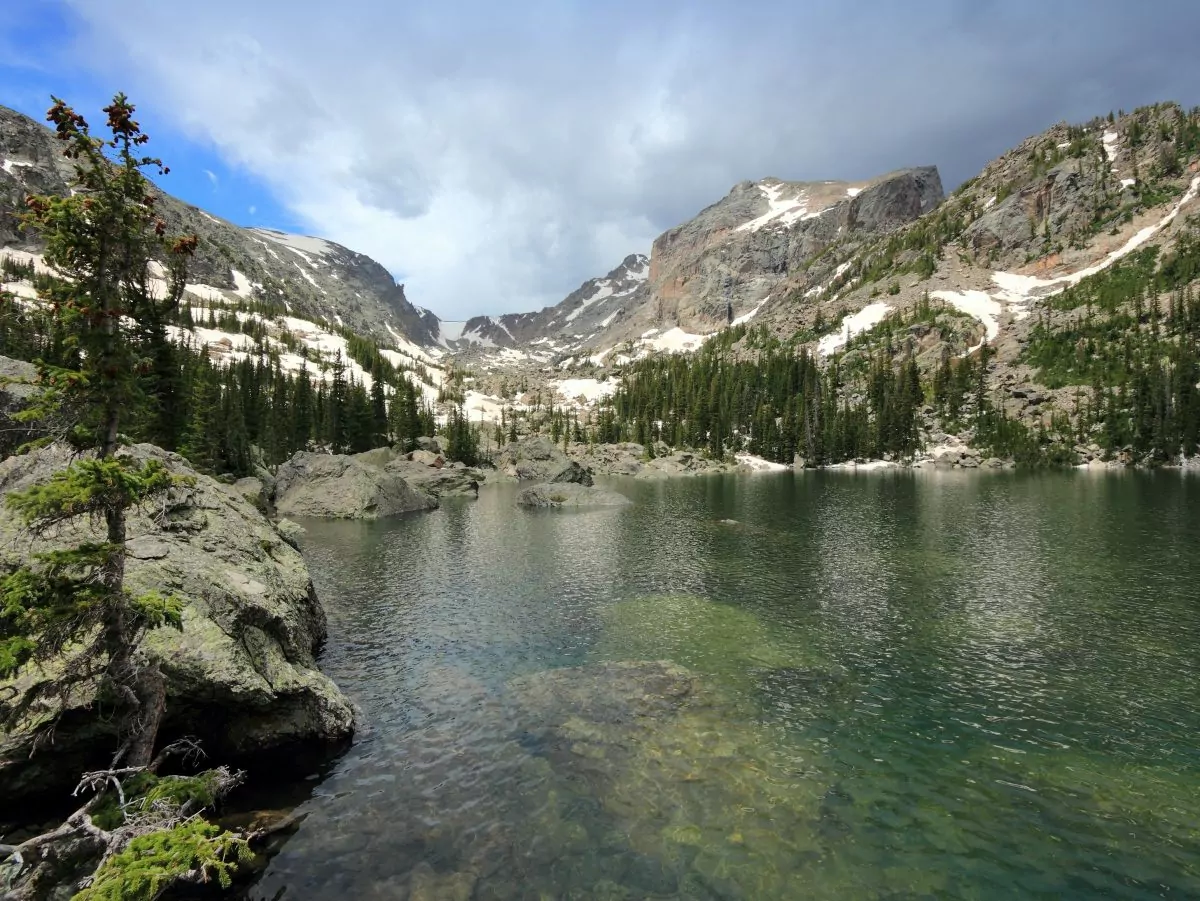
Colorado is home to over 22 million acres of public land to explore. You can find soul-refreshing waterfalls, hidden trails, and magical summit views all within a few hours’ drive no matter where you’re starting your trip. We have narrowed down the best beginner backpacking trips in Colorado all in different areas across this beautiful state.
These backpacking trips range from two to five days and explore the vastness Colorado has to offer while being perfect for any beginner!
Know Before You Go
Weather Warning : Colorado is renowned for its constantly changing weather. Even in the middle of August, weather can rapidly change from clear, sunny skies to rain, snow, or hail. Normally, you won’t be stuck in this weather for long, but being prepared will help you have the best time in the backcountry.’
Explore Colorado with Award Winning Guides
Preparation: Check out a backpacking checklist of our gear recommendations for your trip.
how to choose an appropriate trail
While each new backpacker is entering into the sport with a different set of skills and fitness levels, we’ve crafted a list of trips with all beginner backpackers in mind. These trips fit a few criteria:
- You’ll hike relatively low mileage for the length of the trip.
- The trails don’t have extreme elevation gain for the region (However, Washington mountains are known for being steep and rugged due to the intense amount of rainfall, so you can’t escape elevation gain here!)
- You’ll travel on well-maintained trails and avoid tricky terrain like boulder fields.
- You’ll get a lot of bang for your buck, whether in the form of peaks, alpine lakes, or lush meadows. (Many people neglect this crucial factor.)
However, backpacking is never easy (or else we’d never do it!) — so, if you want to maximize your fun, be sure to train for your backpacking trip .
1. Wild Basin, Rocky Mountain National Park
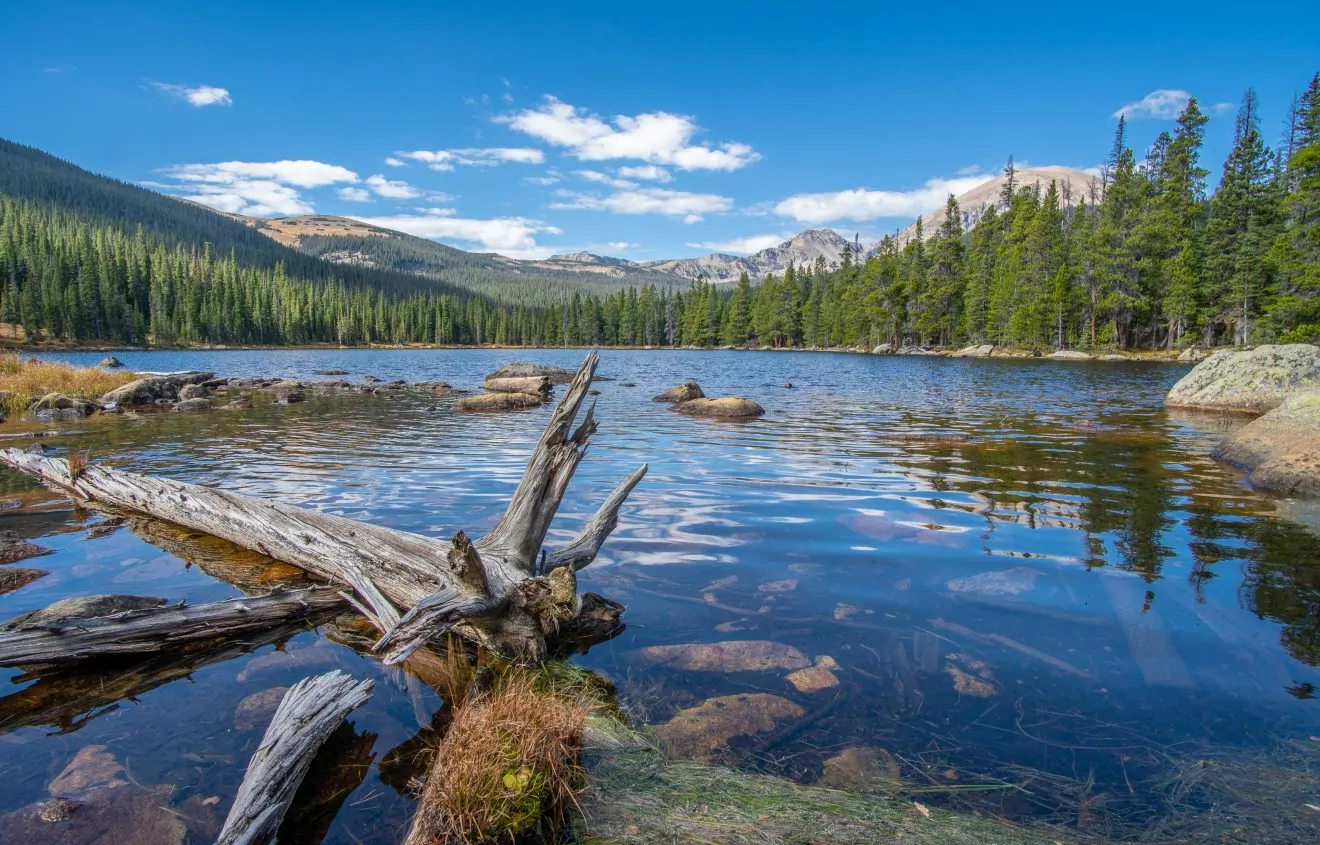
Mileage: 14 miles out-and-back | Length: 3 – 4 days | Elevation Gain/Loss: 2,500 feet
Hiking in the heart of the Rockies in Rocky Mountain National Park , you’ll explore one of America’s most rugged national parks. As you camp at Ouzel Lake, you will be staring up at Mt. Copeland, Mahana Peak, and the jaw-dropping Ouzel Peak. Each day, you’ll wake up captivated and ready to explore more of the terrain.
Why is it great for a beginner?
This trip is fantastic because you will witness the beauty of the Rockies while having the opportunity to customize the length to fit your fitness level. You can extend the mileage with hikes from camp or keep it simple by relaxing at Ouzel Lake. Along the route, you might catch sight of elk and moose, or get a glimpse of rock climbers high on the walls of Mt. Copeland. Whether you choose to fish in the lake or pack in extra hiking, you won’t be disappointed by this trip.
logistics and permits
Permits are required for any overnight trip in the Park from May 1 – October 31. The National Park Service has set up an easy outline to help you plan your trip. If you set up your trip with us , you’ll have the huge benefit of trekking with a guide who will take care of everything, including permits, for you!
Guided Trip Options
Wildland Trekking offers both a three and four-day itinerary to the Wild Basin area of Rocky Mountain National Park . This beginner-friendly backpacking trip is the perfect introduction to Colorado, and a great option for families looking to take their kids into the wilderness on an unforgettable adventure.
Hike to Wild Basin with a Guide
2. Crested Butte to Aspen via West Maroon Pass
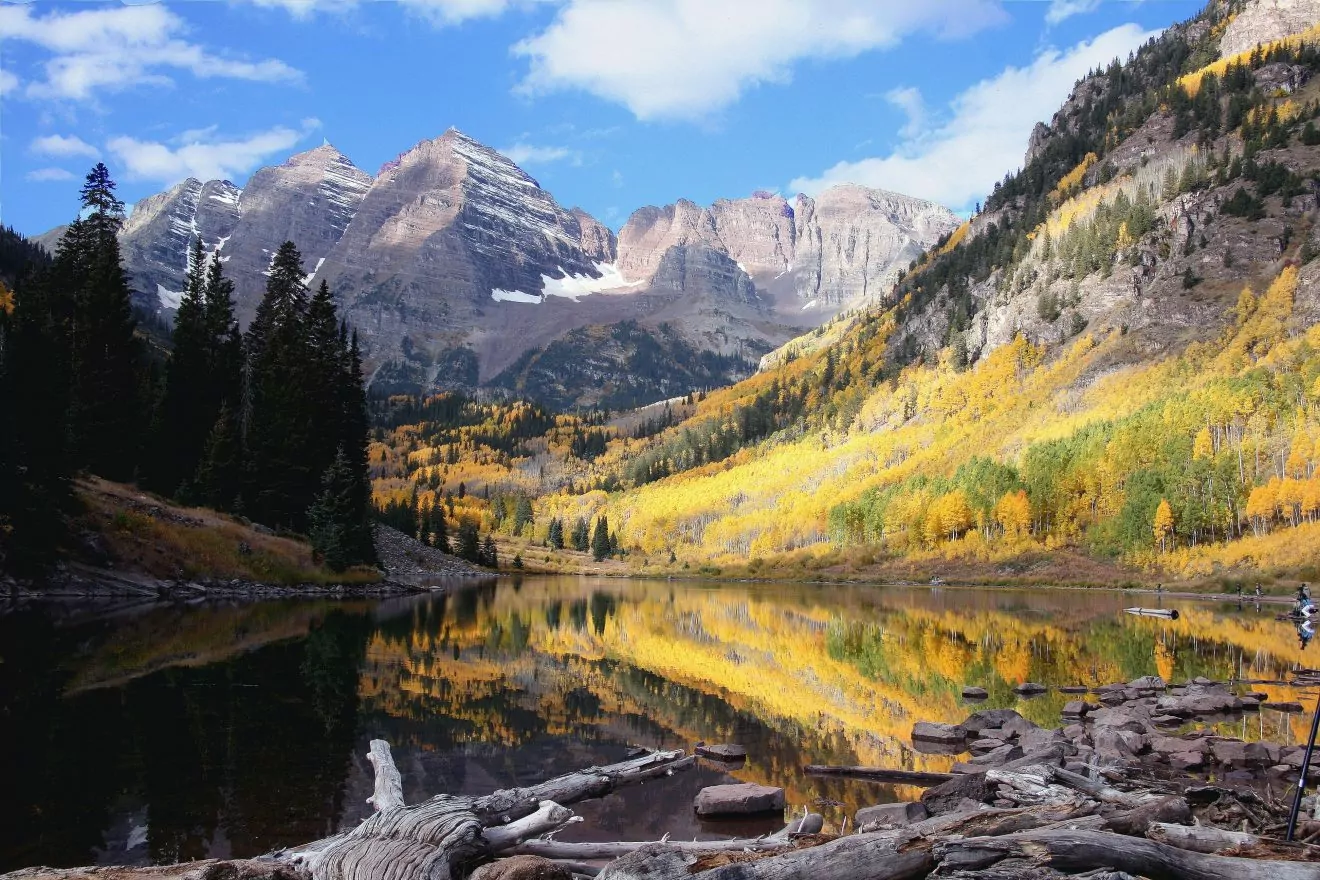
Mileage: 10.2 miles point-to-point | Length: 2 days | Elevation Gain/Loss: 2,400 feet
The West Maroon Pass hike leads you through some of the Mountain West’s most popular vistas. If you start from Crested Butte, you can enjoy the classic mountain town before heading out on your adventure. During the hike, you’ll hike over West Maroon Pass, getting spectacular views of the Raggeds and Maroon Bells-Snowmass Wilderness areas.
Going from one classic mountain town to another, you’ll get to experience amazing views, mountain lakes, a stunning ridgeline highpoint, and beautiful wildflowers. Once you pass over into the Maroon Bells side, you will be face to face to the most photographed mountains in North America! You can also reverse this hike — starting from the Aspen side — for an extra challenge (3,265 feet of elevation gain).
With the short distance of this hike, you will find plenty of help on the trail if it is needed. The access is simple and you only have to gain a few thousand feet before a smooth ending.
The tricky part of this Colorado backpacking trip? Arranging transport. This one-way trek requires a shuttle if you don’t plan on hiking double the mileage. Luckily, the Maroon Bells to Aspen Highlands Shuttle will take you where you need to go, but don’t forget to make a reservation! We recommend doing this in advance of your trip to make sure your transportation is locked in. However, you can park at the Crested Butte trailhead if you want to hike this as an out-and-back. (This would be a 20-mile, 3- or 4-day trip.) Parking is limited – we recommend using a shuttle service for the one-way option.
3. Chinese Wall Loop, Flat Tops Wilderness
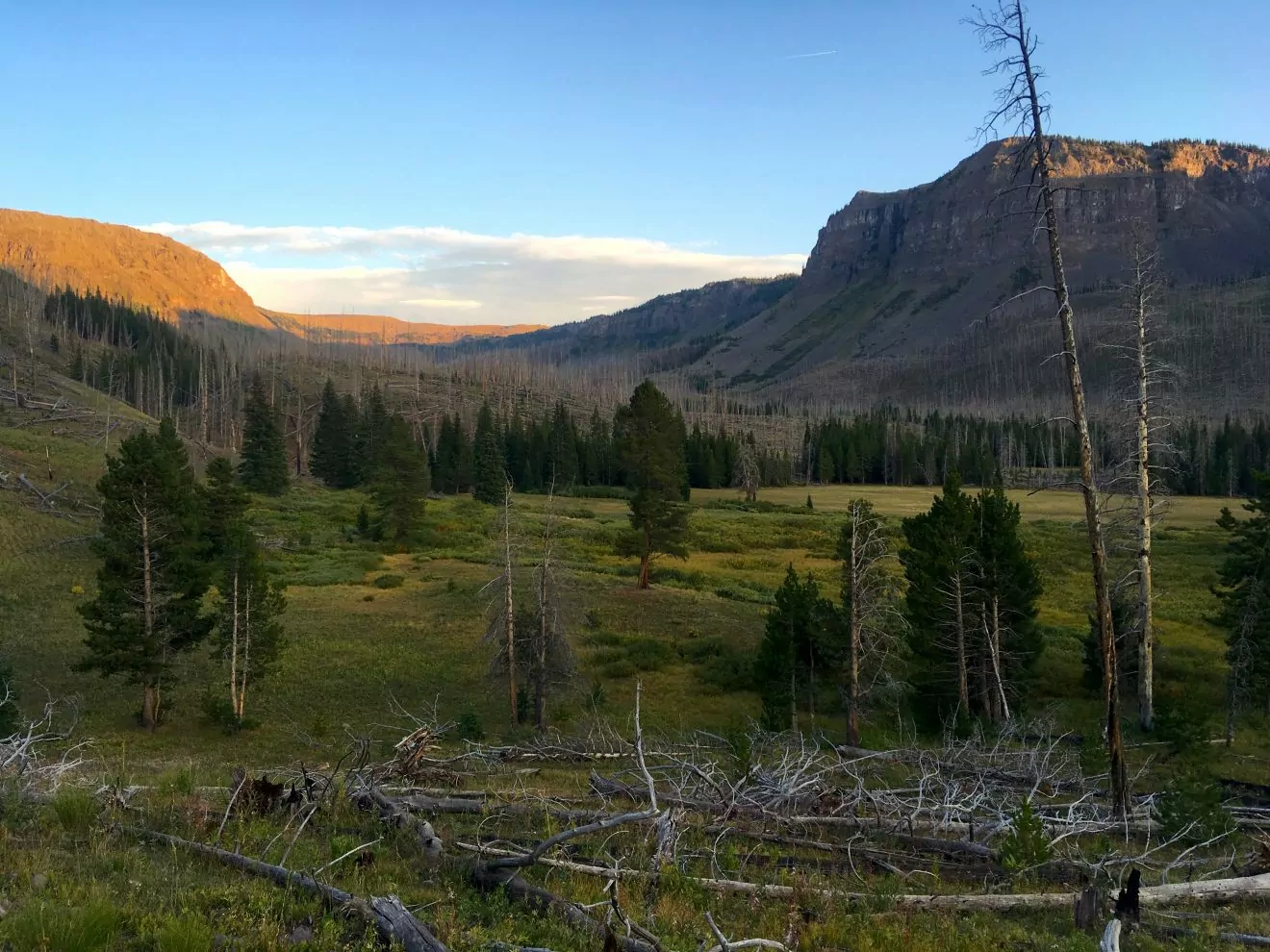
Mileage: 26-mile loop | Length: 4 – 5 days | Elevation Gain/Loss: 3500 feet
When Arthur Carhart first laid his eyes on this land in the early 1900s, it had a profound impact on him. So profound, in fact, that this trip led to the first designation of ‘wilderness’ area in our public land’s history. The Flat Tops Wilderness Area is home to over 100 lakes, some still unnamed, and beautiful views that will leave you craving its almost unmatched solitude in your future hikes.
On the Chinese Wall Loop, you’ll spend days on end exploring the Flat Tops at over 11,000 feet in elevation! The nights out under these stars will be burned into your memory as the reason wilderness areas exist in our country.
While the beginning of the Chinese Wall Loop has a strong uphill push, once you’re above treeline, the views will quickly make you forget the effort it took to get there. Although it is one of the oldest wilderness areas in our nation’s history, it is still relatively untrafficked compared to many other Colorado hikes. We highly recommend going with one of our professional guides for this trip to get the most of your experience.
With the ease of planning, the ability to add or subtract miles, and the low elevation gain once above tree line, this is a perfect trip for beginners to push for longer miles
Permits are currently not required for this hike. That being said, this land is in a designated wilderness area meaning there are specific restrictions that you must follow to ensure the preservation of the land. In wilderness areas, any non- foot transport (other than horses) is restricted. Also, leave the drone – or any flying craft – at home.
Wildland Trekking offers two backpacking trip itinerates in the Flat Tops Wilderness Areas. During the 2021 season, we will continue to offer our shuttle from Denver as a part of this trip!
Explore The Flat Tops with Award Winning Guides
4. Chicago Basin, San Juan Mountains
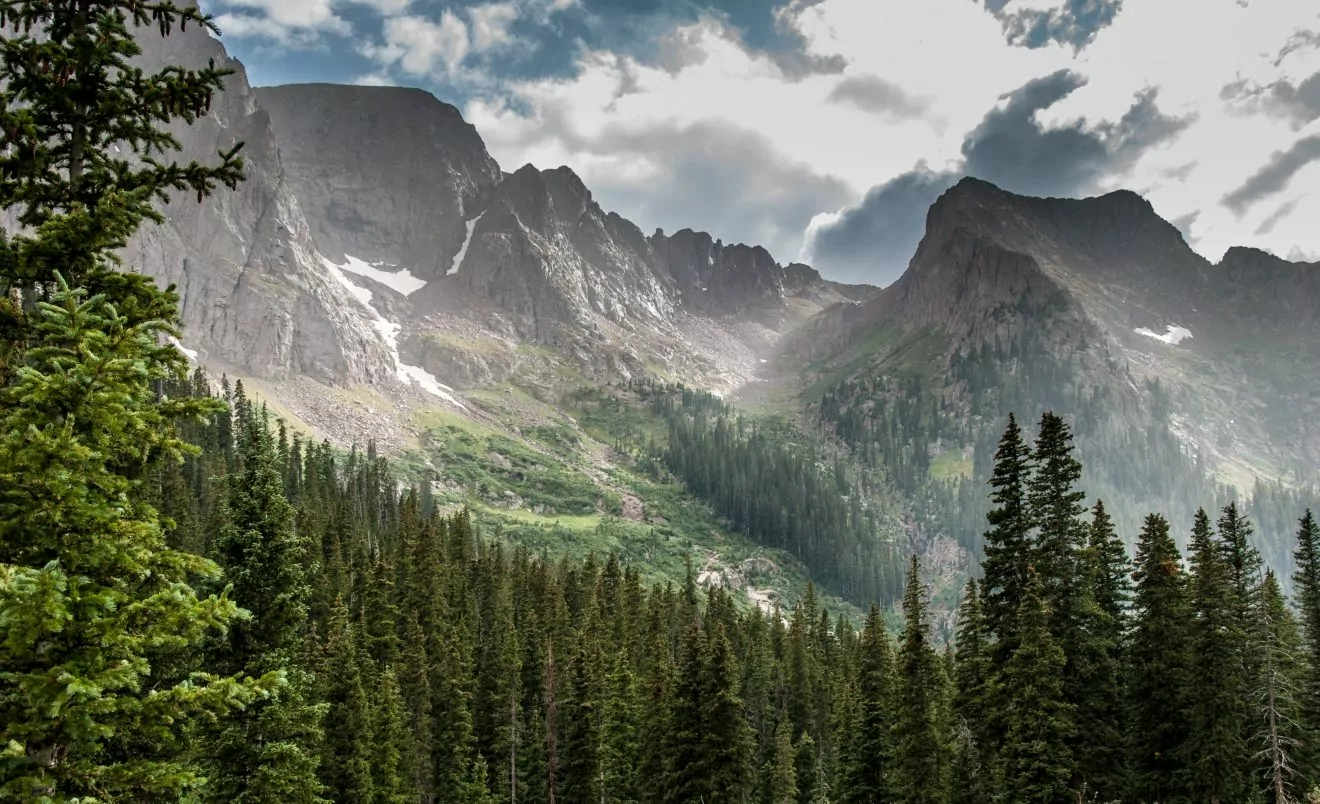
Mileage: 12 miles out-and-back | Length: 2 – 3 days | Elevation Gain/Loss: 2,800 feet
Chicago Basin is nestled in the heart of the Weminuche Wilderness in the San Juan Mountains of southwestern Colorado. This backpacking trip is a classic adventure as it requires a train ride to get to the trailhead! Most hikers use the Needle Creek campground as a basecamp to attempt one (or all!) of the three surrounding 14,000-foot peaks that loom above the basin. These are technical 14ers and are only recommended with proper training and gear — so best to just ogle at their majesty if this is your first backpacking adventure.
If you want a more moderate bonus challenge, hike to Twin Lakes in the morning to get immaculate views of the looming mountains surrounding the valley. While this is only a two-mile round-trip hike, it is steep, gaining roughly 1,200 feet in the mile up. However, you can leave your heavy pack at camp!
WHY IS IT GREAT FOR A BEGINNER?
The hike into the basin is beautiful and challenging. Gaining just under 3,000 feet to the basecamp, you’ll be hiking past mountain streams, quite sprawls of aspen, and thick pine forests. The camping area is well established with tent sites and water that is easily accessible. Park rangers regularly patrol the region to ensure the respect of the land and people using the area.
LOGISTICS AND PERMITS
As mentioned above, the biggest obstacle to planning this trip is setting up your train shuttle. The Durango & Silverton Railroad company communicates all the information you need, but you’ll want to give yourself a little buffer time to ensure you catch your ride!
Chicago Basin is a very popular, well-traveled area. Please take some time familiarizing yourself with the proper Leave No Trace principles to ensure proper land usage.
5. Lost Creek Loop
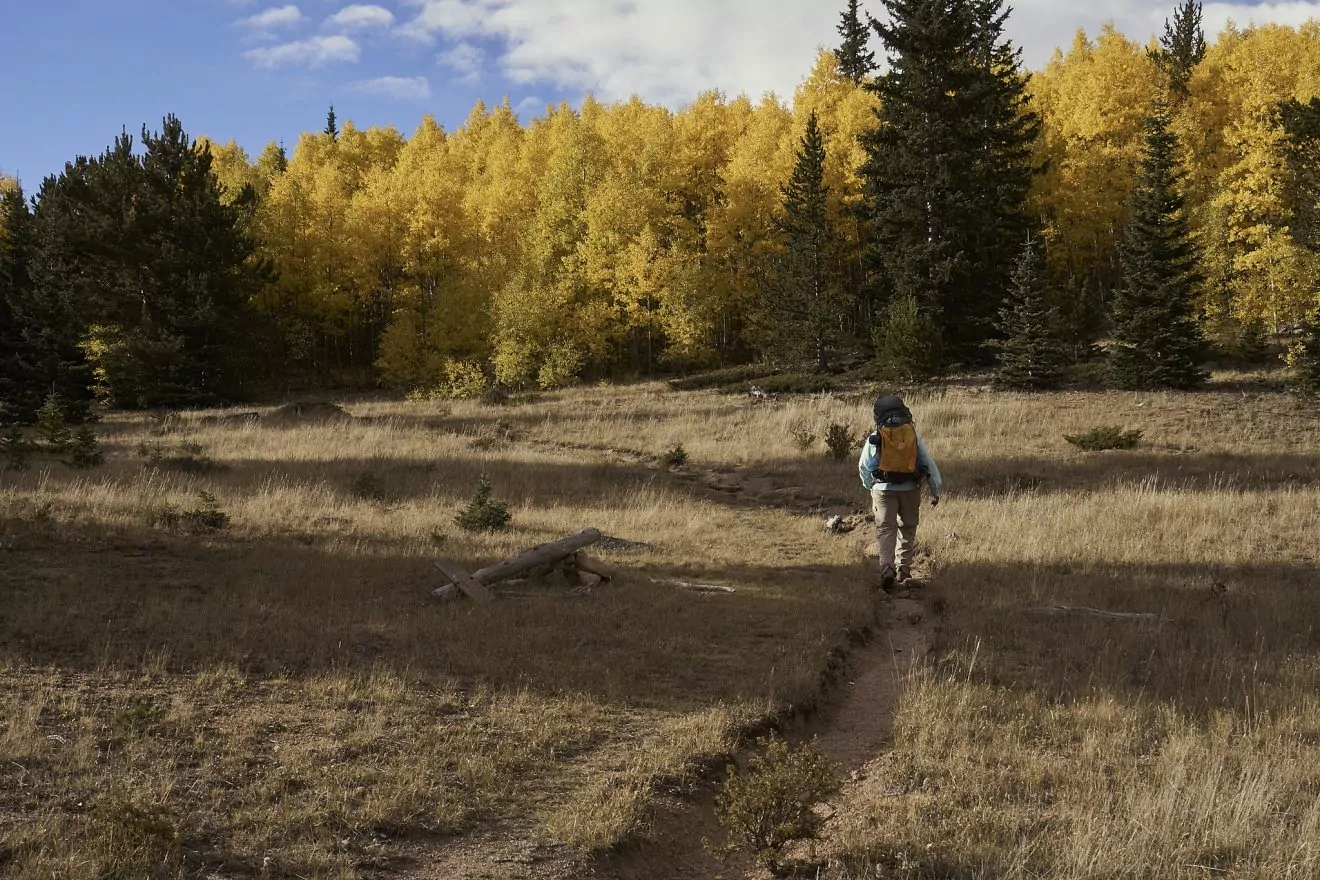
Photo Courtesy of Ryan Fonkert (CC BY-ND 2.0)
Mileage: 28.5 miles out-and-back | Length: 4 – 5 days | Elevation Gain/Loss: 5,300 feet
The Lost Creek Loop is the closest backpacking destination to the Front Range on our list! At just over an hour from the heart of Denver, this trail will give you a short drive time to get away at moment’s notice! At just under two hours from Colorado Springs, the trailhead lies tucked away from all major highways – the worry of traffic should never be a fear. It is a well-populated trail with ample water and well-marked trails.
The Lost Creek Loop is the longest trail on our list, but it is a great intro for those wanting to push past the classic three-day adventure. This area is well managed, making it a great destination for beginners. The water supply is abundant, and the trails are well-marked throughout the trip.
Located in the Lost Creek Wilderness Area in the South Platte, this trail features incredible views of the surrounding mountains and endless amounts of granite rocks to explore. While the trail is moderately strenuous, you’ll find an excellent ending for when those legs start to get tired. A smooth downhill exit greets you for the finish to this incredible loop.
There is a required self-issued permit that you’ll need to fill out prior to leaving the trailhead. These are simple and easy to obtain but allow the Forest Service to track user days. Plus, they provide information about your trip and can help a ton in the event of an emergency. As with all wilderness areas, please review the rules and regulations prior to departing to ensure the best wilderness experience for both you and the land.
All-inclusive Colorado Backpacking Adventures
About Kevin Fox
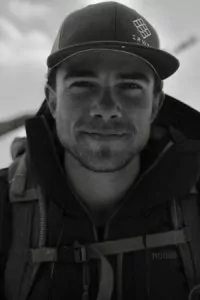
Kevin is an international adventure and fly fishing guide currently based out of Crested Butte, CO. On his days off, you might catch him exploring new areas on his skis or tying flies at his desk. You can follow him on Instagram @noreturnaddress.

wildland Wires
Sign up to receive our exclusive Wildland Wire emails and stay up to date with Wildland Trekking's promotions, discounts, contests, outdoor tips and tricks, trip reports and more!

5 Best Colorado Weekend Backpacking Trips
by Whitney Schuettpelz | May 22, 2019 | Adventure , Advice , Camping , Colorado , Feral | 0 comments
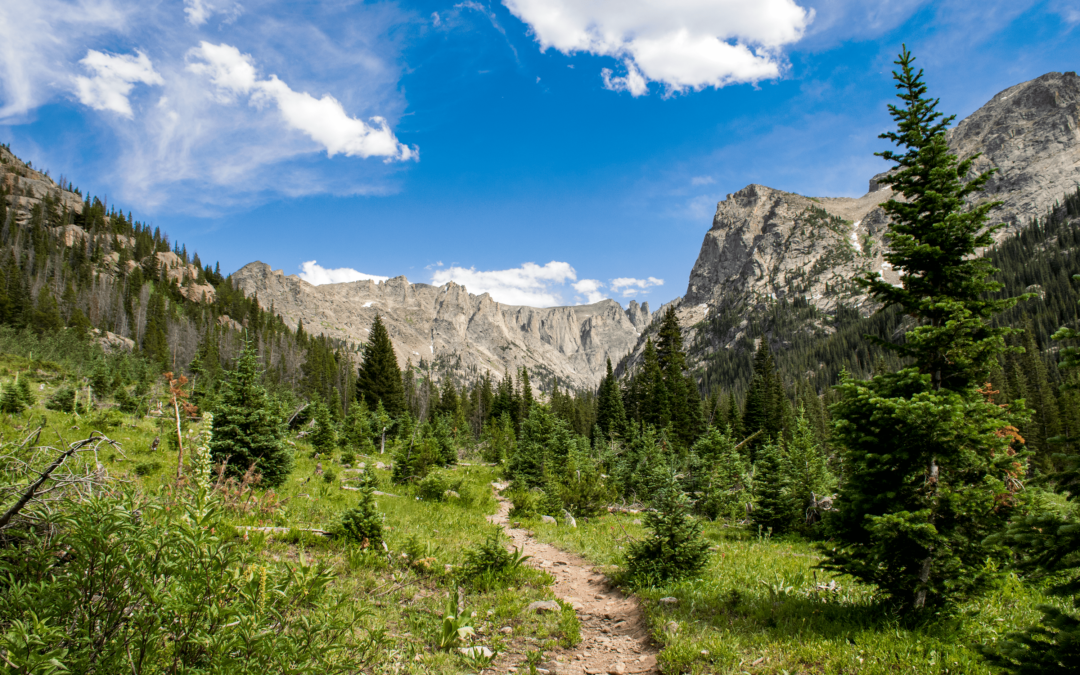
Are you looking for a great weekend backpacking trip in Colorado? Start here! This is our go-to list of the best backpacking trips that are the perfect length for 2 to 3 days and feature alpine lakes, fishing, wildlife, wildflowers, and waterfalls.
1. Chicago Lakes – Echo Lake Trailhead, Idaho Springs | 1 Hour From Denver
Why it Made the List: fantastic trail close to Denver Miles: 9.8 miles roundtrip Elevation Gain: 1,116 feet net (2,392 feet roundtrip)
Chicago Lakes Trail makes for a fantastic but long day hike or perfect 2-3 day backpacking trip. This sometimes steep and rocky trail starts at Echo Lake Park south of I-70 in the Mt. Evans Wilderness Area and ascends to a pair of high alpine lakes below Mt Evans (14,265′), Mt Spalding (13,842′), and Mount Warren (13,307′). Hikers often see moose, elk, bighorn sheep, and mountain goat in addition to a valley touched by the 1978 Idaho Springs Reservoir Fire. Look southwest while hiking in the valley above the reservoir during the fall for bright yellow aspens against a clear blue sky.
Camp at the lower of the two lakes (psst, there is an amazing campsite near the small waterfall between the two lakes) and spend a day exploring the upper lake, fishing cutthroat trout, or continue up the trail to Summit Lake. You can even summit Mt. Evans from here if you’re up for the haul. Please note: the hike out is a bit tough as there is considerable elevation gain on the return to the trailhead.
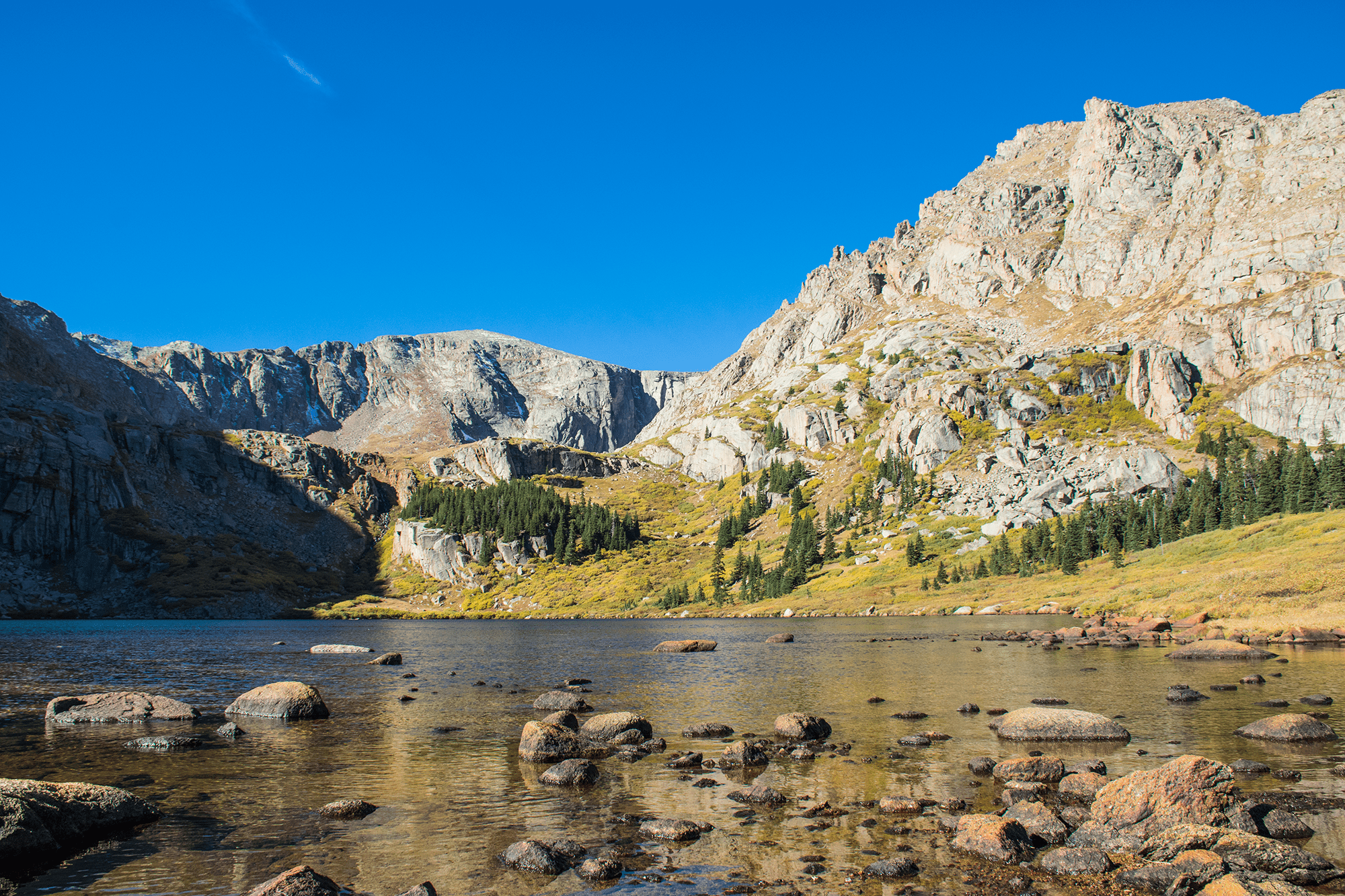
This Colorado backpacking guide was brought to you by Gregory , the makers of backpacking packs that fit comfortably and fit all of your gear for your next backcountry adventure.
It’s impossible to think of Colorado without picturing the Rocky Mountains. The steep and stunning landscape of Colorado has brought skiing fanatics to its infamous slopes for decades. More recently, however, Colorado has become one of the most moved-to states in all of the country partly due to its year-round adventure access. One of the most holistic, soul-filling and challenging ways to experience this beautiful state is through backpacking.

The summer and fall in Colorado offer particularly glorious views and conditions, so for those seeking to explore more of Colorado’s wilderness areas, we’ve identified some of our favorite backpacking trips.
Whether you call the Centennial State your backyard or you’re planning an adrenaline-filled vacation, these Colorado backpacking trips will keep you bright-eyed and challenge your athleticism. These eight trips vary in distance, difficulty and seasonality, so make sure you are prepared for your Colorado backpacking trip.
1. Conundrum Hot Springs

Image from The Dyrt camper Anthony P.
Trailhead: Conundrum Creek Trailhead Distance: 16.7 miles Elevation Gain: 2,791 feet Route Type: Out and Back Season: June – October Permit Required?: Yes (year round)
This out-and-back trail has become wildly popular in the past few years and as a result, now requires a permit. Though popularity is a deterrent for some backpackers, backpacking to Conundrum Hot Springs is well worth the hype. Now that this year-round permit system is in place, solitude and peace have been restored to this gorgeous valley.
The 102-degree hot spring is the obvious highlight feature of this backpacking trail, but you’ll find plenty of beauty in the 8.5 miles to the springs. While climbing 2,791 feet, you’ll pass a myriad of wildflowers in July and shimmering, golden aspens in September and early October. You may even see moose, bears or marmot. Bear canisters are required for this trail as well.
The climb to the springs is difficult, so be prepared for a challenge and remember to pack light, and condense your items as much as possible. The Rockies are infamous for erratic weather, so be prepared for rain or snow depending on the time you go and pack warm layers for night time. There are three major creek crossings, two of which have bridges built for you and one that will require you to cross it. That said, there are plenty of water resources along the trail, but remember to be carrying at least two liters at any given time.
Once you reach the hot springs, you’ll have the opportunity to soak in the steamy pool with your friends and make some new friends if you’re so inclined. This soaking pool is clothing optional, so be prepared to see those embracing nudity or trying it out for yourself. You can enjoy the panoramic views of the breathtaking valley below and enjoy the presence of the towering Cathedral, Conundrum, and Castle Peaks. There are 20 campsites with varying group sizes.
Post Hike: Try Hops Culture in Aspen for a beer and pizza or a juicy hamburger.
2. Four Pass Loop
Trailhead: Maroon-Snowmass Trailhead Distance: 27.1 miles Elevation Gain: 7,327 ft. Route Type: Loop Season: No Permit Required?: No
This Colorado backpacking trip is true to its name – it skirts over four high-elevation passes in 27 miles in the striking Maroon Bells Wilderness and Elk Mountains. This trail is a favorite among Colorado residents and is typically done as a three to four-day backpacking trip but can be completed in one day as a challenging trail run. This loop is particularly popular in the fall, as the aspens are innumerable and entrance hikers with trails lined in gold, red and orange hues. This is a more challenging route, and best for intermediate to advanced backpackers.
You will begin at the trailhead at Maroon Lake, which you can access via your own personal vehicle before 8am or after 5pm. If you want to access the trail during those hours, you’ll have to take a shuttle and pay a $10 entrance fee. If necessary, hikers can camp at West Maroon Portal before beginning the journey.
Along the journey, you will witness incredible alpine scenery as you climb four 12,000+ foot mountains, walk among oodles of wild flowers or fall foliage, depending on the season. Be prepared for challenging terrain and many uphill battles. The incredible scenery will keep you motivated, but be aware of your skill level and be prepared for altitude sickness if you are sensitive to high elevation hiking.
Post Hike: Grind in Glenwood Springs offers gourmet burgers for meat enthusiasts and vegan/vegetarians alike.
3. Zirkel Circle
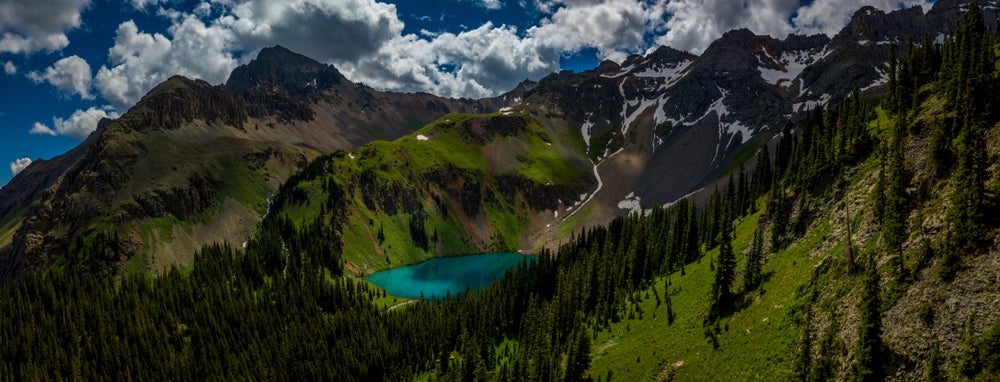
Trailhead: Slavonia Trailhead Distance: 10.3 miles Elevation Gain: 2,463 ft. Route Type: Loop Season: June – September Permit Required?: No
Northern Colorado are still somewhat off the beaten path, so trails will likely greet you with more solitude and silence than backpacking trips in the Front Range of Colorado. This trail near Steamboat Springs, Colorado can be done in a day or done as a short, two-day backpacking trip. The Zirkel Circle is a favorite among Northern Coloradans and is only moderately trafficked. The highlight of this trail is easily Gilpin Lake, a shimmering lake surrounded by rugged mountains, a view that easily mimics alpine scenery of Switzerland. The lake is about half-way along the trail, making it an ideal place to camp. Hikers must camp at least ¼ mile away from the lake.
We recommend hiking counterclockwise. Gold Creek Lake is a great place to stop for lunch on the way to camp at Gilpin Lake. Additionally, hiking counterclockwise has a lower sustained grade. Along the trail you’ll encounter lakes and streams that are fantastic for fly fishing. You may also encounter black bears, so a bear canister is recommended, but not required.
Post Hike: Aurum in Steamboat Springs is great for fancy cocktail to treat yourself for all of the hard work.
4. Venable-Comanche Trail and Phantom Terrace
Trailhead: Alvarado Trailhead Distance: 12.3 miles Elevation Gain: 3,884 ft. Route Type: Loop Season: May – November Permit Required?: No
Located in the heart of the Sangre de Cristo mountains, this Colorado backpacking trip is popular in fall as the trail winds through aspen groves that famously boast their shimmering golden leaves come September. Bring your fishing pole and fish in Venable Lakes or Comanche Lake. This trail offers sweeping views of The Sangre de Cristo Mountains, a rugged and narrow range in Southern Colorado.
You’ll begin at Venable Trail and have the option to camp at Alvarado Campground before hiking or go ahead and begin making your way. Make sure to look for open, flat areas where it looks like campers have camped before for best Leave No Trace practices. On the trail, you’ll skirt along the very narrow trail known as Phantom Terrace. Its spooky name originates from the trail being difficult to see and the seemingly steep drop off from the trail. But the trail is wider than it looks once you’re on it. Starting on the Venable Lake side of the loop (counterclockwise) will allow you to go down the Phantom Terrace, rather than making the hefty climb up.
Post Hike: Chappys Mountain View Bar & Grill in Westcliffe has mouth-watering burgers and steaks to enjoy the flavors of Colorado’s western heritage.
5. Baker Gulch to Bowen Gulch Lake
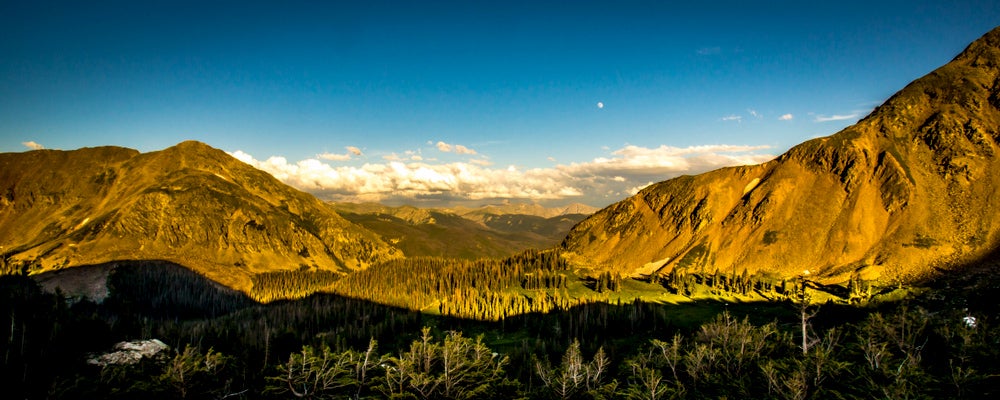
Trailhead: Bowen/Baker Trailhead Distance: 19 miles Elevation Gain: 4,757 ft. Route Type: Loop Season: April – October Permit Required?: No
This dynamic, challenging and scenic Colorado backpacking trail is great for beginner backpackers interested in a higher-mileage backpacking trip. The trail begins in Rocky Mountain National Park , so you will have to pay the $20 entrance fee if you do not have a pass. You’ll drive along the tallest road in the U.S., the Trail Ridge Road, which offers incredible views of the Rocky Mountains by vehicle. Once at the trailhead, hikers have the opportunity to trek over a 13,000 foot mountain, brush up against the abundant, knee-high wildflowers, witness a moose mother and baby, and catch a fish for dinner.
Anyone interested in backpacking will enjoy this trail, but a fly fisherman will be particularly delighted by the casting opportunity on the trout-laden alpine lakes. Parika Lake and Bowen Lake offer some of the best early-season cutthroats of the season in the Never Summer Wilderness, so make sure to bring a lightweight rod and cook up a fresh-caught dinner.
Moose are another fauna that roam proudly and in large numbers in the Never Summer Wilderness. You will likely see a mother moose and her baby or a small herd of male moose. Be sure to be wary of their presence and follow moose safety protocol . Do not bring your pets on this trail, as they can cause moose to become aggressive.
A great place to camp or enjoy a bite to eat is Parika Lake, if you’re going counterclockwise. There are plenty of water resources along the way, so water should not be an issue.
Post Hike: Nepal’s Cafe in Estes Park is fantastic for authentic, delicious Nepalese food.
6. Silver Basin Loop
Trailhead: Horse Ranch Lake Trailhead Distance: 15 miles (with option to add 6 miles to Oh Be Joyful Pass) Elevation Gain: 3,677 ft. Route Type: Loop Season: July – September Permit Required?: No
If you are searching for a backpacking trip with endlessly panoramic views, the Silver Basin loop near Crested Butte is the Colorado backpacking trip for you. This trail is great for beginners, as it is rated moderate because it is relatively short as backpacking loops go, and the elevation gain is low grade. This trail is fantastic in the fall as it boasts Colorado’s famous aspens. Along the trail you’ll witness the Ruby Range, characterized by their deep shades of red. This range is composed of the Maroon Formation, giving it a red hue, similar to the Maroon Bells near Aspen.
You’ll have the option to add 6 round trip miles to your trip by climbing up to Oh-be-Joyful pass. If you don’t mind adding mileage to your trip, this detour is highly recommended. You will be greeted with incredible alpine scenery and panoramic views of a glacial valley and countless peaks along the Ruby Range.
After this pit stop, the trail becomes relatively easier. You will continue your last leg along the Dark Canyon Trail, which follows a creek for any water you’ll need on the last day. You’ll also experience the Devil’s Stairway which drops 1,200 feet in .75miles. After that, the trail continues at a relatively easy grade from 8,640 feet to 9,400 feet over 7 miles before returning to Horse Ranch Lake trailhead.
There are plenty of water resources along the trail, but water should be treated before drinking. Be cautious of afternoon thunderstorms in the summer months. And, as with any backpacking trip, make sure you bring along more than enough backpacking food and easy options for meals to go .
Post Hike: The Secret Stash in Crested Butte will leave you thinking about their pizza for weeks to come.
7. The Last 23 Miles of The Colorado Trail (Southbound)
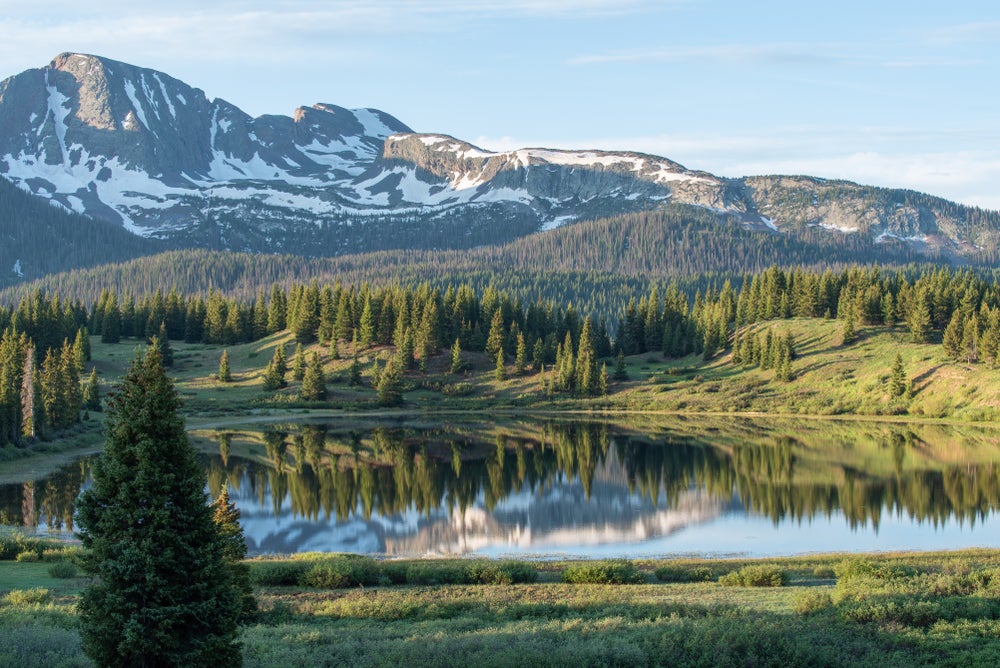
The San Juan Mountains in southwestern Colorado are arguably the most beautiful pocket of Colorado. Even Colorado residents don’t explore much of this range because it is hard to access, but that in turn helps keep it a remote wilderness area.
The 485-mile Colorado Trail epically ends in this gorgeous mountain range, and is argued to be some of the most beautiful sections of the trail. If you’re interested in the Colorado Trail, but don’t have a month to spend walking, this is a great Colorado backpacking trip to experience the last four sections of this stunning trail.
These sections of the Colorado trail are so beautiful because they are at or above timberline for most of the hike. The trail contours around monstrous peaks with and passes a line of stunning dark volcanic cliffs.
There are lots of water resources along this hike, but it should be treated. The hike is exposed to make sure to be wary of lightning.
8. Rawah Lakes Loop
Trailhead: West Branch Trailhead Distance: 23.2 miles Elevation Gain: 4,022 ft. Route Type: Loop Season: July-October Permit Required?: No
This Colorado backpacking trip is best completed in late summer or early fall, as there is typically a lot of snow until the late summer season. Summer offers emerald green mountains and pleasant temperatures. The fall permits trails lined with tall aspens in mass amounts in a fiery palette. The loop can be completed in 2-3 days with Upper camp lake, Rawah Lakes and Twin Crater Lakes being a great spot for lunch or camp depending on your route. Hikers can begin their journey from the parking lot and camp in well-used areas, or camp at Tunnel Campground before beginning the journey.
Post Hike: Unless you’ve been living under a rock, you probably know New Belgium Brewing Company makes some of the best beer in the U.S. Check out their employee-owned brewery and sip a brew on their lively patio.
This article about Colorado backpacking trips was brought to you by Gregory .
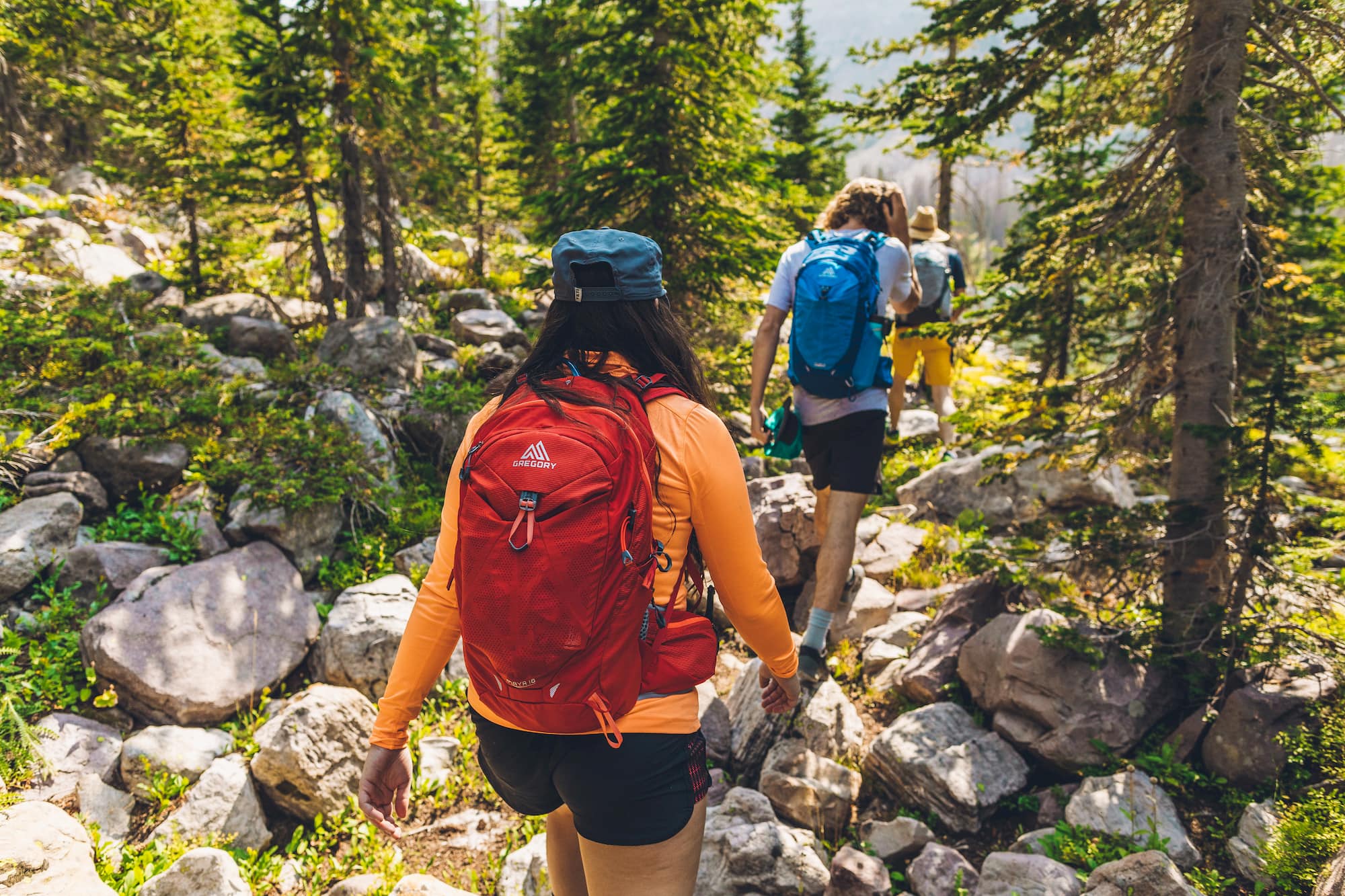
Photo from Gregory Packs
The makers of the best hiking backpacks on the market.
Related Articles
- Pawnee National Grassland
- A Camper’s Guide to Ouray, Colorado
- San Juan Mountains
Related Campgrounds:
- Elk Creek Campground , Gunnsion, CO
- North Fork Campground , Meeker, CO
- Ruedi Reservoir Camping , Basalt, CO
- Twin Lakes Colorado Camping , Leadville Colorado
- Cross Creek Campground , South Fork, CO
- Garden of the Gods Camping , Colorado Springs, CO
- Camping Dillon, CO, Prospector Campground
- Pikes Peak RV Park Campground, Manitou Springs, CO
- Tiger Run Resort , Breckenridge, CO
Popular Articles:
- Get the Latest 2023 Camping Travel Trends
- How To Find Free Camping in National Forests
- The Checklist Every First Time RVer Needs
- Find Free Camping With The Dyrt Map Layers
- The Ulimate Boondocking Guide To Free Camping
- Everything You Need To Know About Wifi For Your RV
- 7 of The Best Overland Routes in North America
- 14 Wilderness Survival Tools You Should Have in The Backcountry
- Here's What To Add To Your Primitive Camping Checklist
Emily Gallegos
Emily Gallegos is a travel-lover, backpacker and is generally curious about all this world has to offer. She grew up in the front range of Colorado where she fell in love with snowboarding, fishing and being outside as often as possible. She has studied Spanish in Spain and Argentina and has written for magazines in Boulder, CO such as Elevation Outdoors.
More Articles

8 Wildlife Sanctuaries and Refuges You Can Visit Across America
A good reason to go for a hike or pitch a tent and sleep in the dirt is to become more connected with the natural…

Make DIY Ice Cream in a Bag From Your Camping Cooler
This article on DIY ice cream in a bag is brought to you by IceMule. IceMule’s insulated backpack coolers are soft-sided, lightweight, and can keep…
15 Best Backpacking In Colorado Routes (From A Local)

Are you looking for the best backpacking in Colorado?
Colorado is full of outdoor adventure options ranging from some of the best skiing and snowboarding in the world to some of the best hiking trails right outside of Denver to some of the best backpacking loops in the country!
Having lived in Colorado and as avid hikers and backpackers, we know the best backpacking in Colorado to enjoy.
The state of Colorado truly has it all and with its 300 days of sunshines, there is plenty of opportunities to get outside and explore the mountains year round.
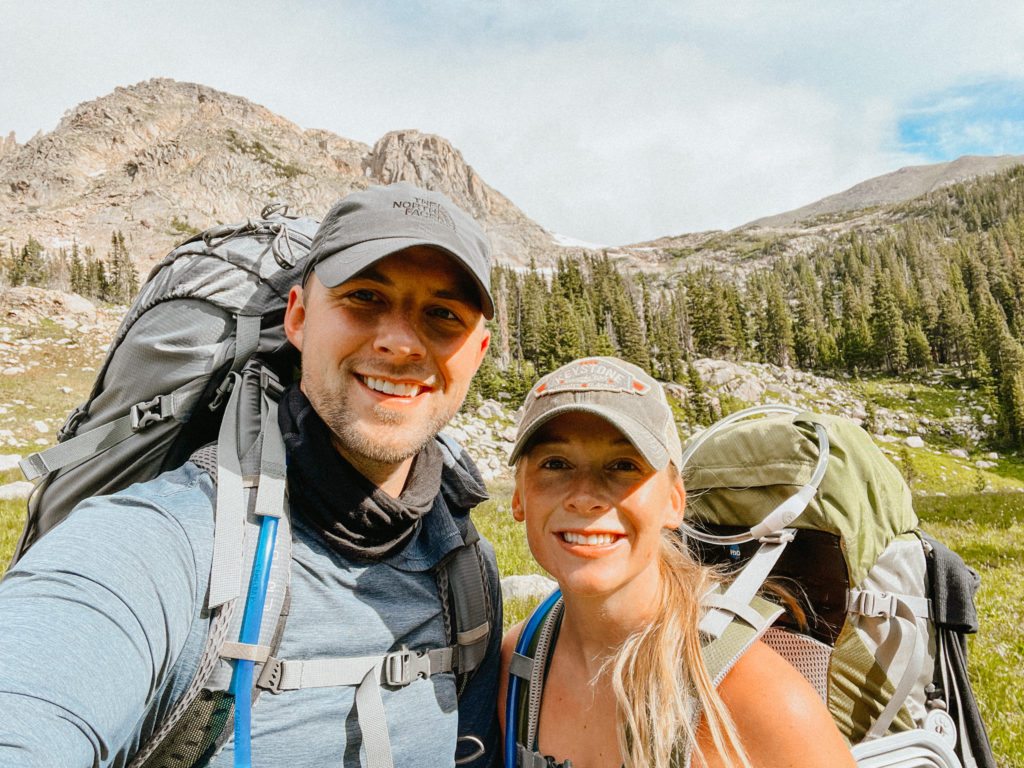

The Best Backpacking in Colorado
Below I have highlighted the best backpacking in Colorado for outdoor enthusiasts to enjoy.
1. Continental Divide Loop – Best for Experienced Backpackers Looking for a 3 Day 2 Night Backpacking Adventure
The Continental Divide Loop is about 30 miles long. This loop will take past some of the most beautiful scenery inside of Rocky Mountain National Park as you hike past waterfalls, alpine lakes, greenery, and much more.
This loop typically takes 3 days to complete and is considered quite hard due to its length and elevation gain.
There are quite a few requirements that you will need to backpack the Continental Divide Loop in Colorado.
You will need a National Park Pass , backcountry camping permit , and a bear canister .
Lastly, you will have to leave your furry friend at home. Dogs are not allowed on the Continental Divide Loop.
2. Colorado Trail (Segment 7) – Best for Those Searching for 1 Night Backpacking Trips in Colorado
The Colorado Trail is 567 miles long and goes from Denver all the way to Durango.
The Colorado Trail (or CT) is split up into 28 different segments, each of which has its own access point for you to hop on or off of the trail.
On average it takes about 4 to 6 weeks to complete the whole Colorado Trail from Denver to Durango. However, if you are looking for a shorter backpacking trip… look at completing just 1 of the 28 segments.
We highly recommend Segment 7 of the Colorado Trail due to its endless scenery and being right near the incredible town of Frisco.
Segment 7 is about 14 miles in length and is considered a hard hike.
Camping is allowed on most of the Colorado Trail and permits are NOT required.
We highly recommend that you check out The Colorado Trail Foundation website for more information.
Lastly, feel free to bring your pup along with you on your journey! The Colorado Trail is dog friendly, just be sure to bring extra food, water, and treats for your furry friend to enjoy.
3. Maroon Bells Four Pass Loop – One of Colorado’s Most Popular Summer Time Backpacking Loops
The Maroon Bells Four Pass Loop is an excellent backpacking trip for those looking to do a 3 to 4 day trek through one of Colorado’s most beautiful landscapes.
The loop is about 27 miles in length and you pass through four major traverses: West Maroon, Frigid Air, Trail Rider, and Buckskin.
This loop is considered to be a hard route and can be trekked clockwise or counter-clockwise.
You will see endless beautiful views and scenery including alpine lakes, dramatic mountain views, wildflowers, and much more.
If you are looking for a truly memorable experience with views of the infamous Maroon Bells just outside of the popular city of Aspen, look no further.
Plus, the Maroon Bells Four Pass Loop is dog friendly!
You DO need a permit to hike this loop. Also, you will need a parking or shuttle reservation in advance. Additionally, bear canisters are required in this area.
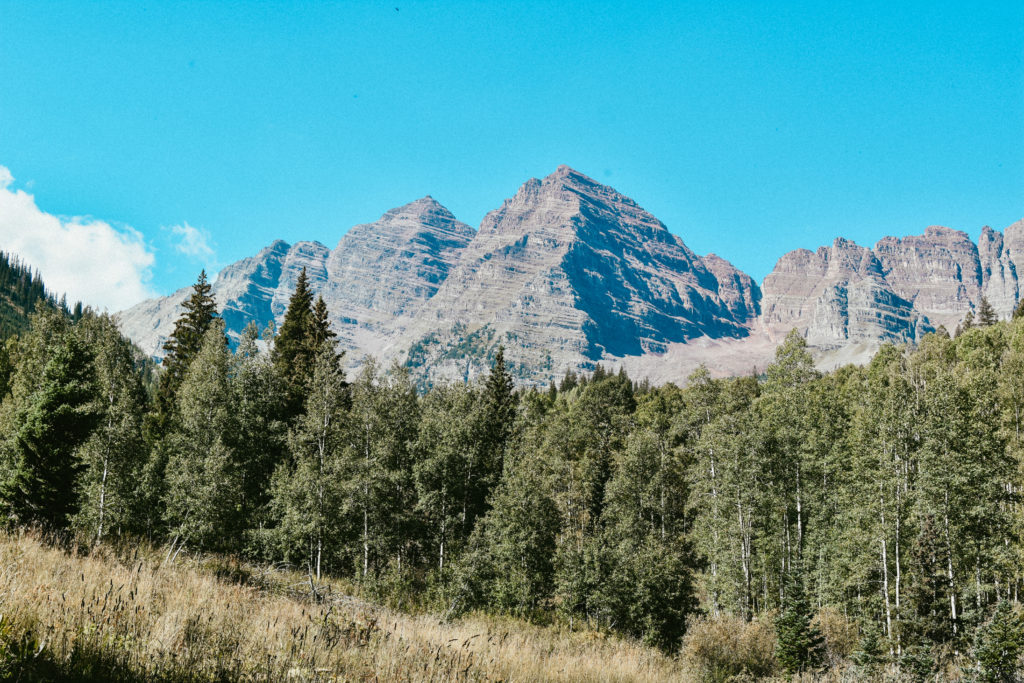
4. Lost Creek Wilderness Loop – An Excellent Weekend Backpacking Trip in Colorado with Unique Views and Terrain
Lost Creek Wilderness Loop is an excellent backpacking trail for those looking for a less trafficked trek compared to some of the more popular routes.
This backpacking route provides you with countless unique views, terrain, and landscapes compared to “typical” Colorado backpacking.
This loop provides you with views of different rock and granite formations along with various other landscapes throughout your trip.
The Lost Creek Wilderness Loop is just over 28 miles in length and is considered a hard loop.
Be sure to bring along with you your favorite backpacking pillow for side sleepers and your go-to hiking flashlight , along with your other backpacking essentials so that you have the most optimal experience while out in the wilderness.
Additionally, you are required to grab a self-issuing permit at the trailhead and keep the permit on you as you trek through the wilderness.
This allows forest service members to better keep track of visitation in the area.
Lastly, you may bring your furry friend along with you on your backpacking excursion as long as they are kept on leash!
5. Pine River Trail – A “Hidden Gem” Backpacking Route for Intermediate Trekkers
The Pine River Trail is a phenomenal option for those looking for a lesser known backpacking route with some solidarity and time with nature.
This trail is rated intermediate and is great for “average” backpackers or beginners that feel they are ready to push themselves a bit.
This trail is about 28 miles in length but has pretty flat terrain with the occasional uphill elevation gain.
You will mainly pass through wide meadows or tree filled areas. Additionally, dogs are welcome on this trail and may be off leash in some areas!
6. Sand Ramp Trail – Most Unique Backpacking Experience in Colorado
The Sand Ramp Trail is the most unique backpacking experience you can get in the beautiful state of Colorado.
This trail is inside of Great Sand Dunes National Park, home to the largest sand dunes in North America.
This trail is about 7 miles in length and is considered a moderate trail.
We recommend that you bring sandals or socks to wear, we found it better to walk barefoot than with our shoes on but definitely bring both!
Furthermore, you will need to pay an entrance fee to get into the National Park. Additionally, you will need a permit to camp in the backcountry.
From our knowledge and experience, dogs are allowed but must be on leash.
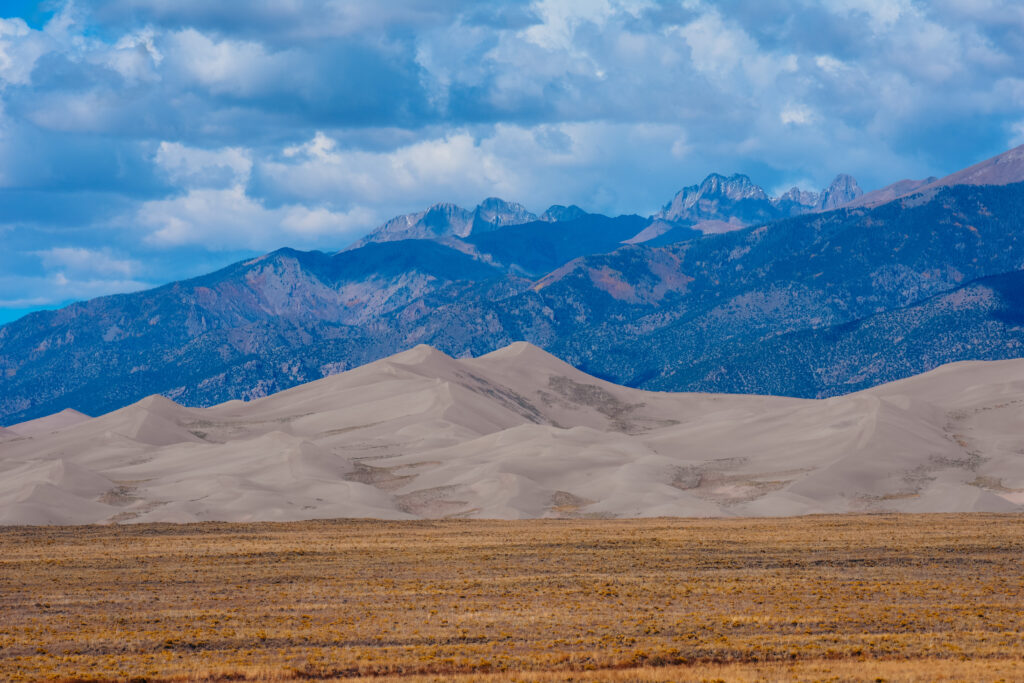
7. Snowmass Lake and Mountain via Maroon Snowmass Trail
This trail is a little over 21 miles in length and is an out and back trip. This backpacking route is right near the town of Snowmass so the location cannot be beat.
Additionally, the trail takes you past many beautiful lakes, mountain views, and terrific scenery.
This route is considered a hard trail and is very popular amongst backpackers. You may camp in designated areas and it does not require a permit.
However, you do need to register your visitation days at the trailhead. Plus, the Snowmass Lake trail is dog friendly so feel free to bring your pup along!
8. Chicago Basin in Weminuche Wilderness – A Memorable Train Ride to Start Your Adventure
Yes, you read that right. You will need to take a train ride to start your Chicago Basin backpacking excursion.
(You don’t have to take the train ride if you want to add a day or two to your backpacking trip but countless backpackers recommend taking the train journey to start your trek!)
Most backpackers recommend taking the train from Durango to the Needleton stop. Once you get off at Needleton, you will begin your backpacking adventure!
The Chicago Basin Trail is considered a hard route and about 15 miles in length out and back.
During your trek, you will see countless beautiful mountain views and scenery around you.
Plus, the hike is dog friendly so pets are welcome on leash! Lastly, according to our knowledge, there is no permit required for this trail.
We recommend that you take the train ride because it adds some adventure to your trip and is sure to add to the excitement!
However, if you would rather skip the train, you will begin your journey at the Purgatory Creek Trail and your backpacking trip will more than double in size to about 32 miles in length!
9. Devil’s Thumb to King Lake Loop
This loop is in the Nederland area of Colorado and is about 15 miles in length. This is a great option for those looking for a 1 night backpacking trip or could be split up into 2 nights!
You will pass through forest areas, meadows, tree lines, and pass several alpine lakes.
This loop does require a local permit for overnight camping in the area. Additionally, it is dog friendly so your pet can come with you!
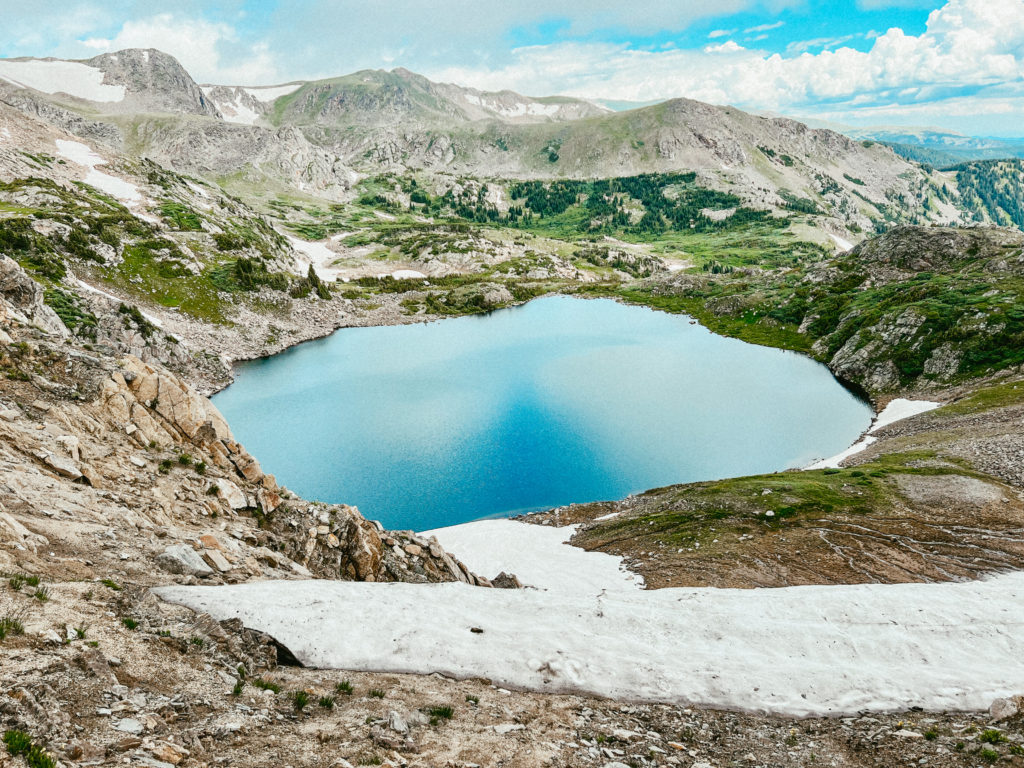
10. Gore Lake Trail
This trail is right near Vail, Colorado so the location is excellent! The Gore Lake Trail is about 12 miles in length out and back.
This route is considered a hard trail and will contain some truly breathtaking scenery as you take in the beautiful mountain landscape, the trees overhead, various rock formations, and much more. Plus, dogs are welcome along this route!
This is a great option for those looking for 1 night backpacking trips in Colorado! It’s also important to mention that you are required to have an overnight camping permit for this trail.
This is an excellent option for those looking for a backpacking adventure and would like to finish up near a bustling mountain town!
11. Buffalo Peaks Loop
The Buffalo Peaks Loop is in Pike National Forest and is a little less than 12 miles in length.
This loop is considered a popular backpacking route but is rated hard due to its terrain and elevation.
You will spend most of your hike in the woods surrounded by trees before popping out and catching a glimpse of the beautiful terrain from up top.
Plus, dogs are allowed on this loop and may be off leash in some areas!
12. Mohawk Lake to Pacific Peak and Crystal Peak
This trail is right near Breckenridge and is about a 12 mile loop trail. It is a lesser known backpacking route so it will be less crowded than some of the bigger name and more popular trails in Colorado.
Plus, it is dog friendly so you can bring your pet with you!
It’s important to note, that this trail is rated quite hard and the elevation gain is hefty!
We definitely recommend this hike for more experienced backpackers looking for a less crowded trail.
13. Mount of the Holy Cross Trail
This trail is about 12 miles in length and very popular amongst backpackers of all skill levels.
This trail is an out and back route that has significant elevation gain throughout the trek!
The views throughout this backpacking trip are outrageous as you see drastic mountain views in the distance, it is truly breathtaking.
Plus, this trail is dog friendly which is always an added bonus for dog owners!
14. Fern Lake Trail
This trail is about 8 miles out and back inside of Rocky Mountain National Park. It is a beautiful trail with lake views and countless wildlife sightings.
This trail is considered moderate so it is good for intermediate backpackers or beginners looking for a challenge.
This trail is inside of Rocky Mountain National Park which requires you to have a permit for overnight backpacking .
Additionally, you will have to leave your dog at home because they are not allowed on this trail.
15. Vallecito Creek Trail
This trail is about 13 miles in length out and back near the Bayfield area. It is considered a moderately hard trail with views of trees and a creek throughout your trek.
Additionally, pets are allowed on this trail and may be off leash in some areas! This is an excellent backpacking trip for beginners and intermediates alike.
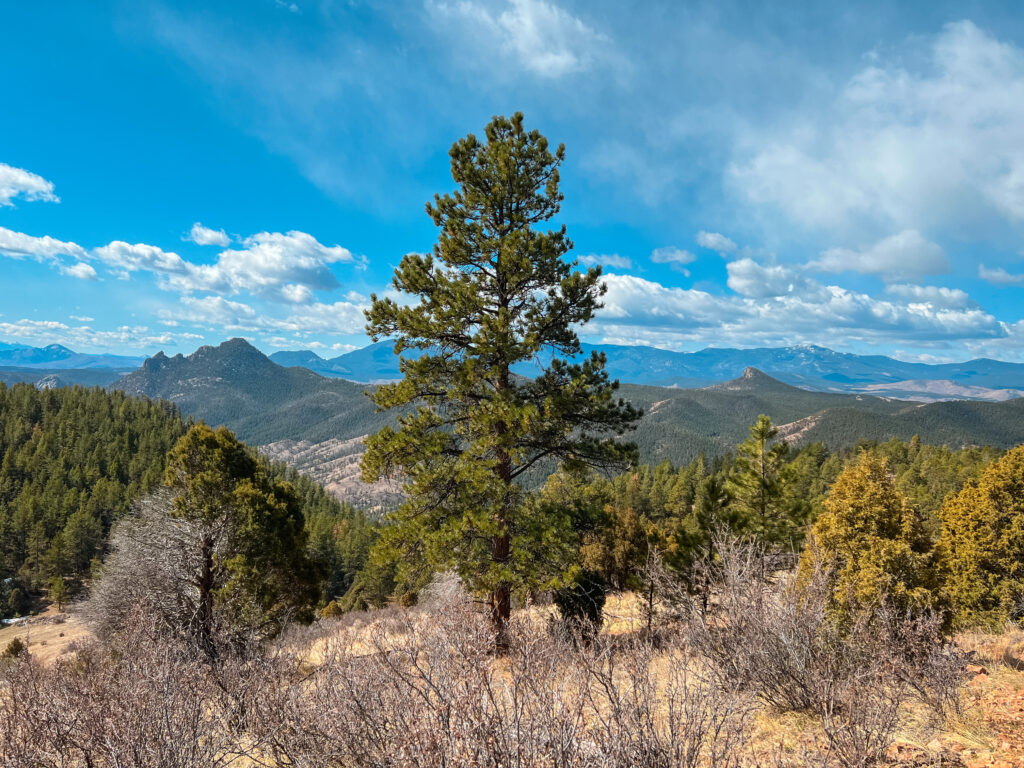
Colorado Backpacking FAQs
Below I have answered some of the most frequently asked questions about backpacking in Colorado.
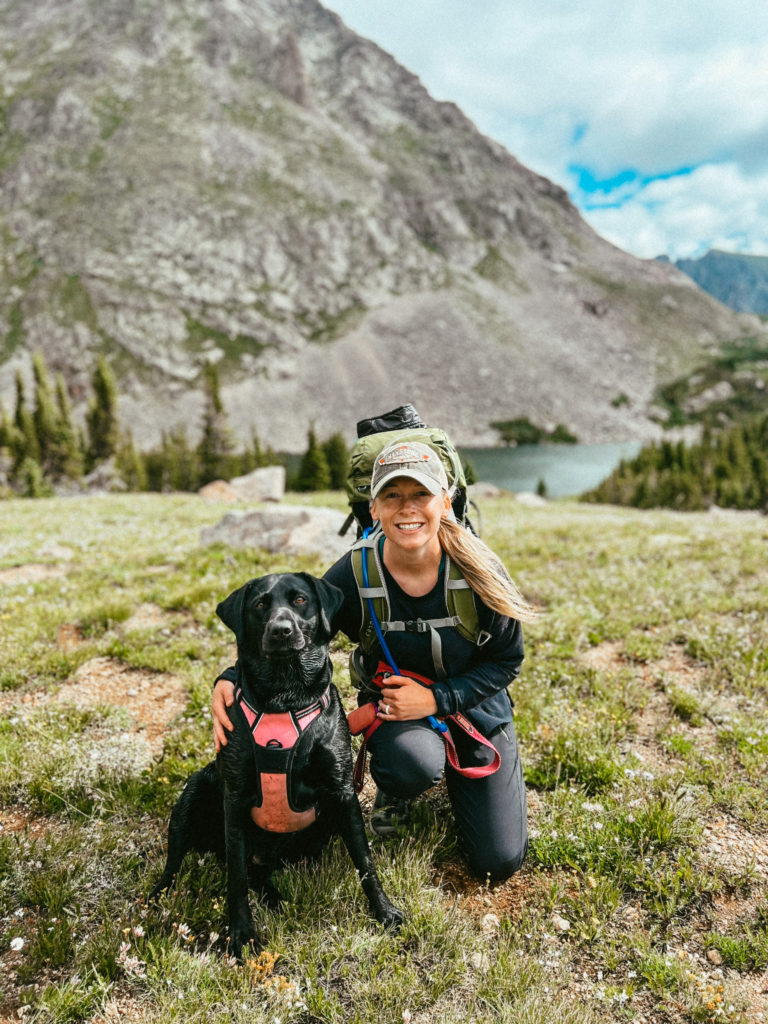
Where should I go backpacking in Colorado?
There are countless destinations to go backpacking in Colorado. We highly recommend that you check out the 15 we listed above for some of the best trekking in the state.
Additionally, make sure to check the AllTrails app for more recommendations.
Is Colorado good for backpacking?
Colorado is an excellent place for backpacking! The state of Colorado is known for its beautiful Rocky Mountains along with its endless outdoor excursions including backpacking, hiking, skiing, snowboarding, climbing, and so much more.
When should I go backpacking in Colorado?
The best time to go backpacking in Colorado is usually between the months of March through November.
However, it really depends on which areas you are looking to explore and their elevation.
Be sure to check the AllTrails app before embarking on your backpacking trip.
This app will tell you about the best time to hike that specific trail along with more details and requirements when it comes to backpacking, hiking, and camping throughout Colorado.
Do I need a permit to backpack in Colorado?
You do not always need a permit to backpack in Colorado. However, many trails and loops do require permits.
We recommend using the AllTrails app to learn more about permit requirements throughout the state.
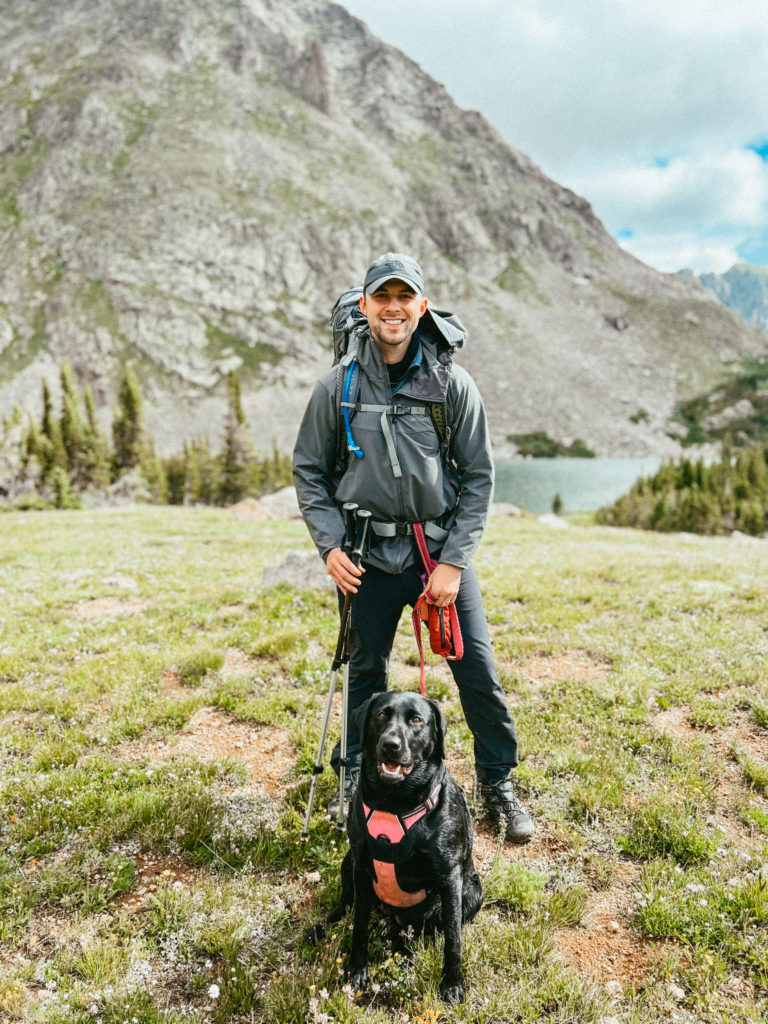
We hope this list of the best backpacking in Colorado helps you plan your next overnight backpacking excursion!
For similar posts, be sure to check out 15 Best Energy Bars for Hiking 2023 and Crampons vs Microspikes: Which Should You Use and When? Happy Backpacking!
Abby and Sam Price are the founders of Trekking Price's. They are travel experts and outdoor enthusiasts passionate about sharing their travels, hobbies, tips, and recommendations with others. They primarily focus on United States travel and their outdoor adventures and hobbies. Their favorite hobbies are hiking, skiing and snowboarding, scuba diving, fishing, and pretty much any outdoor recreational activity. They are on a mission to help other couples and families see more of the world without having to quit their 9-5 jobs and love sharing their travels, reviews, and hobbies with others.

Backpacking the Four Pass Loop in Colorado’s Maroon Bells: Permits, Itineraries, And More!
Plan a backpacking trip on the Four Pass Loop in the Maroon Bells with this guide to obtaining overnight permits, gear, & more.

Find this post helpful? Learn how you can support Bearfoot Theory’s work here . You can also shop for gear through the affiliate links in this blog post where we get a small commission at no cost to you. It helps keep our team running and the lights on. THANK YOU! -Kristen
When you search on Google for images of Colorado, many of those breathtaking, iconic photos of mountain peaks surrounded by alpine lakes and wildflowers are of the Maroon Bells near Aspen. It is no wonder that many people wish to experience this magic for themselves, making the Four Pass Loop one of the most popular Colorado hiking trails.
The famous Four Pass Loop trail spans 26 miles. As the name implies, this circuit includes four mountain passes (West Maroon – 12,500 feet; Frigid Air – 12,415 feet; Trail Rider -12,420 feet; Buckskin – 12,500 feet). Due to the high elevation and rocky terrain, this route is considered challenging.
As someone who had previously tried backpacking only once before, I knew this would be an ambitious adventure for my first multi-night backpacking trip. However, I had lived and hiked in Colorado for five years, so I eagerly accepted my friend’s invitation to push my limits and accompany her on this 3-day excursion.
The Four Pass Loop trail remains one of my most treasured Colorado hiking experiences. It is the perfect backpacking trip for anyone who is looking for scenic views and is willing to challenge themselves. In this post, I share everything you need to know about hiking the iconic Four Pass Loop.

Download my FREE Outdoor Trip Planning Toolkit
Enter your email to get access to printable PDF packing checklists, itineraries, and more.
Important Reminder: As it goes in all of the destinations we share, please practice good trail etiquette and remember to Leave No Trace . This means packing out all of your garbage (including toilet paper), being respectful to others, and following the established rules.
Four Pass Loop Stats & FAQs
The Four Pass Loop is how it sounds – a loop trail where you summit four mountain passes above 12,000 feet. It is in the Maroon Bells-Snowmass Wilderness near Crested Butte and Aspen, Colorado.
Trail Basics
- Total Distance : 26 miles
- Elevation Gain : 7,752 feet
- Permits Needed : Yes
- Difficulty : Challenging
- Dogs allowed : Yes
- Cell service : No
- Map : AllTrails
How long is the Four Pass Loop trail?
While there is some discrepancy on the exact distance, the Four Pass Loop is about 26 miles, with some saying slightly more or less. There are multiple starting and ending points, but many hikers begin and end their hike at the Maroon Scenic Area on the Aspen side.
How long does it take to hike the Four Pass Loop?
I chose to do it in 3 days, but I recommend 4 days. The most common itineraries are 3 days/2 nights or 4 days/3 nights. I chose to do it in 3 days, but I recommend 4 days as explained further below.
It largely depends on your physical fitness, how much time your schedule allows, your desire to add on optional excursions to Geneva Lake and Willow Lake, and the type of experience you would like to have.
How difficult is the Four Pass Loop trail?
The Four Pass Loop is considered a challenging hike. There are steep switchbacks to climb and descend on the mountain passes and a total of 7,752 feet in elevation gain.
With most of the Maroon Bells Four Pass Loop being over 10,000 feet, you also want to give yourself plenty of time to adjust to the high elevation. Make sure you know the signs of altitude sickness and have a plan in case you or someone in your group experiences this. There are also long stretches of sun exposure, so remember to bring sun protection .
The experience and the views are certainly worth it, though! Just know your physical capabilities and adequately prepare for this trip.
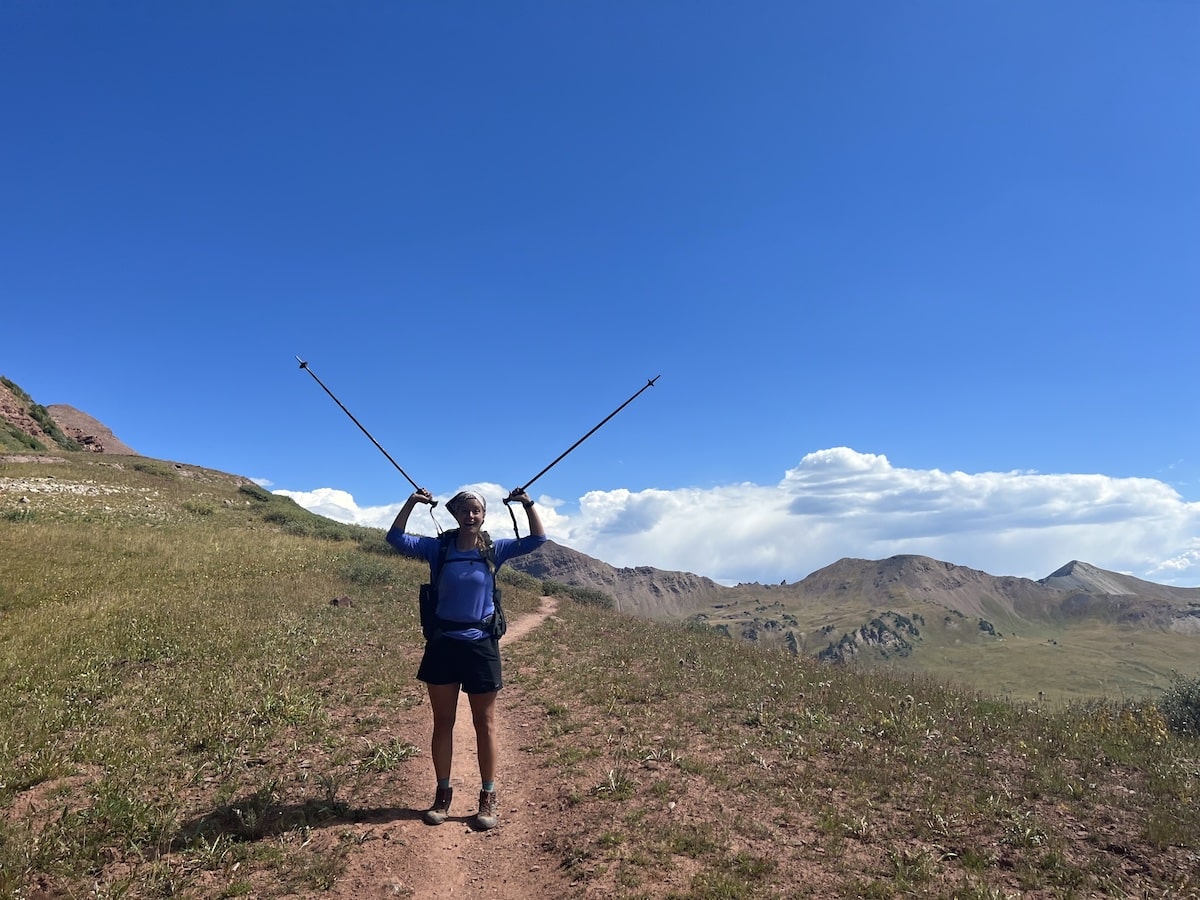
Is the Four Pass Loop remote?
It is considered a remote wilderness backpacking trip. However, the Four Pass Loop trail is popular among hikers and trail runners, so you are bound to encounter other people.
The weather is unpredictable and quickly changes at high elevations. Be sure to pack for all conditions.
Are there bears on the Four Pass Loop?
The trail is in black bear country. As a result, you must use a bear canister or Ursack . To protect people and bears, anyone camping without an approved bear-resistant container will receive a ticket and be required to leave.
Is the Four Pass Loop well-marked?
Yes, the Four Pass Loop is well-marked, but it is still possible to get lost in the wilderness, especially in snowy conditions.
I recommend bringing a compass and a copy of the Four Pass Loop map . You should also make sure you’re familiar with how to read a topo map and basic wilderness navigation techniques .
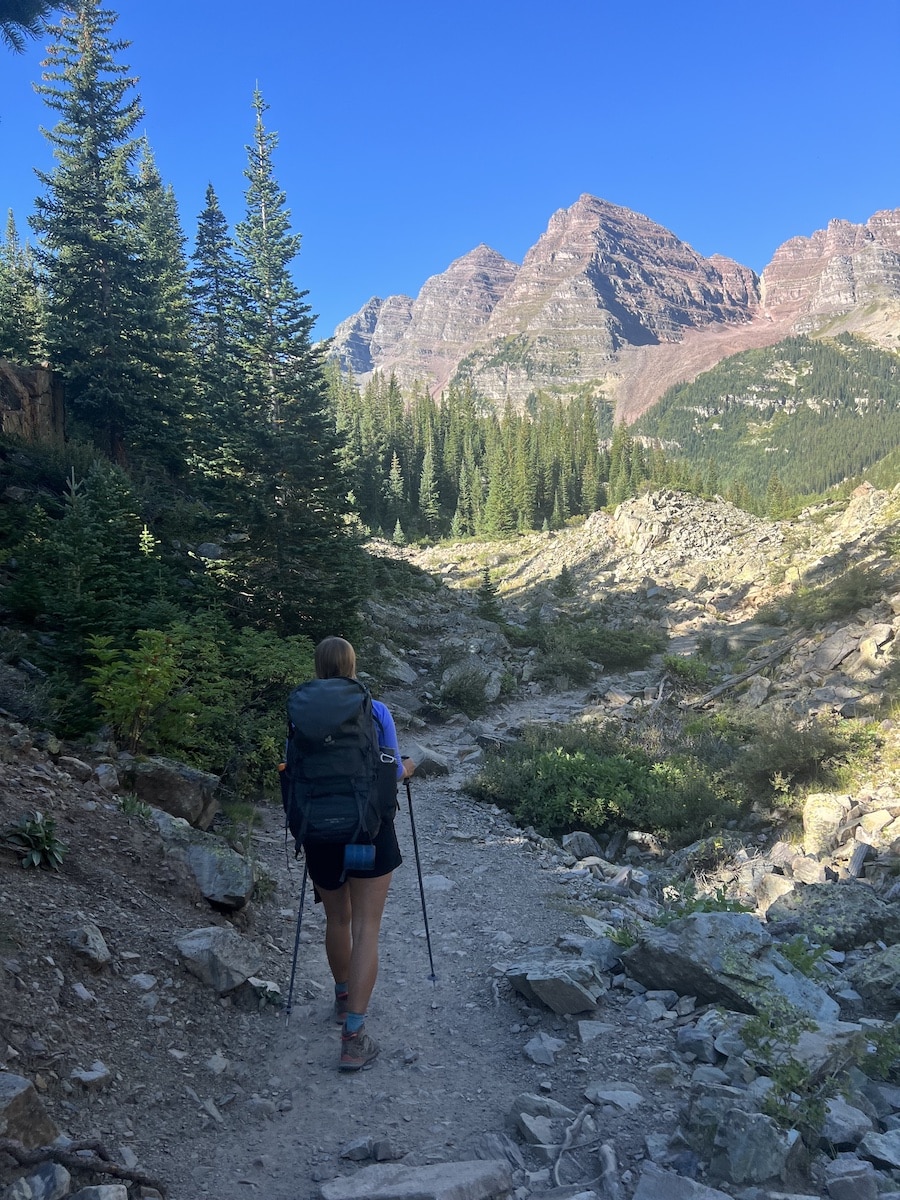
What direction should I hike the Four Pass Loop?
If you begin at the Maroon Scenic Area (as I recommend), you will hike for about 1.5 miles from the parking lot/shuttle drop-off area before you reach the fork in the trail to hike the loop clockwise or counterclockwise. I decided to hike the Four Pass Loop clockwise from the Maroon Scenic Area and recommend going this way. The views get better each day, and the view of Snowmass Lake as you descend Trail Rider Pass is incredible.
If you complete this trip in 3 days, you will also get to knock out two mountain passes on the first day, making the other two days a little more manageable.
Both directions are equally challenging, and the total elevation gain/loss is nearly identical. If you find the incline uphill more difficult, clockwise is slightly easier.
The elevation gain for West Maroon Pass is less intense than the elevation gain for Buckskin Pass if you were to go counterclockwise. However, if the descent is hard on your knees, you may want to consider going counterclockwise for that same reason.
Do I need hiking permits for the Four Pass Loop?
As of 2023, you must purchase Maroon Bells-Snowmass Wilderness Overnight Permits on Recreation.gov to spend the night on the trail. You must reserve these ahead of time and print them to bring with you on your trip , as you cannot purchase permits at the ranger station. Before your trip, you will need to decide which direction you will go (clockwise vs. counterclockwise), plan your itinerary ahead of time (see the next section), determine where you will camp each night of your trip within the designated areas in the overnight permit zone, and reserve your permits accordingly.
You also must reserve a parking permit or shuttle transportation from the Aspen Highlands parking garage.

How many people can I bring with me on my permit?
Most of the Four Pass Loop campsite permits for each zone are only for groups with 1-4 people. A select number of large group permits of 5-10 people are available for Crater, Maroon, Snowmass Lake, and North Fork.
If you cannot secure a large group site, you will need to have someone else from your group try to reserve a second permit (and camp at a different site) if you plan on going with a group of more than four people.
What is the water availability on the Four Pass Loop?
There are numerous small creeks and springs along the trail for filling your water; however, you must bring a water filtration system to purify your water before drinking.
I recommend filtering your water at your campsite with a water filtration system to have 3-4 liters of water in a reservoir at all times.
Since the availability of some water sources can vary depending on the season and conditions, read recent reports before your trip to plan your water refill stops.
Sections without water
- Between West Maroon Pass and North Fork Zone : Before starting the ascent of West Maroon Pass, refill your water for two mountain passes (West Maroon and Frigid Air). Another option is to take a detour into the East Fork Zone after descending West Maroon Pass to refill in the East Fork South Fork Crystal River. There is water a couple of miles into the North Fork Zone.
- Between Trail Rider Pass and Snowmass Lake : There is a small lake before you begin the ascent of Trail Rider Pass where I recommend refilling your water. You cannot fill your water again until hiking several miles to Snowmass Lake.
- Between Snowmass Creek and West Maroon Creek : The final stretch without water access occurs once you pass the campsites along Snowmass Creek in the Upper Snowmass Zone. You will not find water on the trail again until you descend Buckskin Pass and encounter West Maroon Creek.

Best time of year to hike the Four Pass Loop
Although permits are issued and required year-round, the best time to hike the Four Pass Loop trail and visit the Maroon Bells-Snowmass Wilderness is July through September for the best weather conditions. I completed the loop in early September and had perfect conditions (sunny skies, not too hot or cold).
While there is a risk of summer thunderstorms with the majority of the hike being above treeline, I recommend planning your trip in July, August, or September for personal safety and the best chance of pleasant backpacking conditions.
Since the overnight wilderness permits are good for 7 nights, you could always adjust your trip slightly based on the forecast as needed.
Snow dangers
Since this trail sits at such a high altitude in the Rocky Mountains, the rest of the year presents unique risks. The Four Pass Loop trail, including campsites and mountain passes, tends to be covered in snow from the beginning of October through the end of June.
- Route finding : It may be difficult to determine where the trail continues.
- Inaccessible trailheads : You may not be able to drive to the trailhead.
- Avalanches : There is always a risk of avalanches in the mountainous backcountry, especially in the winter and spring.

Four Pass Loop Itinerary Options
Backpacking the Four Pass Loop requires a fair amount of preparation. You must obtain overnight campsite permits for each night of your trip, make a parking or shuttle reservation, and pack the necessary gear.
I will dive into everything you need to know about planning your Four Pass Loop backpacking trip below.
Where to start the Four Pass Loop
Before you select an itinerary, you must decide if it makes more sense for you to start the loop in Crested Butte or Aspen. There are a few key differences if you decide to start in Crested Butte versus Aspen.
If you park at the East Fork trailhead in Crested Butte, you do not need a parking permit or shuttle reservation. However, starting in Crested Butte adds an additional 3 miles total to the loop.
To park in Crested Butte, you will need to drive up a rough dirt road. You will also miss out on seeing Maroon Lake in the Maroon Scenic Area (unless you take a detour and add on another 3 miles).
On years with heavy snowfall, the Crested Butte lot isn’t accessible until the last week of July or August. If you are driving from Denver, it is more convenient to start the hike in Aspen, as it will save you two hours of driving time.
From Salt Lake City, the East Fork trailhead in Crested Butte is only 20 more minutes of driving time than the Aspen Highlands starting point, making both options equally convenient. The only reason I might recommend starting in Crested Butte rather than Aspen is so you do not have to pay for a parking permit or shuttle.
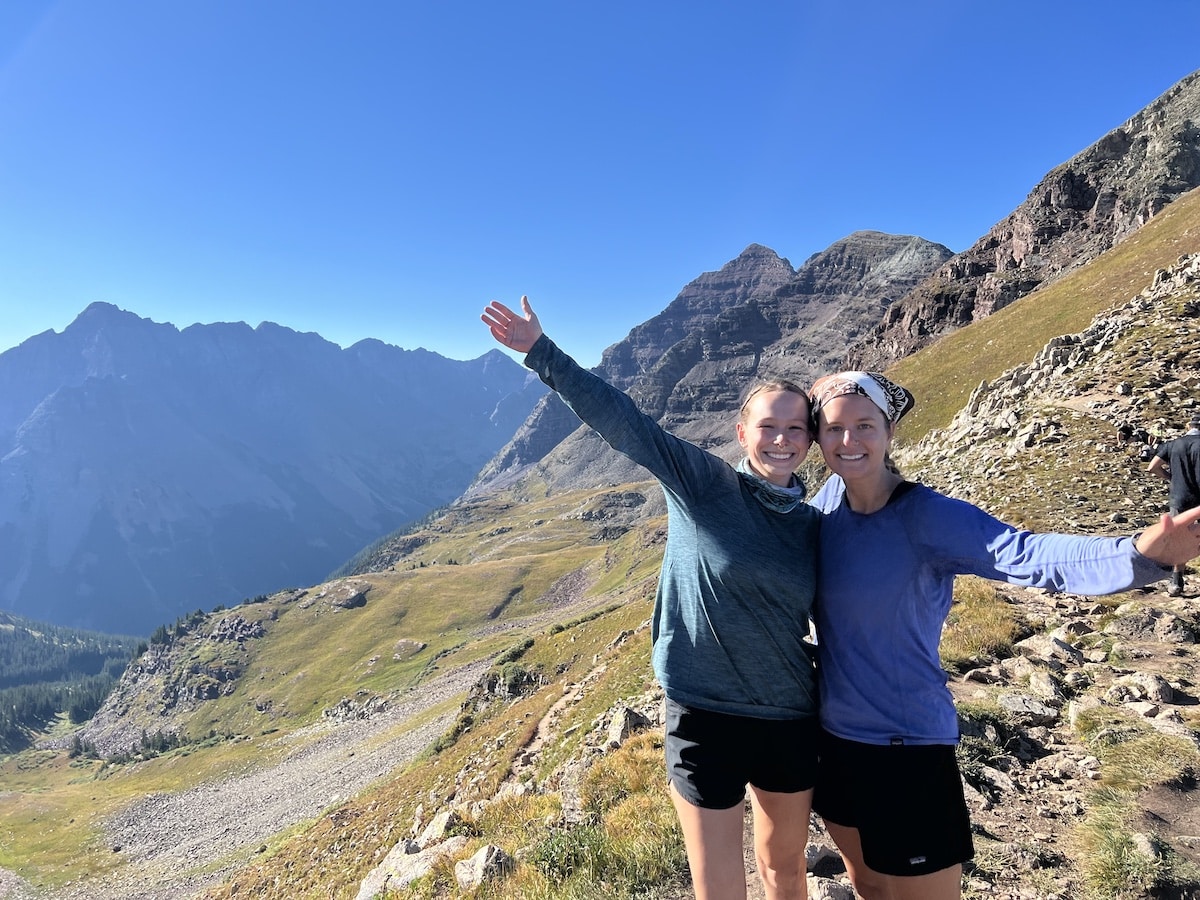
Choosing an itinerary
Before you purchase your overnight wilderness camping permits, you need to decide where you will begin your trip (Aspen/Maroon Scenic Area or Crested Butte/East Fork), which direction you will travel through the loop (clockwise or counterclockwise), and how many nights you intend to stay.
Most people complete the Four Pass Loop in 3-4 days. Due to schedule restrictions, I had to complete the loop in 3 days, resulting in long days of hiking with little time for relaxing or adding optional extensions.
If I were to do this hike again, I would follow the 4-day itinerary. This allows you to hike at a leisurely pace, hike one mountain pass per day, and account for any unexpected afternoon thunderstorms.
Here are four different Four Pass Loop itineraries, two for going clockwise from Aspen/Maroon Scenic Area, and two for going counterclockwise from Crested Butte/East Fork.
3-day itinerary (starting in Aspen; clockwise)
This is the itinerary I followed.
- Day 1 : Maroon Lake to North Fork Zone/Fravert Basin (10 miles; 2 passes)
- Day 2 : North Fork Zone/Fravert Basin to Upper Snowmass Zone (9 miles; 1 pass)
- Day 3 : Upper Snowmass Zone back to Maroon Lake (7 miles; 1 pass)
4-day itinerary (starting in Aspen; clockwise)
- Day 1 : Maroon Lake to East Fork Zone (7 miles; 1 pass)
- Day 2 : East Fork Zone to Geneva Lake Zone (7 miles; 1 pass)
- Day 3 : Geneva Lake Zone to Upper Snowmass Zone (5 miles; 1 pass)
- Day 4 : Upper Snowmass Zone back to Maroon Lake (7 miles; 1 pass)
3-day itinerary (starting in Crested Butte; counterclockwise)
- Day 1 : East Fork to Snowmass Lake Zone (15.5 miles; 2 passes)
- Day 2 : Snowmass Lake Zone to North Fork Zone/Fravert Basin (7 miles; 1 pass)
- Day 3 : North Fork Zone/Fravert Basin back to East Fork (6.5 miles; 1 pass)
4-day itinerary (starting in Crested Butte; counterclockwise)
- Day 1 : East Fork to Crater Zone (8 miles; 1 pass)
- Day 2 : Crater Zone to Snowmass Lake Zone (7.5 miles; 1 pass)
- Day 3 : Snowmass Lake Zone to North Fork Zone/Fravert Basin (7 miles; 1 pass)
- Day 4 : North Fork Zone/Fravert Basin back to East Fork (6.5 miles; 1 pass)

Day hikes and overnight options
If you want to experience the Maroon Bells Four Pass Loop but don’t have time to do the whole thing, here are a few alternative options.
- Day hike from Crested Butte to Aspen on the West Maroon Trail : It is a 10.3-mile, point-to-point hike with an elevation gain of 2,250 feet. You will summit one of the iconic four passes, West Maroon Pass. You can complete it in a single day and start in Crested Butte or Aspen. However, you must arrange a means of transportation to drop you off and pick you up.
- Camp overnight at Snowmass Lake : If you have only one night to camp, I recommend reserving an overnight permit for the Snowmass Lake Zone and hiking 8.3 miles from the Maroon Scenic Area to Snowmass Lake. You will summit Buckskin Pass on your way to the lake. It is an out-and-back hike in which you will return to the Maroon Scenic Area the following day.
- Day hike to Crater Lake : At 3.5 miles, this out-and-back hike makes for a moderate day hike. Starting in the Maroon Scenic Area, you will see Maroon Lake and Crater Lake. It is perfect for someone who wants to experience the beauty of the Maroon Bells-Snowmass Wilderness without climbing one of the four mountain passes or staying the night.
Navigating the Four Pass Loop Trail
The Four Pass Loop trail is well-marked, and if you plan your trip between July to September, you will see plenty of people along the trail. It is a popular trail for day hikes, backpacking trips, and trail runs.
However, I recommend bringing a hard copy of a map of the area and a compass. I have heard stories of people accidentally wandering off the trail and ending up on the cliff face of a mountain pass.
You can purchase a Colorado Maroon Bells-Snowmass Wilderness Map . This map also notes water sources along the route so you can plan where you will fill/filter your water while hiking.
Maroon Bells-Snowmass Wilderness Overnight Permits
As of 2023, you must obtain wilderness permits to camp overnight on the Four Pass Loop. You must plan your trip to ensure you reserve the correct permits.
Four Pass Loop permits FAQ
You must book your campsites on the Recreation.gov website and reserve a campsite zone for each night of your trip.
Permits are limited to two permits per person each calendar year. If you are going with a group and planning to stay more than two nights, another group member must reserve the additional night(s). If you plan to hike the Four Pass Loop solo, you will only be able to hold two camping permits, meaning you can only stay at two different campsites during your backpacking trip. This means you will need to complete the loop in 3 days/2 nights OR since each permit is good for up to seven nights, you can stay at each campsite for multiple nights to extend the length of your trip.
Except for the Crater Zone, the permit allows you to camp in any dispersed, pre-established campsite within your zone as long as it is 70 steps away from trails and water. In the Crater Zone, you must camp at designated numbered campsites.
For 2024, the permits cost $10 per person for dates between May 1-October 31. Children 16 and under are free. There is also a non-refundable reservation fee of $6 for each overnight permit.
Yes. The permit holder will need to print the permit within 14 days of the trip and carry it with them along with a photo ID to display upon request of any Forest Officer.
The permits are good for up to 7 nights in each zone you reserve, allowing for flexibility in case of unforeseen circumstances or poor weather.
Yes. Permits book up far ahead of time. I recommend being on your laptop ready to book your permits with a plan in place (and a back up plan) as soon as the permits are released.
7 campsite permit zones
The Four Pass Loop campsites are divided into seven zones as follows. They are listed below in the order you encounter them when hiking clockwise from Aspen.
- Crater Zone : 11 groups/night; 10 campsites of 1-4 people, Campsite #7 is 5-10 people; Camp only in designated campsites
- Maroon Zone : 17 groups/night; 16 permits of 1-4 people, 1 permit of 5-10 people
- East Fork Zone : 9 groups/night; 9 permits of 1-4 people
- North Fork Zone : 19 groups/night; 17 permits of 1-4 people, 2 permits of 5-10 people
- Geneva Lake Zone : 8 groups/night; 8 permits of 1-4 people; I suggest these designated campsites around Geneva Lake
- Snowmass Lake Zone : 15 groups/night; 13 permits of 1-4 people, 2 permits of 5-10 people
- Upper Snowmass Zone : 7 groups/night; 7 permits of 1-4 people

Important Permit Dates
These are the permit release dates for 2024.
- February 15, 2024 : Overnight permits for April 1-July 31, 2024 are available for advanced reservation at 8am Mountain Time
- June 15, 2024 : Overnight permits for August 1-November 30, 2024 are available for advanced reservation at 8am Mountain Time
- October 15, 2024 : Overnight permits for December 1-March 31, 2024 are available for advanced reservation at 8am Mountain Time

Four Pass Loop Parking and Shuttle Reservations
In addition to advanced preparation for the camping permits, you must figure out your parking situation ahead of time. Since you can start the hike in either Aspen via the Maroon Scenic Area or Crested Butte via East Fork, I have included the parking information for each.
Aspen/Maroon Scenic Area
The Maroon Scenic Area is the most popular spot for starting the Four Pass Loop trail. If you plan to begin/end your backpacking trip here between May 15-October 31, you must reserve either a parking or shuttle reservation , or arrange a drop off.
If you have additional questions about Maroon Bells parking and shuttle reservations, call 970-930-6442 or email [email protected].

Parking at Maroon Scenic Area
The price to park is $10/vehicle. Except for the evening parking time mentioned below, you must plan to arrive before 8:00 AM on the day of your parking reservation between May 26-October 22.
There are four different parking times you can reserve depending on if you are hiking the entire loop, the length of your day hike, and the time of day you want to visit.
- Day Visit Parking : If you want to park for 1 day between 12:00 AM – 4:30 PM. I recommend this reservation if you want to day hike to Maroon Lake or Crater Lake.
- Evening Parking : If you want to park for 1 evening between 5:00 PM – 12:00 AM. I recommend this reservation if you want to catch a sunset and/or stargaze at Maroon Lake or Crater Lake.
- 24-Hour Parking : If you want to park for 24 hours between Midnight – Midnight. I recommend this reservation if you want to do a longer day hike to West Maroon Pass or Buckskin Pass.
- Overnight Parking 2-Nights : If you want to park for 60 hours (starting at 6:00 AM on the day of your reservation and ending at 6:00 PM on the final day). If you are hiking the entire Four Pass Loop, you will need this reservation. If you are spending 3-4 nights on the trail, you will need to pay for two of the Overnight Parking passes and reserve them consecutively.
Drop offs at Maroon Scenic Area
You might consider having someone drop you off in the Maroon Scenic Area if you are doing a day hike from Aspen to Crested Butte on the West Maroon Trail.
You may have a private vehicle drop you off between 6:00 AM to 8:00 AM without a parking reservation. Commercial drop offs are not allowed.
Shuttle to Maroon Scenic Area
When I backpacked the Four Pass Loop, I took the shuttle. Here are some important things to note about the shuttle.
- Dates : The shuttle from Aspen Highlands to Maroon Lake runs from May 26-October 22.
- Times : The first shuttle leaves at 7:00 AM, and the last outgoing shuttle departs at 3:00 PM. The final return shuttle departs from Maroon Lake at 5:00 PM.
- Costs : The shuttle costs $16 for adults, $10 for seniors over 65, and $10 for children under 12.
- Reservations : You can reserve the shuttle here during the time it operates. I booked my shuttle a couple of weeks in advance, but you can reserve it as soon as you book your permits just to be safe. The early shuttle times between 7:00 AM to 10:00 AM tend to sell out the fastest.
Helpful Tip
Free parking for the shuttle.
If taking the shuttle, you can park for free at the Brush Creek Park & Ride in Aspen. There is a free shuttle service from here to Aspen Highlands. I did not know I could do this for my trip and paid $40/day to park my vehicle at the Aspen Highlands parking garage.
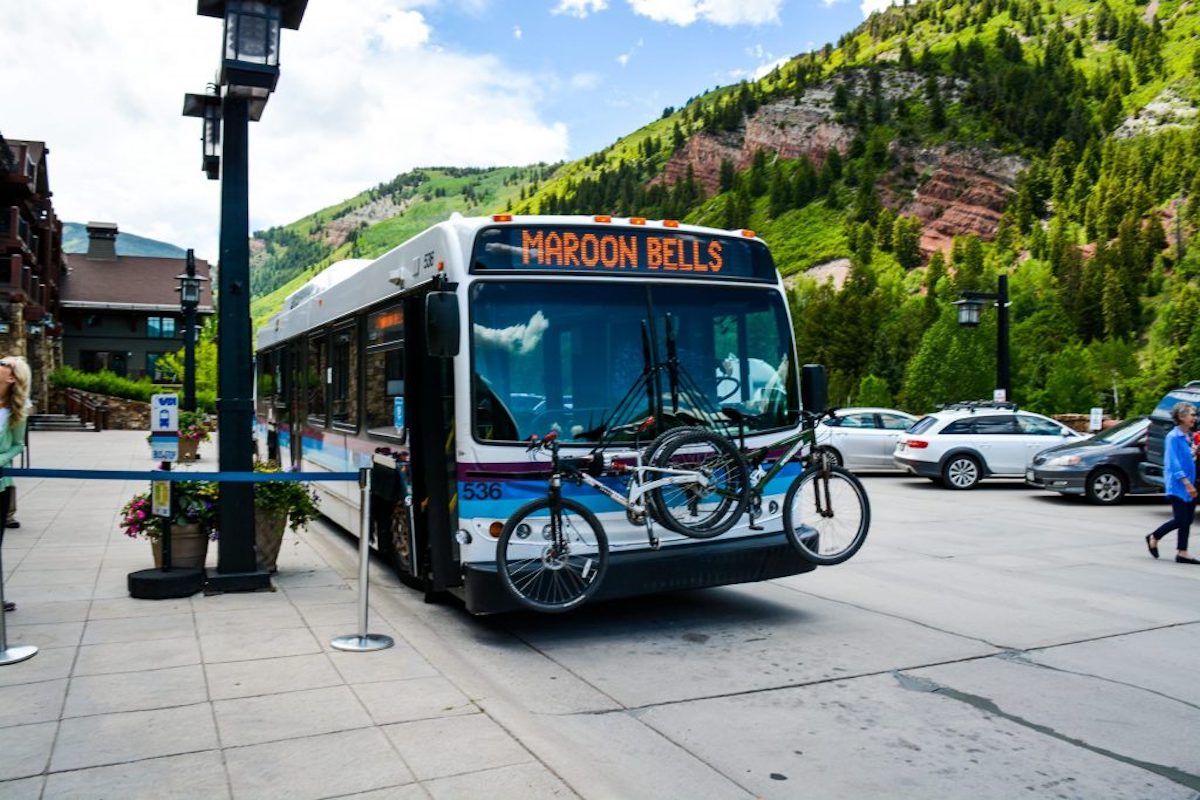
Crested Butte/East Fork
You do not need a permit to park at the East Fork trailhead. You can park overnight for free. This parking area is about 45 minutes from the town of Crested Butte, and you will find it on the right after passing Emerald Lake.
It is a large dirt lot with lots of parking spaces. There are reports of the road being rough; however, if you drive carefully over the potholes, it is doable in any vehicle and does not require 4-wheel drive.
Parking on the Crested Butte side adds 3 miles total to the loop. The parking lot is usually inaccessible until the last week of July due to snow.
Bearfoot Theory founder Kristen drove this road in her Sprinter Van back in 2019. The biggest issue she experienced is the road is quite narrow in a couple of places with room for only one larger car at a time.
My Four Pass Loop Trip Report
I hiked the Four Pass Loop in 3 days during the first weekend of September 2022. Hikers can follow this same itinerary by purchasing the overnight permits noted in the description for each day. Below is my detailed trip report.
Day 1: Maroon Scenic Area to North Fork Zone / Fravert Basin
Day 1 trail basics.
- Distance : 10 miles
- Mountain Passes : 2
- Elevation Gain : 3,567 feet
- Elevation Loss : 2,199 feet
- Permit : North Fork Zone
- Difficulty : Hard
Getting to the trailhead
I departed Fort Collins, Colorado early on September 3, 2022 to begin the 4-hour drive to Aspen. I stopped at a cafe for a quick breakfast in Aspen before heading to the parking garage to park my car and catch the shuttle.
Upon arriving at the Aspen Highlands parking garage, I organized my backpacking gear with my friend in the parking lot. Once I had divvied up the supplies, I waited at the desk for the 8:00 AM shuttle tickets I had reserved, then boarded the shuttle to the Maroon Scenic Area.
The shuttle driver provided an interesting commentary with facts about the Maroon Bells-Snowmass Wilderness during the 25-minute drive.
Upon arriving at the Maroon Scenic Area, I used the restroom facilities. I took photos at the iconic Maroon Lake before setting off on the trail.
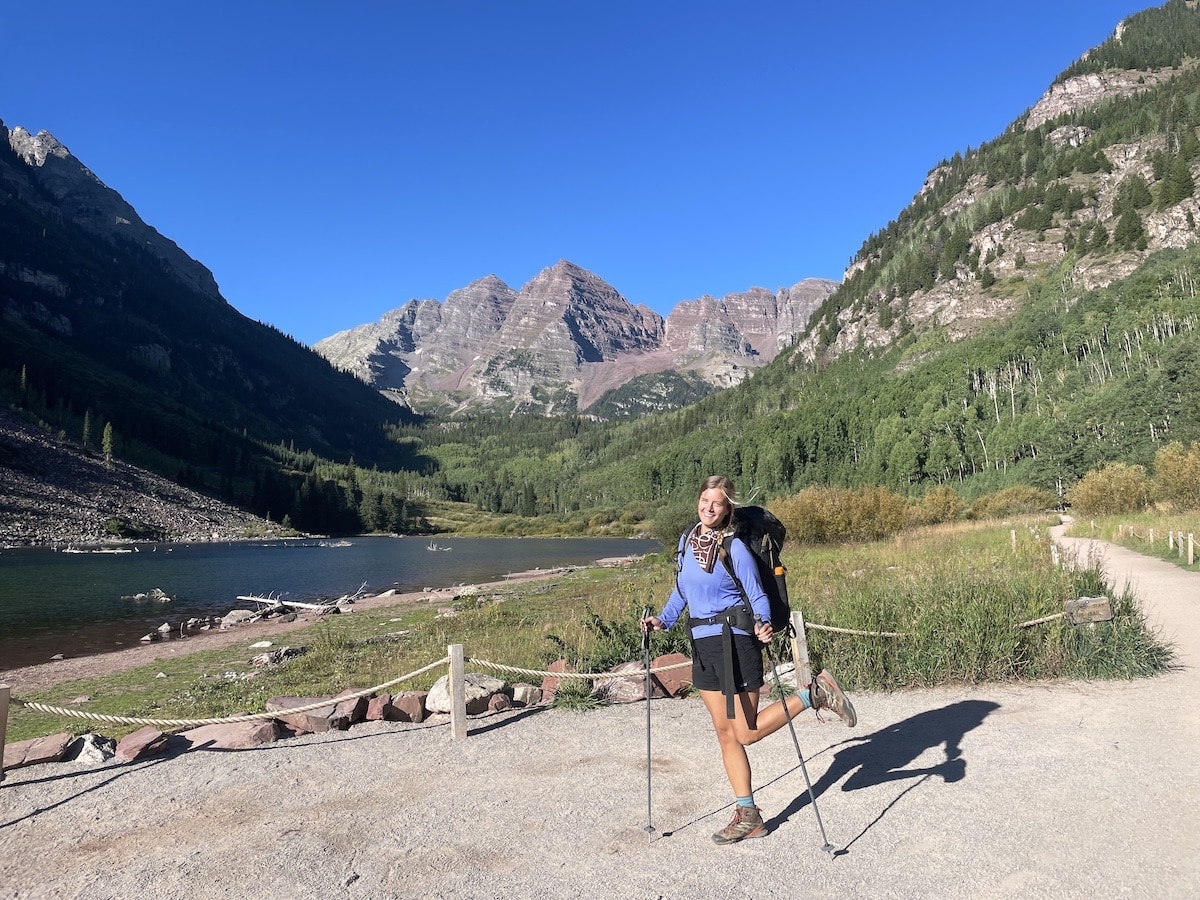
Hiking the trail
I hiked at a steady incline for a little over 1.5 miles. My fresh legs and adrenaline made this first stretch pass quickly.
Before I knew it, I reached the wooden signs that mark the fork to decide whether to continue clockwise or counterclockwise. Since I had planned the itinerary and campsites to hike the loop clockwise, I followed the sign pointing toward Crater Lake.
I reached Crater Lake around 9:30 AM and stopped again for some photos. This scenic lake is surrounded by the iconic peaks of the Maroon Bells and beautiful aspen trees.
Many people choose this at their ending point for a day hike; however, it was just the start of my journey.
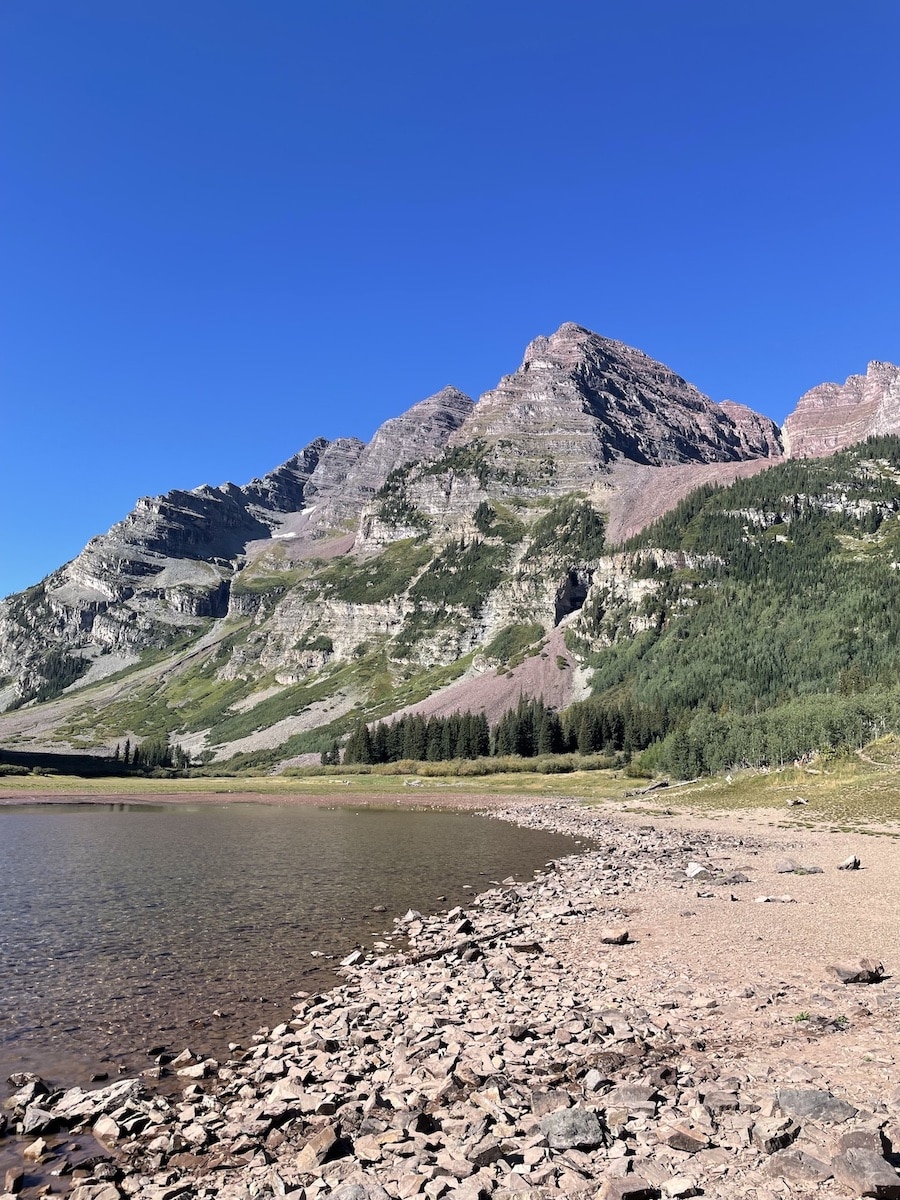
I hiked uphill on the rocky trail in the sun, stopping only once for a 20-minute break in a spot with shade to eat lunch. I would have liked to stop and rest more, but I knew I had many miles to cover on that first day.
While hiking to West Maroon Pass, I enjoyed the views of the green grass, remaining wildflowers, and green aspen trees that were just starting to turn yellow around us. This section of the Four Pass Loop follows West Maroon Creek, so there were ample opportunities to refill my water as needed.
The trail was clearly marked, and I interacted with many encouraging backpackers. After four hours, I reached the summit of West Maroon Pass.
West Maroon Pass
Although it felt difficult at the time, West Maroon Pass was probably the easiest pass I climbed out of the four mountain passes in the loop. The incline was steady and manageable.
From Crater Lake to the top of West Maroon Pass, you gain 2,367 feet of elevation over 4.3 miles. I enjoyed the vast views of the Maroon Bells wilderness at the summit.
The descent was challenging, as the rock scree was loose and slippery. I felt thankful for my trekking poles and grippy hiking boots !
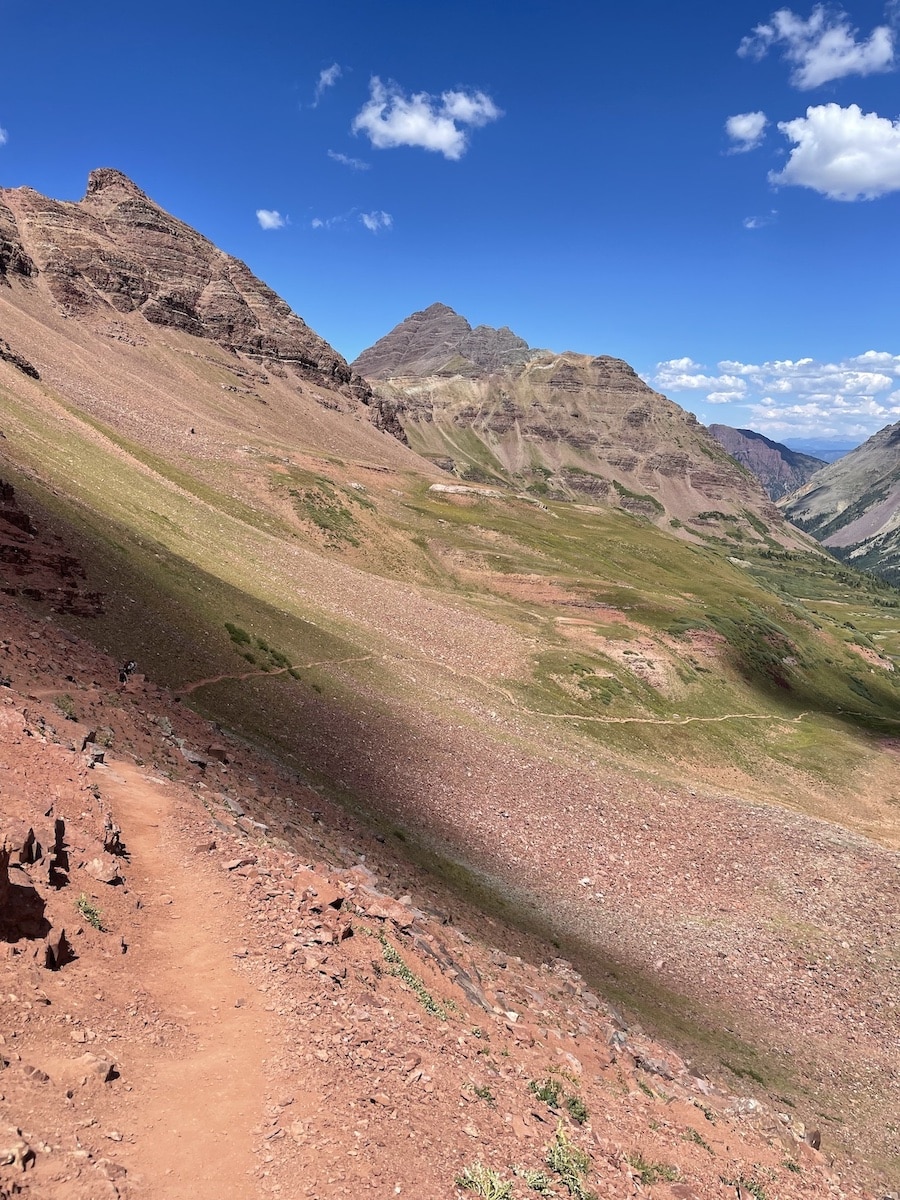
Frigid Air Pass
Two hours after I reached the summit of West Maroon Pass, I found myself on the top of Frigid Air Pass. Although the ascent of Frigid Air was relatively short, it was extremely steep.
You gain almost 500 feet of elevation in half of a mile while hiking above 12,000 feet. I needed to stop for frequent breaks to catch my breath before taking a few more steps.
Read next: If you easily feel winded when you hike, check out this article about improving your lung capacity for hiking . Employing some of the exercises mentioned will undoubtedly help when hiking above 10,000 feet.
As I descended Frigid Air Pass around 3:30 PM, I felt exhausted and desperate to find a camping spot to settle in for the night.
I thought I would find a campsite relatively quickly; however, it took about two hours after I had reached the top of Frigid Air Pass before I found a place to set up camp. This was due to a lack of dispersed campsites at the southern tip of the North Fork Zone.
I found a spot in Fravert Basin along the Crystal River and ensured I was 70 steps away from the water. I set up my tent around 5:30 PM, made dinner, and fell asleep shortly afterward to prepare for another long and scenic day of hiking.
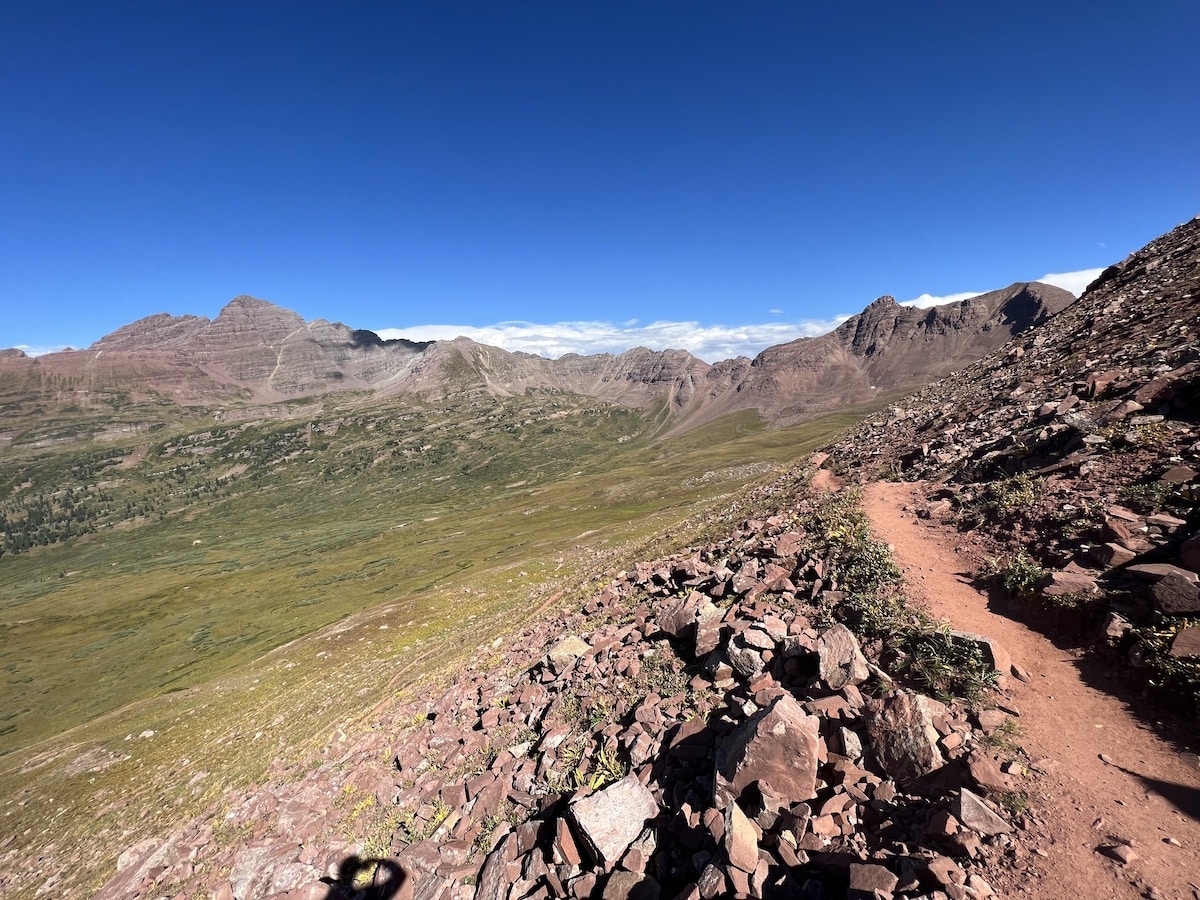
Day 2: North Fork Zone / Fravert Basin to Upper Snowmass Zone
Day 2 trail basics.
- Distance : 9 miles
- Mountain Passes : 1
- Elevation Gain : 2,142 feet
- Elevation Loss : 1,569 feet
- Permit : Upper Snowmass Zone
Hiking in Fravert Basin
On the second day, I departed my campsite around 7:30 AM and set out on the trail. I enjoyed walking through Fravert Basin, which features forests, natural creeks, and waterfalls.
I also appreciated the comfort of the shade and the cushion of the pine needles beneath my feet while hiking that morning.

After hiking a few miles, I also reached the first (and only) water crossing where I needed to change into my hiking sandals . The water was low and only about 6 inches deep, but I did not want to risk hiking the rest of day in wet socks and boots.
I could have added two miles to my day to see Geneva Lake before ascending Trail Rider Pass. However, since I felt tired from the previous day and knew I had another long day ahead, I decided not to.
I stopped for a quick lunch at a small body of water before starting the ascent of Trail Rider Pass.
Trail Rider Pass
I remember the ascent to Trail Rider Pass feeling long and steep, and I moved slowly. To distract my brain and help pass the time on the trail, I struck up a conversation with a solo female hiker.
After telling her where I had camped last night, she told me that she had camped a few miles further into the forest of Fravert Basin in the North Fork Zone. She awoke to moose surrounding her campsite that morning! Although I did not see any wildlife on the loop, it was fun to hear about her experience and see her photos.
Around noon, I reached the summit of Trail Rider Pass. It was my favorite pass of the entire trip because I could see the beautiful blue water of Snowmass Lake.
The gorgeous water views plus the smooth descent from the top of Trail Rider Pass down to Snowmass Lake made it my favorite stretch of the Four Pass Loop trail.
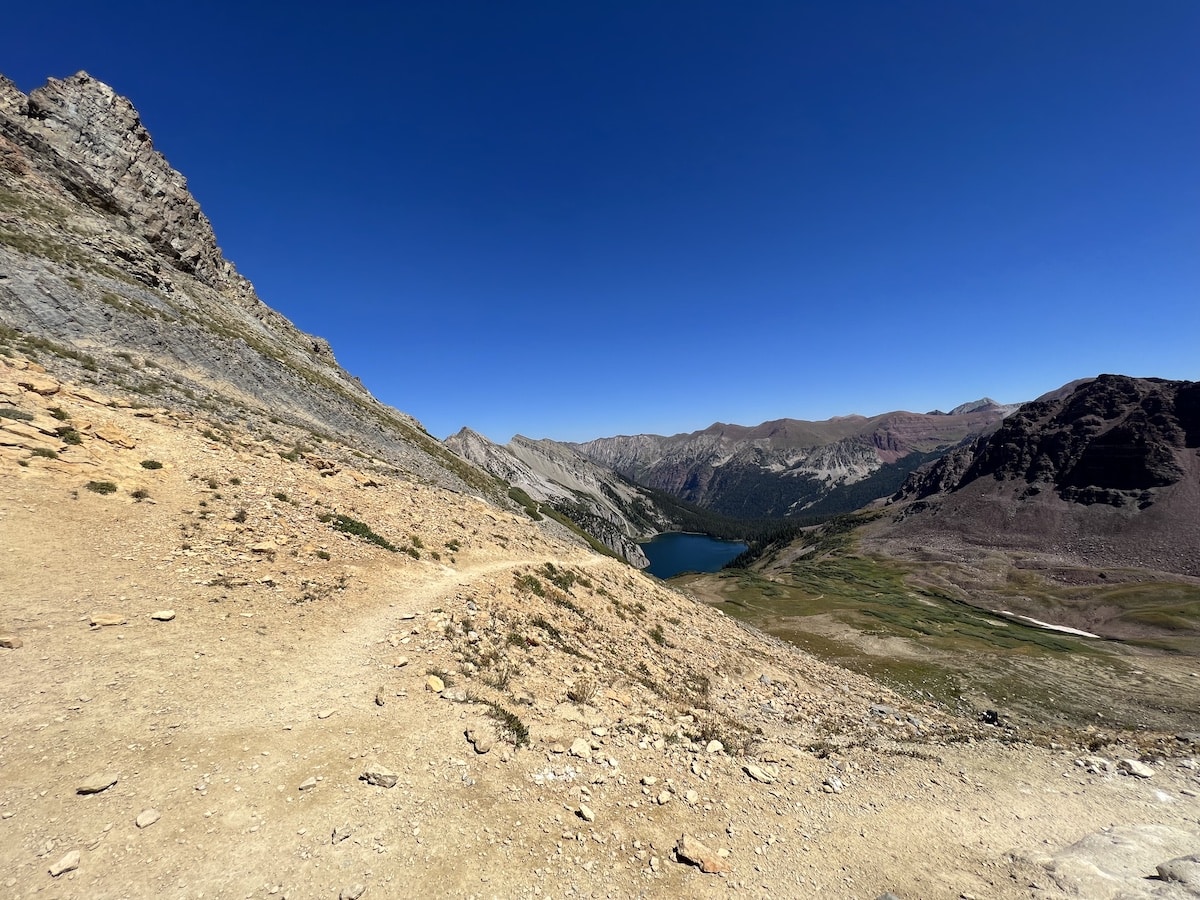
Snowmass Lake
I reached Snowmass Lake around 2:00 PM and stopped to eat a snack, rest my legs, and watch people swim in the cool water.
Snowmass Lake remains one of my favorite alpine lakes of all time. I wish I could have camped at this lake, but it would have made for a long last day of hiking.
After enjoying the lake for about half an hour, I continued to the Upper Snowmass Zone and found a campsite near Snowmass Creek. I set up camp around 5:00 PM, napped, made dinner, and fell asleep around 7:00 PM.
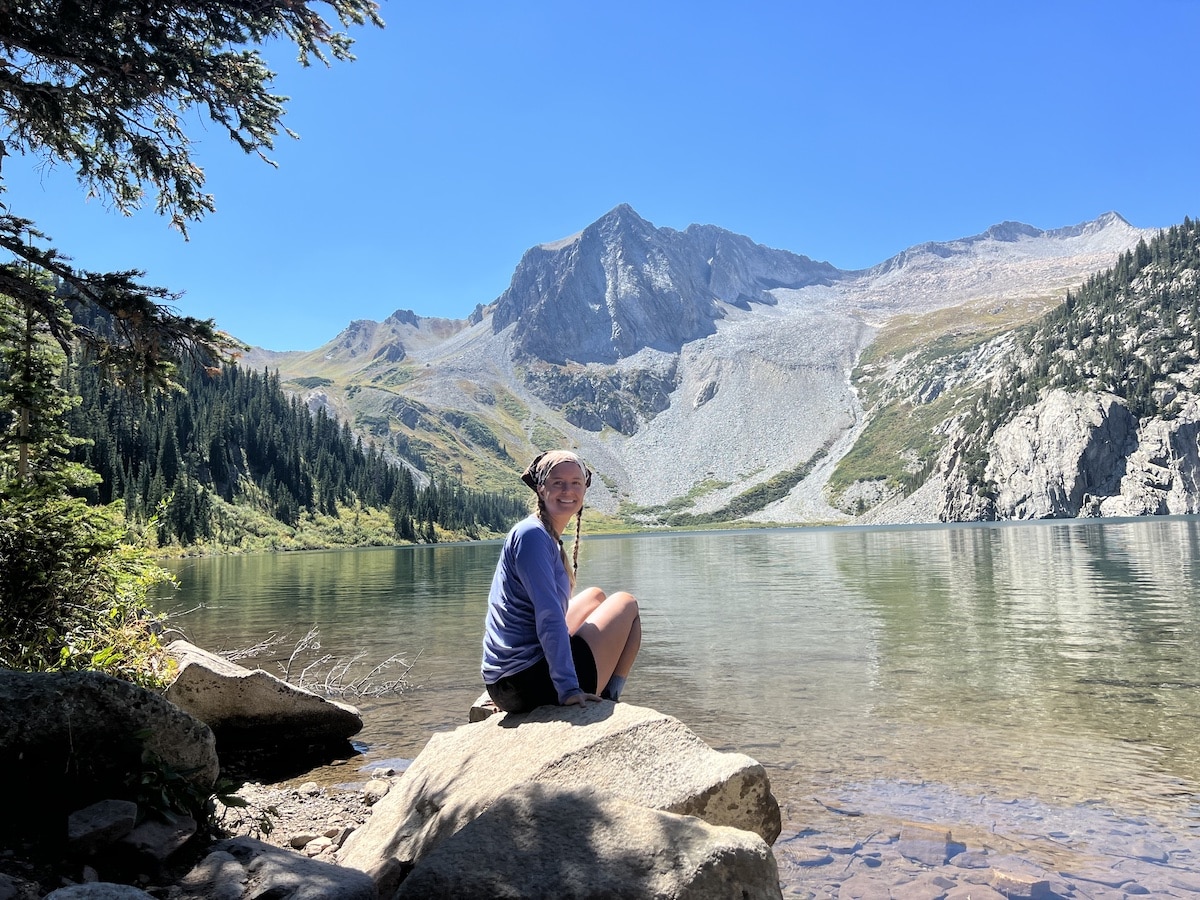
Day 3: Upper Snowmass Zone to Maroon Scenic Area
Day 3 trail basics.
- Distance : 7 miles
- Elevation Gain : 1,589 feet
- Elevation Loss : 2,867 feet
- Permit : N/A
On my final day on the Four Pass Loop, I awoke and departed my campsite around 7:00 AM. I enjoyed watching the sunrise light up the surrounding mountain peaks as I hiked through the forest to Buckskin Pass.
Buckskin Pass
The ascent of Buckskin Pass featured numerous steep switchbacks. After a slow and steady climb, I reached the summit around 9:00 AM.
I took a short break to take photos and admire the views from the top of the final pass of the loop.

The miles between the top of Buckskin Pass to the Maroon Scenic Area seemed to last forever. I admired the changing aspen trees around me but felt tired from the long days of carrying my heavy pack.
In my rush to finish, I slipped once and got a small cut on my hand. Unfortunately, I also got stung by a bee!
I arrived at the parking lot to catch the shuttle just before noon.
When I returned to the Aspen Highlands parking garage, I called my husband to tell him about my adventure. I grabbed a celebratory lunch with my friend at a restaurant in Aspen before hitting the road back to Fort Collins.
Camp at Willow Lake if time allows
Once you descend Buckskin Pass, there is an optional trail to see Willow Lake. The hike to Willow Lake adds 7 miles (and another steep climb) to the total hike. I decided not to do this extension; however, I have heard it is a secret gem with fewer people than the rest of the Four Pass Loop trail. If you have another night to spare, you could add on this lake (it is not in a permit zone and does not require an overnight permit to camp there).

Tips for Backpacking the Four Pass Loop
Here are some of my personal recommendations and things I wish I had known before backpacking the Four Pass Loop. Use these tips to help you know what to expect on the trail and plan your trip accordingly.
- Plan for an early start on day 1 : I recommend starting as early as possible on your first day to beat the heat. However, if an easy start is not possible for you, you may want to add on an extra night at the start of your trip and secure an overnight permit to camp near your starting point (Crater Zone if starting in Aspen or East Fork Zone if starting in Crested Butte).
- Campfires are not allowed in most areas : Campfires are prohibited at designated sites in Crater Lake and anywhere above 10,800 feet in the Maroon Bells-Snowmass Wilderness (including Snowmass Lake).
- There are no toilets : There are no toilets along the Four Pass Loop. Plan to bring toilet paper and human waste bags ( WAG bags ) or a trowel to dig a hole six to eight inches deep and at least 200 feet from water, campsites, and trails. To brush up on Leave No Trace, read this post on how to properly poop outdoors .
- Choose campsites close to water sources : If you pick campsites with access to water nearby, you can start each day with a full reservoir of 3-4 liters of water before you hit the trails. For this reason, I camped near the Crystal River in the North Fork Zone on my first night and Snowmass Creek in the Upper Snowmass Zone on the second night.
Four Pass Loop Backpacking Gear
Start with this 3-day backpacking checklist . I also recommend some specific pieces of gear below that you should consider for your Four Pass Loop backpacking trip.
Even if you plan to complete this trail in the summer, weather conditions may change unexpectedly at high elevations. It is crucial to prepare for all elements and cool evenings.
- Colorado Maroon Bells-Snowmass Wilderness Map
- Bear canister or Ursack (required)
- Trekking poles (helpful on steep switchbacks and descents)
- Wide-brimmed hat and/or Buff for sun protection
- Water filtration system
- Water reservoir or water bottle
- Rain jacket
- Insulated jacket like the Patagonia Nanopuff
- Microspikes (depending on conditions)
- First aid kit
- Water crossing shoes (there are 1-2 water crossings where you would need these)
- Toilet paper and trowel or WAG bags
- Portable stove for cooking (fires are not allowed at Crater Lake, Snowmass Lake, or above 10,800 feet)
- Swimsuit (if you want to swim)

Looking for more backpacking trails? Check out some more of our favorite routes:
- Backpacking The Trans Catalina Trail: Permits, Itineraries, Gear And More
- West Rim Trail Backpacking Guide In Zion National Park
- Ultimate Havasu Falls Camping, Hiking And Permit Guide (2024)
- How To Backpack Cirque Of The Towers In Wyoming (+ Itinerary!)
- Olympic National Park Beach Backpacking: South Coast Trail Guide
Save this post to Pinterest

Would you hike the Maroon Bells Four Pass Loop Trail? Please share your comments, questions, or stories from the trail in the comment section below.
Related Posts

Kaylin is a full-time van lifer with a passion for storytelling and a heart for adventure. She spends her days exploring national parks and dispersed camping in her Sprinter Van with her husband, Tom, and cattle dog, Willow. When she’s not on the road, Kaylin enjoys hiking, backpacking, and trail running. You can follow her adventures on Instagram @katekeepswild.
Leave a Reply Cancel reply
Your email address will not be published. Required fields are marked *
Save my name, email, and website in this browser for the next time I comment.
One Comment
Day hiked to Buckskin Pass, 1967 or ’68. Altitude got me. Returned to camp near Crater Lake. Next day hiked to TH and drove to Aspen, very ill. Friends put me up at Women’s Dorm, Aspen School. Lady friend, harpist, kept track of me while I recovered…a week! Thus, I learned 12000 feet and more are zones beyond my access. Did explore one or more gold camps and sites and experienced the splendor of final concert of Aspen Music school season at the great tent.

Learn how to backpack in the Colorado wilderness:
Get Outdoors
Safely. confidently. guided..

On your guided trip you will learn how to backpack into the Colorado wilderness, stay overnight and return with confidence.
All trips include a drink & cheese meet-and-greet a few days ahead of time, including a gear review of your essential backpacking equipment.

- Include a meet-up in Denver beforehand to coordinate and check gear
- Involve an overnight in the wilderness
- Are limited to a small number of backpackers
- May allow for exclusive groups
- Require some key personal gear
WHAT’S NOT COVERED
- Sherpa services
- Guaranteed bigfoot or UFO sightings

On your trip you will learn how to backpack into the wilderness, stay overnight and return with confidence.
This includes hands-on instruction ahead of time on choosing solid gear, adopting the right approach to your adventure, and practicing the core skills needed to backpack safely in the Colorado wilderness.
- Include an overnight in the wilderness
- Are limited to a small number of hikers
- Require independent travel to the trailhead
WHAT IS NOT COVERED

Overnight Backpacking Adventures
High valley overnight, difficulty: easy, super fun, waterfalls distance: near trailhead (<1 mile) elevation gain: 603 ft. (183 m) elevation loss: 132 ft. (40 m) altitude avg: 9,835 ft. (2,998 m).
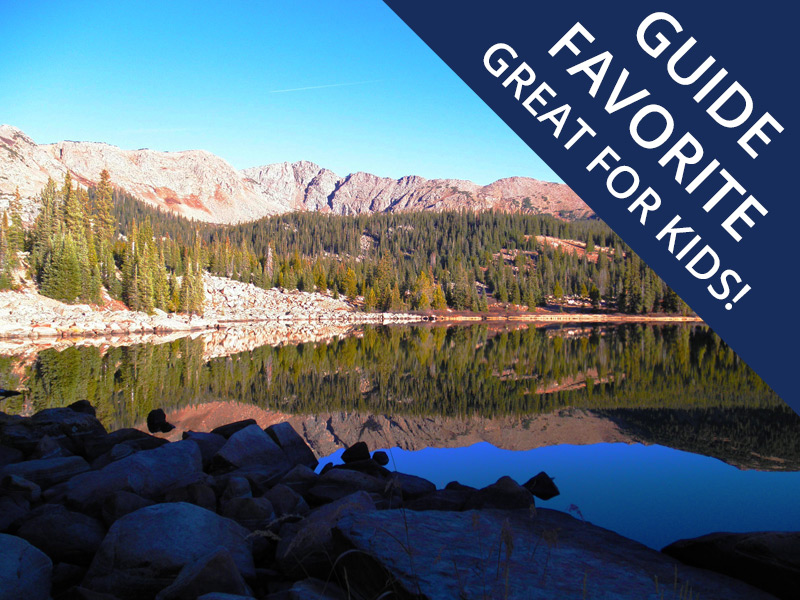
DIFFICULTY: DISTANCE: 1.62 miles (2.61 k) per day ELEVATION GAIN: 425 ft. (130 m) ELEVATION LOSS: 617 ft. (188 m) ALTITUDE AVG: 11,191 ft. (3,411 m)
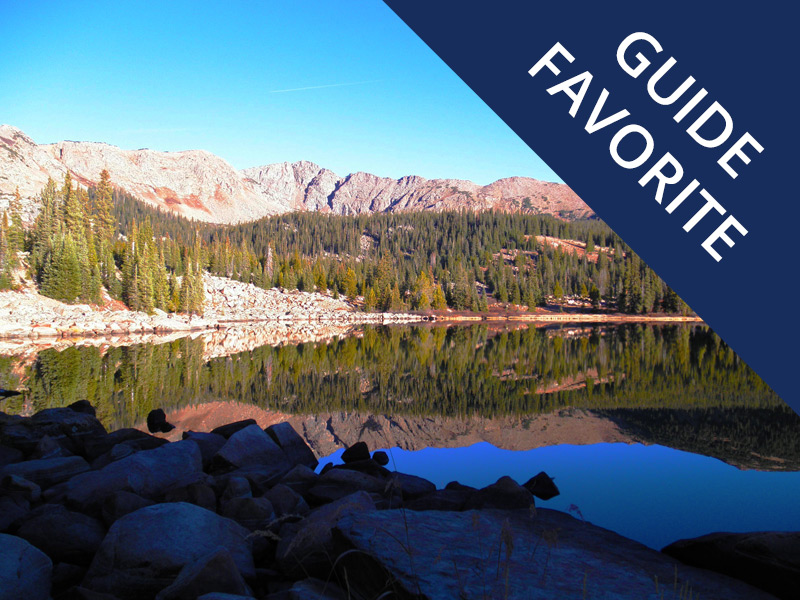
DIFFICULTY: DISTANCE: 3.26 miles (5.25 k) per day ELEVATION GAIN: 1,526 ft. (465 m) ELEVATION LOSS: 546 ft. (166 m) ALTITUDE AVG: 10,839 ft. (3,304 m)

ON THE UFO TRAIL
Difficulty: distance: 3.04 miles (4.89 k) per day elevation gain: 568 ft. (173 m) elevation loss: 114 ft. (35 m) altitude avg: 11,472 ft. (3,497 m), holy cross wilderness, difficulty: distance: 4.12 miles (6.63 k) per day elevation gain: 705 ft. (215 m) elevation loss: 779 ft. (237 m) altitude avg: 10,429 ft. (3,179 m).
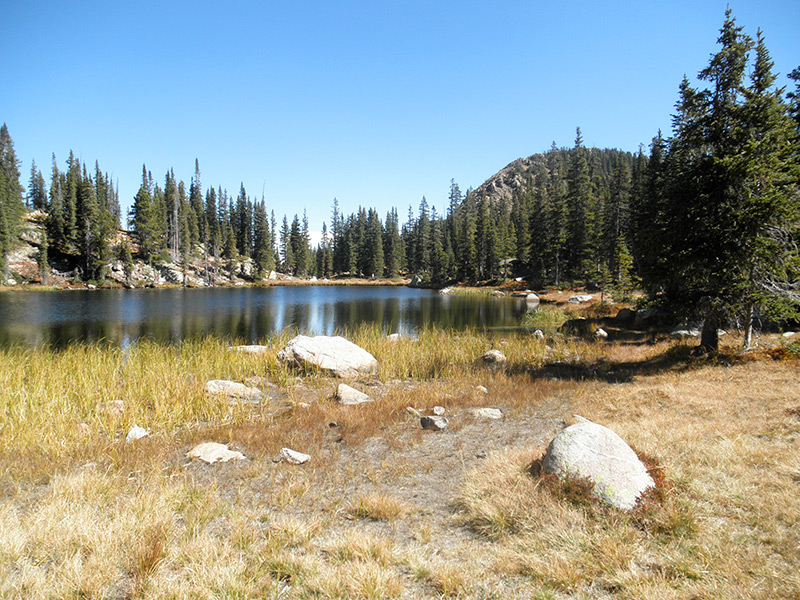
PORCUPINE LAKE
Difficulty: distance: 5.06 miles (8.38 k) per day elevation gain: 2,557 ft. (779 m) elevation loss: 1,140 ft. (347 m) altitude avg: 11,123 ft. (3,390 m).

CAMP HALE HIGHLANDS
Difficulty: distance: 15.2 miles (24.46 k) total elevation gain: 4,532 ft. (1,381 m) elevation loss: 4,374 ft. (1,333 m) altitude avg: 11,087 ft. (3,379 m).

MULTI-DAY ADVENTURES
Adventures spanning several or more days are available. each trip is personalized based on individual or group skill level. some prior backpacking experience is recommended., coming soon.
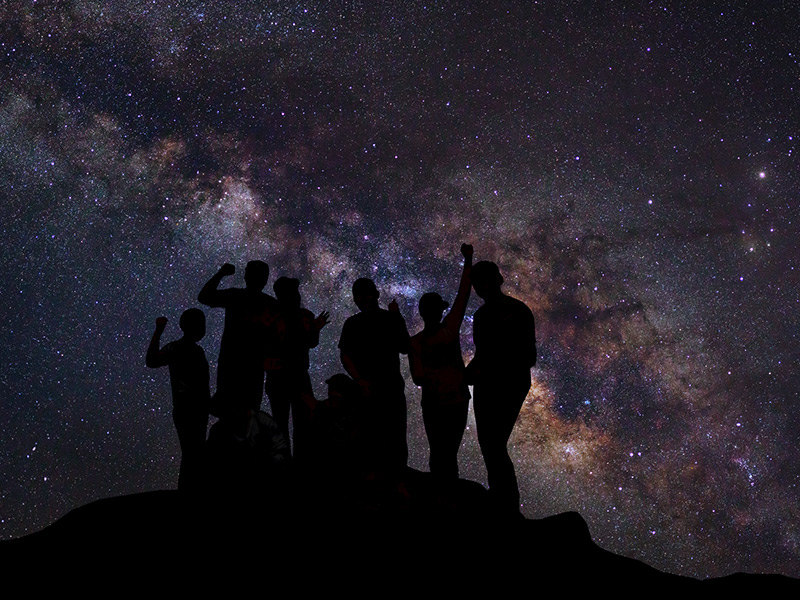
At night the wilderness transforms into a place rarely experienced by humans. Otherworldly and dreamlike, walking the forest at night requires added safety but can be rewarding and even transformative.
Guided trips.
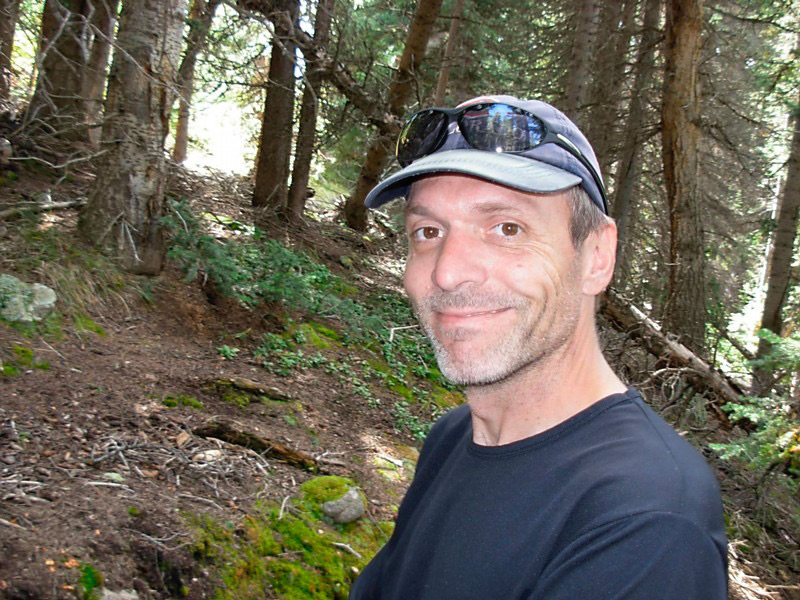
What are you waiting for?

3 Day 2 Nights – Four Pass Loop Backpacking Trip in Colorado (Day 3 – Last Day)
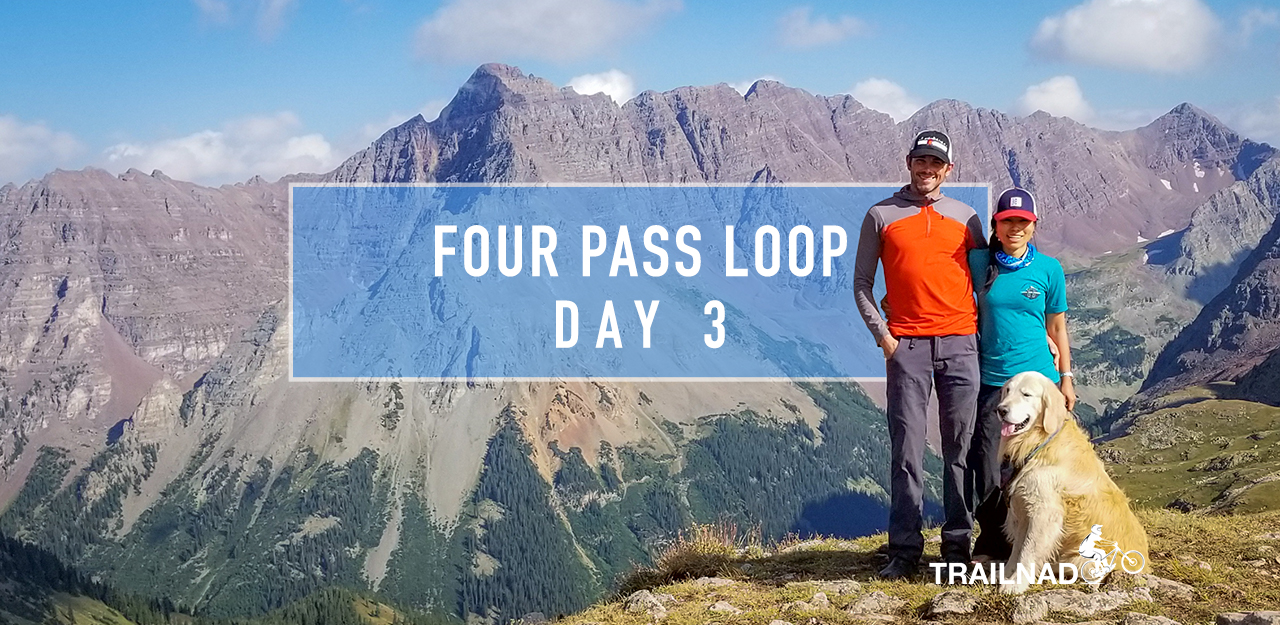
Day 3, it was definitely a push. Big push! Two more passes to conquer; Trail Rider and Buckskin Passes. We were determined to complete this challenging trip!
Day 3 – friday august 3, 2018.
It had been drizzling all night. By 7 am, we were up. We fed Tsali and started to pack. Our tent was still damp, but we would deal with it later. By 8 am, we were all packed and ready to hike. We didn’t spend much time here (no breakfast, no coffee) because we wanted to find a better spot to cook and make coffee.
We hiked for an hour until we spot a little lake with a good area for hanging out with pine trees around it. We stopped there, filtered more water, and made our breakfast and coffee there.
We spent our time there around 40 minutes before started hiking again. We’re heading toward Trail Rider Pass (our third pass of this trip). On that day, it was cloudy and drizzling all morning. The weather was quite cold. I was hiking with my down jacket and rain jacket on the top.
Trail Rider Pass
At 10.40 am, we got to the top of Trail Rider Pass. Then it started to rain more heavily, cold, and windy. I couldn’t take too many photos there before started to hike again.
Snowmass Lake
Not that much further from Trail Rider Pass , there was the Snowmass Lake. The lake was beautiful even on such a cloudy day. The rock formation around the area was very stunning. Everything was big… It made us realize how small, tiny, and unimportant we were…and how tiny our problem was. I just had some deep thoughts there.
I remembered that on that day, we didn’t eat much. Both of us were more determined to complete the hike before it got too late at nigh. It was a long hike and not too many stops. Even we were in a mission to complete the hike, we didn’t miss to appreciate the beautiful scenery surrounding us.
By 3.15 pm, the weather started to clear up a little bit. We got a little bit more sunshine. At that point, my pants were pretty damp and my socks were totally wet. Even I had stopped several times to squeeze some water out of my socks and shoes, they were still pretty wet.
We took this opportunity to rest, to get changed with dry cloths and socks, and poured water out of my shoes (again) and let them dry. One good thing of Colorado is that the air is always dry. It didn’t take long for my shoes to dry again. Putting my fresh and dry socks on in my no longer wet shoes made me really happy. It felt almost like I just took a shower! SO FRESH AND SO CLEAN!
An hour later, we started to hike again. This time, we were heading toward Buckskin Pass; our last pass of this trip.
Buckskin Pass
YES YES YES! At 5.30 pm, I made it to the top of Buckskin Pass. It was such a perfect time to finish the last pass. The weather was so perfect. Clear sky for us eventually! Trent and Tsali were already on the top waiting for me and drying our tent.
I personally like this pass the most. I think it was because of everything. The weather was so perfect and that the view was so stunning. It was the only pass that we got our family picture as well. Do you agree from looking at the pictures?
From there, there was no stop. We pushed every last bit of our energy to make it back.
It was only around 2 – 3 hours for us to hike back. But I had to admit that the hike from there felt like forever. I was super tired. The trail was still pretty challenging on the way back. At that point, I felt like I already had seen it all and ready to stop, sit, and lay down… But yes, only few more miles to go… Push it, push it! The sun was going down.
At 8.30 pm, I got to Maroon Lake. Trent had already let Tsali to swim. I was almost in tear from my exhaustion and happiness. The parking lot was just right by Maroon Lake. I almost could just sit and take my shoes off! When I got to the closest parking lot, Trent had me wait there with Tsali. So that he could hike back to our car and come back to pick me up. I was happy, thrilled, and yes totally worn out.
Lessons Learned from Day 3
27.1 miles (45 km), 7,734′ Ascent, -7,735′ Decent, 11% Avg Grade (6 ° ), 55% Max Grade (29 ° ), 12,460′ High, 9,567′ Low.
Never underestimate yourself!
Success means crossing a limit. To cross a limit you need to assume that you have a limit. Assuming a limit is underestimating yourself. If you have no boundaries then where is your success? – Sri Sri Ravi Shankar
4 thoughts on “3 Day 2 Nights – Four Pass Loop Backpacking Trip in Colorado (Day 3 – Last Day)”
Hey Nan, absolutely LOVED reading your trip! My boyfriend and I are heading to the four pass loop for the first time, and I was nervous about where to go until reading this..so thank you! Can’t wait to experience this.
(Any tips on backpacking clothes as another blog would be something I’d love to read by you!)
Hi Becca, sorry for such late response. Yes, I wrote about backpacking cloths and what to bring already. Here is a link for that. https://trailnado.com/camping/what-do-i-need-to-know-about-cold-weather-or-winter-camping . How was your trip to 4 pass loop?
Hello! I loved reading about your trip and seeing your pictures! I did the loop last July in 4 days and 3 nights solo – it was tough but amazing! I’m thinking about going back again this year and bringing our dog Sammy. He’s a 5 year old lab and I took him on one overnight backpacking trip last August. He did a really good job! I just wondered if you have any info or tips for going on the loop with your dog – did you carry extra water for Tsali? Or just let him/her drink from the streams? And when it was rainy and cold and s/he got wet, were you worried about Tsali getting cold and not being able to warm up? I got lucky and had great weather, but I know people the week before and after had a lot of rain. So that’s something I worry about a bit with Sammy… Any info you have would be greatly appreciated! Thank you!
Hi Helen! Tsali did very well when we took him on 4 pass loop. We do both. We carry extra water for him and also let him drink from the streams. Luckily, there are so many streams along the trails. (He got to swim a lot too!) We always had enough water for him on that trip. Tsali is doing much better in the cold than in the heat. We did get some heavy rain while hiking and all got pretty wet before going to bed. We let Tsali sleep with us in the vestibule area of the tent when he was wet…. and we also let him sleep with us in the tent when he was dried to keep him warm. He was fine in vestibule area as well. The heat from our bodies keep the tent warm… If your tent is not too big, it will be easier to keep it warm with both body heat. I will also be in CO this year during that time. Maybe we might cross paths!
Leave a Reply Cancel reply
Your email address will not be published. Required fields are marked *
Top 3 Beginner Backpacking Trips in Colorado's Front Range
By: Eric Schuette + Save to a List
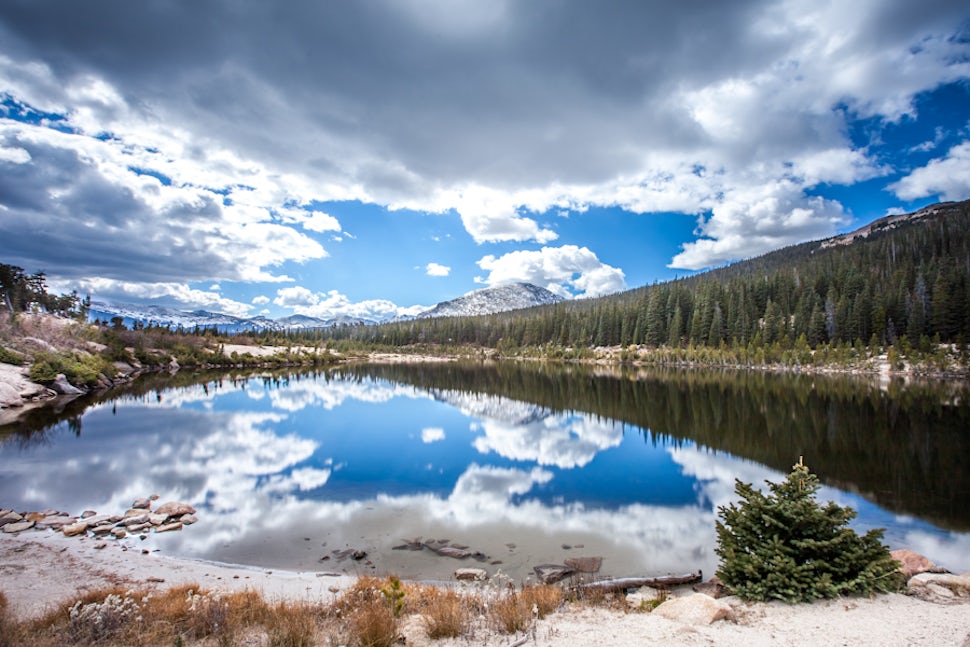
When people think of summer in Colorado, one of the experiences most likely to put a smile on your face is backpacking. Backpacking in the mountains of Colorado is one of those activities that everyone has to experience (yes, has to). Although you will have to carry a little extra weight: the experience of setting up a camp, watching the stars come out, and waking up to the sun just cresting the horizon is often an unforgettable one. It is also an activity that can be a little intimidating at first, especially in knowing some great places for beginners. Here are 3 destinations that are easy, fun, and beautiful!
1. Sandbeach Lake in Rocky Mountain National Park
Sandbeach Lake is a popular hiking and backpacking destination in the park. Sandbeach Lake can be reached via 4.4 mile trail starting at the Sandbeach Lake Trailhead in the Wild Basin section of Rocky Mountain National park. Wild Basin does not see the same number of crowds as the rest of the park, but that is only due to the length of hikes and not the beauty that lies ahead of you. In fact, many seasoned hikers would rate this area as having some of the grandest scenery in the Front Range. Mt. Meeker will be standing proudly above you, ancient bristlecone pines line the shore, one of the finer alpine beaches in the park, and the possibility of catching a native greenback cutthroat trout all contribute to the wonderful experience you are likely to have here. Sandbeach Lake has several backcountry campsites but one must get a permit. Permits can be purchased at the backcountry office located next to the Rocky Mountain National Park’s beaver meadows visitor center. Learn More .
Inside Tip: Sandbeach Lake is considered by many to be the finest autumn hike in the Wild Basin area.
2. Rogers Peak and Heart Lakes in the James Peak Wilderness
Rogers and Heart Lake are beautiful lakes that sit high in the James Peak Wilderness. Both lakes can be reached via a 4 mile trail from the East Portal Trailhead. The lakes sit at treeline and offer numerous opportunities to pitch a tent. The peaks surrounding the lakes offer an excellent backdrop to relax or for the more adventurous a short but steep trail climbs to the continental divide where you can reach several the summits of several mountains. There are no permits needed for camping in the area but restrictions do apply (one should look into wilderness camping prior to any trip) including gas only stoves, no campfires, and keeping your campsite back 100 feet from water sources. Learn More .
Inside Tip: The fishing in Heart Lake can be very good and often people make the trek for that reason alone.
3. Crystal Lakes Near Breckenridge
There are several popular and beautiful areas around Breckenridge that are popular for campers and backpackers. The Crystal Lakes are considered by many to be one of the highlights. Although one can reach the lower lake with a 4-wheel drive vehicle, most opt to walk the 2.5 miles from the Spruce Creek Trailhead. Most camping is done at the lower lake but with time the upper lake is another 1.9 miles and is a beautiful destination. This area can be busy during weekends but during the week (or early weekend risers) will find ample camping spots around the lake. Restrictions are few but it is always a good idea to check with the White River National Forest office to be safe. Learn More .
Inside Tip: The area around and above Crystal Lakes can be very good for viewing mountain goats and bighorn sheep. Smaller animals such as pikas, ptarmigan, and marmots are also plentiful.
We want to acknowledge and thank the past, present, and future generations of all Native Nations and Indigenous Peoples whose ancestral lands we travel, explore, and play on. Always practice Leave No Trace ethics on your adventures and follow local regulations. Please explore responsibly!
Do you love the outdoors?
Yep, us too. That's why we send you the best local adventures, stories, and expert advice, right to your inbox.

These Colorado 14ers are newly off-limits to the public
The Outbound Collective

Gray Wolf Reintroduction, What Does 2023 Look Like In Colorado?
Kalli Hawkins
Proposition 114 passed in Colorado and now the planning process begins. What does 2023 look like for gray wolf reintroduction?

The United States Should Adopt The Allemannsretten
We strive to work together to protect public lands and fight for the well-being of our future generations so they, too, may be able to experience these landscapes. But what if I told you we haven’t been given access to over half of what’s really out there?

5 Great Spots in Colorado for Fall Colors
Five options among many, many more.

Lessons Learned From The Colorado Trail
Every experience in the outdoors can prove to be a learning opportunity. Here are the lessons I have learned!
- Local Adventures
- Tours and trips
- Camping Nearby
- Outbound PRO Membership
- Add your property
Mobile Apps

© 2024 The Outbound Collective - Terms of Use - Privacy Policy
The Earnest Voyager
Denverite. world explorer..
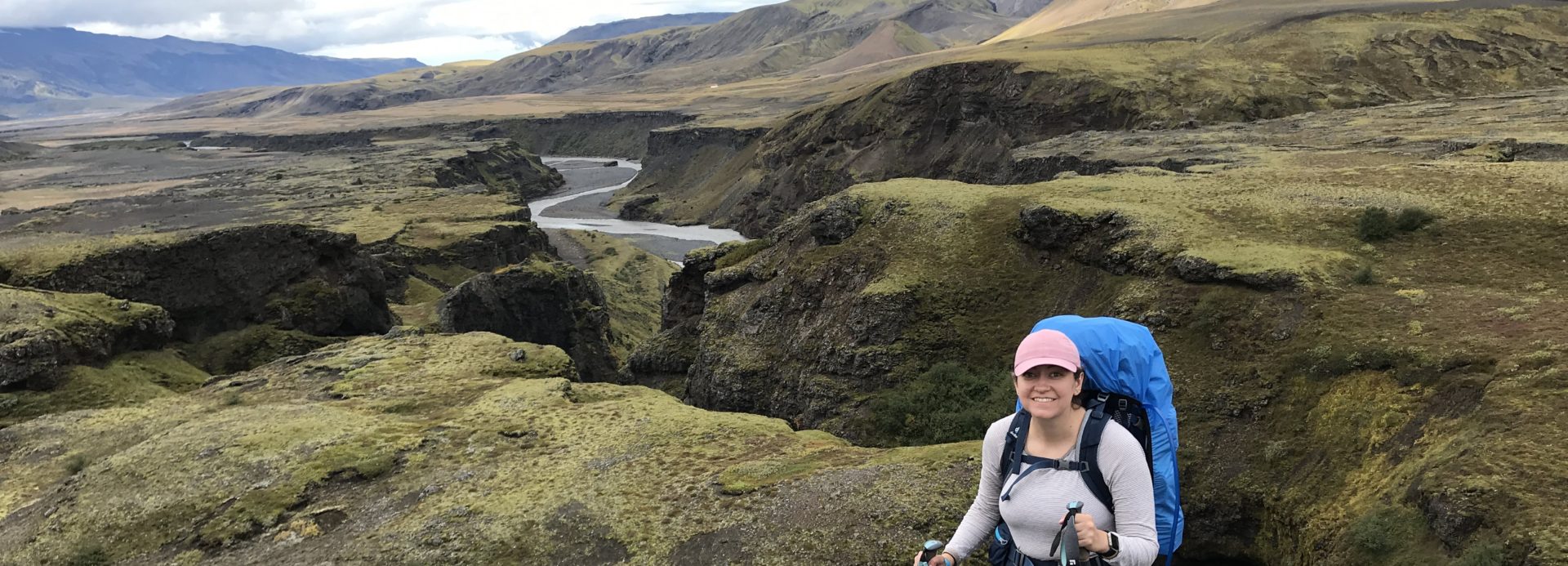
Beginner Backpacking Trails in Colorado
Updated March 15, 2024: Here are my top beginning backpacking trails in Colorado. These are all within a couple hours of Denver/the Front Range. They are also lower elevation compared to a lot of the backpacking trails in Colorado, so these are good warm-ups for the early season of backpacking in May and June. Many higher elevation trails are not feasible to access until July and August anyways due to snow. Before you go, check the website of the appropriate park or area to ensure that it is open, check fire restrictions, permitting/fee information, if applicable, and conditions. Also check AllTrails for recent reviews for conditions, and both AllTrails and COTrex often have campsites marked by users on the map.
Safety First : I highly recommend testing all gear at home before leaving even on an easy overnight, carrying the 10 essentials and practicing Leave No Trace , and educating yourself as much as possible (I have taken hiking safety and backpacking classes through REI, Colorado Mountain Club, and Kula Academy). I am a backpacker happy to share my experiences, but I highly recommend getting expert education and not relying solely on social media for backpacking knowledge.
Golden Gate Canyon State Park
The backcountry sites at Golden Gate Canyon State Park , also about an hour from Denver near Golden, are perfect for beginning backpacking. You will need to reserve a site (currently says on the website to call to reserve); when I went in 2019, I believe the fee was $18 per night. There are several sites to choose from (even some shelters so you can ditch the tent) on a variety of trails. I did a solo overnight here in July 2019 as part of my preparation for backpacking in Iceland and really enjoyed. I did the Mountain Lion Trail and camped at Deer Creek campsites. It’s about a 7 mile loop with 1500 feet elevation gain, and I made the longer part of the hike the first day so I could have an easy hike out in the morning. There are some great views and beautiful forest landscape along the way!

It’s good practice hiking uphill with a pack, but not overly difficult or lengthy, and it’s nice to have a designated campsite near the creek with a metal bear box (no bear bag hang needed here!). Otherwise, the campsites are completely basic and give you good practice with your tent setup.

Lost Creek Wilderness
Lost Creek Wilderness, 2 hours from Denver on Highway 285, has many trails and a lot of options for out-and-back and loops. It’s a very popular backpacking area, so you will be in good company. I did a solo overnight trip over 4th of July 2019 on the Goose Creek Trail #612.
This entire trail is about 12 miles total out-and-back with about 2300 feet elevation gain, but I camped about 5 miles in near the creek. Similar to Mountain Lion Trail, this is a good bit of a challenge uphill with a pack but not too difficulty, and a good distance for a beginner trip. To level up to a multiday trip, I recommend the 23 mile loop along Lost Creek Wilderness Loop that Nick and I did also July 4th break 2020. We did it as 4 days/3 nights, which we really enjoyed as Nick’s first multiday backpacking trip. It includes the Goose Creek Trail and adds on a few others to make the loop. The loop adds on so much diverse scenery from big rock formations to aspen forests, and it was a challenge, but we loved it.
This is creekside camping along Goose Creek Trail.

This is our last campsite on the loop, among the aspens.

Colorado Trail Segment 3
So – we have actually technically backpacked this two times and never stayed overnight; but I will explain why that makes this the perfect beginner’s backpacking trail.
First of all, I recommend the Colorado Trail official guidebook and data book (at a minimum, the data book), particularly if you will be backpacking any more in Colorado, because these guides include things like campsites and water sources and trailhead information. Note that if you start at Little Scraggy, the last times I’ve been it’s a paid, cash only lot (but there are additional places to park not in the lot that are free). This segment is also very popular for mountain biking, as an FYI.
One reason this is a good beginner trail is because like all the ones I have here, it is lower elevation so you can get out here earlier in the season, maybe even late May or June, and be snow free. Its ascent is also pretty gentle and there is good water and camping. You also do not have to backpack all 12 miles; you can do an out and back of your choosing.

Okay, so in May 2021, here is why we ended up not staying overnight. We backpacked out and set up our campsite. In doing this, we realized that we were missing a piece of our tent and had to rig it, so it was a bit wonky, as you see below.

The second thing that went wrong was our water filter did not work. I always bring backup, so I had iodine tablets. We used those, but with the weather also deteriorating to rainy conditions and the two issues we had, we decided to hike out and just go home. That’s the nice thing about this backpacking trip – you can easily bail and make it back to Denver if you need to! And the best part, which I highly recommend, is you can stop at the Snowpack Taproom in Conifer. They have delicious food, beer, and even had live music when we went, so even though we were disappointed, it was a fun way to quell our disappointment. Plus, we had backpacked 12 miles, which is not bad!
In June 2023, we planned to do a loop in the Lost Creek Wilderness for a four-day weekend, but it had been insanely rainy and the road was flooded out. We went to Segment 3 as an alternative, but then it started raining and we were like…maybe we should just go to Snowpack. We did exactly that, went home, and salvaged the weekend by camping in Twin Lakes and Salida.
So yes, this is a great beginner trail not just because it’s easy to bail, but because it is beautiful, easy to get to and from, and has good water and campsites.

Ceran St Vrain
EDIT 5/23/2021: Since I wrote this, camping is closed here for a year due to overuse . This is why I always encourage you to look up regulations before you go! Just outside Jamestown about an hour from Denver, Ceran St. Vrain Trail is only 1.9 miles one way and fairly flat alongside a creek, with lots of camping spots by the creek. The featured photo at the top of this post is me backpacking along Ceran St. Vrain trail. Not only is it fairly easy, but it’s a beautiful, peaceful, forest escape!

This is a perfect first overnight backpacking trip, as you can get used to using gear, but are not too far away from the parking lot if anything happens. Check out my post on our trip to Ceran St. Vrain near the end of June 2020; this was Nick’s very first backpacking trip.

You can also take a side trip up a steep 4-wheel drive road to Miller Rock for 360-degree mountain views, so despite the short miles, there is plenty to do. The Forest Service says conditions are best mid-May through October, so depending on snowpack/conditions, this could be a good early season and late season trip.
Those are my top beginner backpacking trails so far in Colorado; I’m sure there’s more great options that I’ll continue to discover. I’m looking forward to heading back to these areas soon as backpacking season starts up again.
2-FOR-1 GA TICKETS WITH OUTSIDE+
Don’t miss Thundercat, Fleet Foxes, and more at the Outside Festival.
GET TICKETS
OUTSIDE FESTIVAL JUNE 1-2
Don't miss Thundercat + Fleet Foxes, adventure films, experiences, and more!
Powered by Outside
Denver's Top 5 Backpacking Trips
Colorado's best multiday trips, as selected by backpacker local scout stasia callaghan.
Heading out the door? Read this article on the new Outside+ app available now on iOS devices for members! >","name":"in-content-cta","type":"link"}}'>Download the app .
Denver is close to countless superlative backpacking trips–so you know that these picks, which range from the jagged San Juan Mountains to the lonely Gore Range to the iconic Rocky Mountain National Park, must be really special. Our top five stand out from the crowd with their incredible scenery, wildflowers, wildlife, challenge, and solitude.
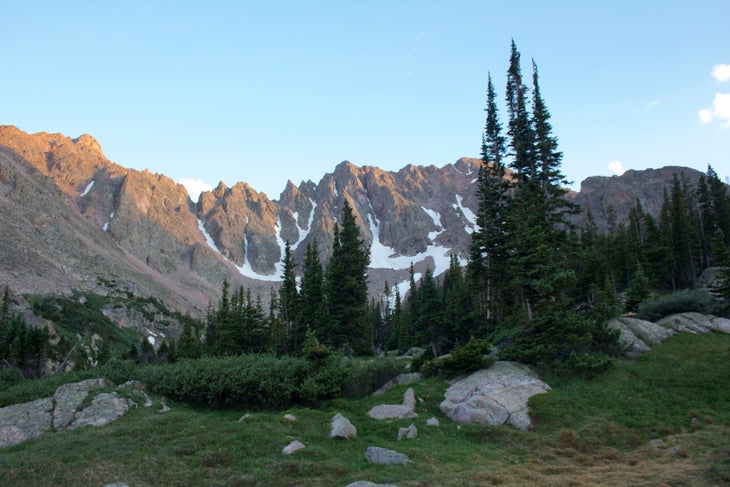
1. Willow Lakes, Eagles Nest Wilderness
Trailhead: Rock Creek (Silverthorne)
Mileage: 16 (round-trip)
Elevation gain: 2,367 feet
Drive from Denver: 1 hour 45 minutes
The Gore Range is one of Colorado’s hidden gems, and this easy out-and- back gives weekenders some serious bang for buck. Classic Summit County views of Red Peak’s jagged ridgeline trace the horizon while three perfect subalpine lakes—Lower Willow, Upper Willow, and Salmon Lake—dot the surrounding landscape. Do it in a single overnight or bring the fly rod and spend an extra day on the lake’s shore casting lines and basking in the Colorado sun.
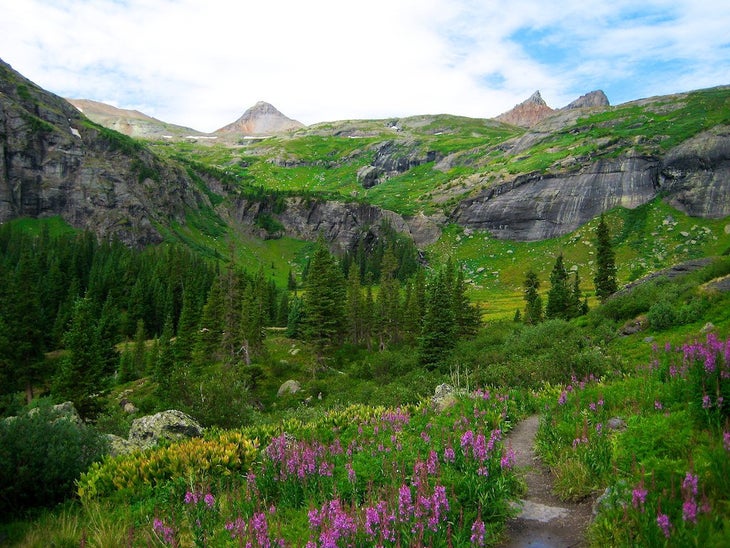
2. Ice Lakes & Island Lake, San Juans
Trailhead: South Mineral Campground
Mileage: 9 (round-trip)
Elevation gain: 3,000 feet
Drive from Denver: 6 hours
This one includes a lot of windshield time, but it’s worth it: You’ll be immersed in the classic southwestern Colorado scene of turquoise lakes surrounded by rocky, high-elevation peaks. Bonus: This trail’s got waterfalls, too. Be prepared for a steep hike in; hitting it early leaves plenty of time to linger at the lake after setting up camp. You’ll hit Lower Ice Lake Basin first, then continue up to Ice Lake and then Island Lake at 12,400 feet. Do it in midsummer to catch blooms like columbine, alpine forget-me-nots, and sky pilot, or see killer fall colors later in the year.
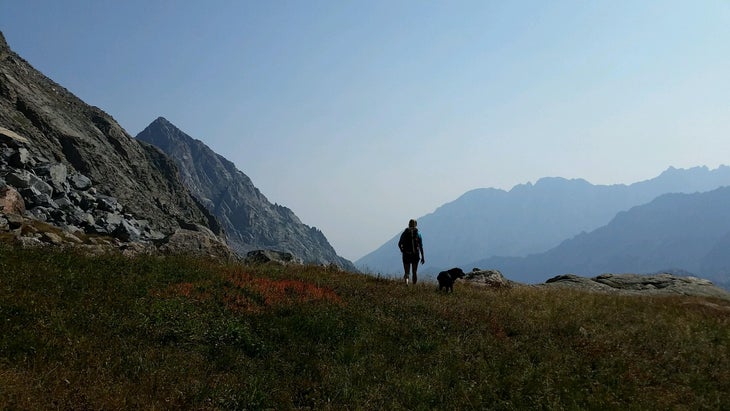
3. Bubble Lake via Kneeknocker Pass, Eagles Nest Wilderness
Trailhead: Piney Lake
Mileage: 13 (round-trip)
Elevation gain: 3,500 feet
Distance from Denver: 2 hours 30 minutes
Getting anywhere in the rugged Gore Range is far from easy, and venturing all the way to Bubble Lake, tucked deep in the craggy peaks and scree-covered slopes of the Eagles Nest Wilderness, requires sheer determination. But, it’s worth it: You’ll have views of high peaks and a cobalt-blue alpine lake all to yourself. Begin the journey at the Piney Lake Trailhead outside of Vail and follow the Upper Piney River Trail about 3 miles, then take the obvious but unmarked trail to the northeast to the base of Kneeknocker Pass. Pitch a tent here before taking on the climb over the 12,000-foot pass in the morning. Once over the pass, the final push to Bubble Lake requires a bit of routefinding. Continue down the gully for about a mile—scrambling over boulder fields along the way—and then ascend the ridge to the south to reach Bubble Lake. Camp at the lake and rise early to hike back to the trailhead the next day or, better yet, bring your fly rod and stay an extra night in the solitude of the Gores.

4. Continental Divide Loop , Rocky Mountain National Park
Trailhead: Tonahutu Creek
Mileage: 25-mile loop
Elevation gain: 3,800 feet
Distance from Denver: 2 hours
This multiday loop along the Continental Divide National Scenic Trail is without a doubt a Colorado classic. Driving across Trail Ridge Road alone offers impressive views, but backpacking through Rocky Mountain National Park is where the real bliss is. Waterfalls, mountain meadows, and wildlife—including elk and moose—are scattered along the trail, unveiling new views around every bend. Begin at the Tonahutu Creek Trailhead just outside of Grand Lake and follow the loop counterclockwise. Link the Tonahutu Trail with the North Inlet Trail for a glorious 25-mile loop with classic scenery of Longs Peak and views from summit of 12,362-foot Flattop Mountain.

5. Aspen to Crested Butte via East Maroon Pass, Maroon Bells-Snowmass Wilderness
Trailhead: Maroon Lake
Mileage: 14 (point-to-point)
Elevation gain: 3,091 feet
Distance from Denver: 4 hours (to Aspen)
Any hike near the Maroon Bells is popular, and for good reason: Few places in the state are more picturesque than the ruggedly beautiful Elk Mountains. Dodge the crowds of Aspen’s most popular trails and hike from Aspen to Crested Butte via East Maroon Pass for equally jaw-dropping views. (Expect to still see other happy hikers along the trail—you are still in the Maroon Bells-Snowmass Wilderness, after all.) Split the 14-mile trek into two days, camping on the Crested Butte side of East Maroon Pass near Copper Lake. Shuttle back to Aspen from Crested Butte (after grabbing grub at Teocalli Tamale , of course) or return on the extra-scenic route by hiking back to Aspen via West Maroon Pass.
Popular on Backpacker
>", "path": "https://www.backpacker.com/skills/beginner-skills/pre-trip-planning/thru-hiker-advice-pacific-crest-trail/", "listing_type": "recirc", "location": "list", "title": "everything i wish i knew before hiking the pacific crest trail"}}'> everything i wish i knew before hiking the pacific crest trail, >", "path": "https://www.backpacker.com/trips/campsite-total-solar-eclipse/", "listing_type": "recirc", "location": "list", "title": "yes, you can still get a campsite for the total solar eclipse. here’s how."}}'> yes, you can still get a campsite for the total solar eclipse. here’s how., >", "path": "https://www.backpacker.com/gear/sleeping-bags/best-sleeping-bags/", "listing_type": "recirc", "location": "list", "title": "the best backpacking sleeping bags for (almost) any climate"}}'> the best backpacking sleeping bags for (almost) any climate, >", "path": "https://www.backpacker.com/stories/hiking-the-pacific-crest-trail-with-ms/", "listing_type": "recirc", "location": "list", "title": "how i dealt with my multiple sclerosis diagnosis: first, hike 500 miles"}}'> how i dealt with my multiple sclerosis diagnosis: first, hike 500 miles.

IMAGES
VIDEO
COMMENTS
The Lost Creek Wilderness Loop is a 28.3-mile loop that circumnavigated the greater wilderness area. 2. Best Beginner Backpacking Route in Colorado in Fairplay. Buffalo Peaks Loop, located just south of Fairplay is an excellent high-alpine beginner backpacking loop.
Best backpacking trip near Breckenridge: Spruce Creek Trail to Mohawk Lakes. (Image credit: Eric Mauge) Distance: 8.4 miles Difficulty: Difficult. Spruce Creek Trail to Mohawk Lakes offers some of the best views of Colorado's high country with lots of great backcountry camping spots along the way.
3. Colorado Trail. The Colorado Trail is a legendary long-distance trail that spans over 500 miles, winding its way from the outskirts of Denver straight through the heart of the Rockies to Durango. If you want to see the best of what Colorado has to offer, this is the backpacking trail for you.
7 Bucket List Backpacking Trips in Colorado. Please respect the outdoors by practicing Leave No Trace. Learn more about how to apply the principles of Leave No Trace on your next outdoor adventure here. Colorado is known for its craggy 14,000-foot summits, remote wilderness, and epic trails. If you're looking to get out and explore what ...
The average through hike time for the whole shebang is 6 months at 17 miles per day. 740 of those miles of CDT are available in central Colorado. It's highest point in the trail is Grays Peak in CO at 14,270 feet. Waterton Lake in Montana is its lowest point at 4,200 feet. More than 1,000 summits in Colorado top 10,000 feet on the CTD, making ...
Night 1: Shepherd's Rim campground Night 2: Established backcountry site near junction of Trappers Lake and Island Lakes trail Night 3: Same as night 2 Night 4: Established site along shores of Wall Lake. Hike with a Guide. Guided Flat Tops Wilderness backpacking trips are available, and are a stress-free, exciting way to do this trip. The ...
This beginner-friendly backpacking trip is the perfect introduction to Colorado, and a great option for families looking to take their kids into the wilderness on an unforgettable adventure. Hike to Wild Basin with a Guide. 2. Crested Butte to Aspen via West Maroon Pass.
3. Bear Tracks Lake - Camp Rock Trailhead, Mt. Evans State Wildlife Area | 1.5 Hours From Denver. Why it Made the List: excellent, moderate loop hike. Miles: 10.8 mile loop. Elevation Gain: 2,139 feet net (2,582 feet roundtrip) Beartrack Lakes Loop is a perfect 2-3 day backpacking trip. This varied, diverse loop starts at Camp Rock Trailhead ...
These eight trips vary in distance, difficulty and seasonality, so make sure you are prepared for your Colorado backpacking trip. 1. Conundrum Hot Springs. Image from The Dyrt camper Anthony P. Trailhead: Conundrum Creek Trailhead. Distance: 16.7 miles. Elevation Gain: 2,791 feet. Route Type: Out and Back.
Colorado Trail (Segment 7) - Best for Those Searching for 1 Night Backpacking Trips in Colorado. 3. Maroon Bells Four Pass Loop - One of Colorado's Most Popular Summer Time Backpacking Loops. 4. Lost Creek Wilderness Loop - An Excellent Weekend Backpacking Trip in Colorado with Unique Views and Terrain. 5.
Colorado is considered to be one of the ultimate destinations in the world for various outdoor activities, but especially backpacking. With countless trails and campsites, backpacking in Colorado provides hikers some of the most beautiful views in the United States, including crystal clear Alpine lakes, scenic mountain views, and flora and fauna unique to Colorado's one-of-a-kind outdoor ...
As someone who had previously tried backpacking only once before, I knew this would be an ambitious adventure for my first multi-night backpacking trip. However, I had lived and hiked in Colorado for five years, so I eagerly accepted my friend's invitation to push my limits and accompany her on this 3-day excursion.
Distance: 21.6 miles | Difficulty: Hard. Located near Grand Lake, Colorado, begin at the North Inlet Trailhead for a two-night backpacking trip. Follow the trail through forests and meadows abundant with wildlife toward Lake Nanita. This hike brings backpackers past rushing Colorado waterfalls including Cascade Falls and North Inlet Falls.
Dogs: Not allowed Duration: 3 days, 2 nights Trailhead Location: Green Mountain Trailhead - Thought Hikers can enter the loop from various areas in Rocky Mountain National Park. ... If you'd like to go on a backpacking trip to Colorado with hiking as one of your main goals, take some inspiration from this list of the best backpacking trails ...
NIGHT DIVE. Backpacking with a Night Hike. 2 Days • 1 Night. At night the wilderness transforms into a place rarely experienced by humans. Otherworldly and dreamlike, walking the forest at night requires added safety but can be rewarding and even transformative. Learn how to backpack in the Colorado wilderness—Safely, confidently, guided.
3 Days 2 Nights - Four Pass Loop Backpacking trip in Colorado (Day 1) Trent and I did this Four Pass Loop backpacking trip with our dog (Tsali) in August of 2018. We did it in 3 days and 2 nights. It was a very strenuous and rewarding trip. 27.1 miles (45 km), 7,734′ Ascent, -7,735′ Decent, 11% Avg Grade (6 ° ), 55% Max Grade (29 ...
Lessons Learned from Day 3. 27.1 miles (45 km), 7,734′ Ascent, -7,735′ Decent, 11% Avg Grade (6 ° ), 55% Max Grade (29 ° ), 12,460′ High, 9,567′ Low. Never underestimate yourself! Success means crossing a limit. To cross a limit you need to assume that you have a limit. Assuming a limit is underestimating yourself.
1. Sandbeach Lake in Rocky Mountain National Park. Sandbeach Lake is a popular hiking and backpacking destination in the park. Sandbeach Lake can be reached via 4.4 mile trail starting at the Sandbeach Lake Trailhead in the Wild Basin section of Rocky Mountain National park. Wild Basin does not see the same number of crowds as the rest of the ...
Lost Creek Wilderness. Lost Creek Wilderness, 2 hours from Denver on Highway 285, has many trails and a lot of options for out-and-back and loops. It's a very popular backpacking area, so you will be in good company. I did a solo overnight trip over 4th of July 2019 on the Goose Creek Trail #612. This entire trail is about 12 miles total out ...
Willow Lakes alpenglow Stasia Callaghan. 1. Willow Lakes, Eagles Nest Wilderness. Trailhead: Rock Creek (Silverthorne) Mileage: 16 (round-trip) Elevation gain: 2,367 feet. Drive from Denver: 1 hour 45 minutes. The Gore Range is one of Colorado's hidden gems, and this easy out-and- back gives weekenders some serious bang for buck.
Backpacking Maroon Bells via Four Pass Loop gives you outrageously beautiful mountain views, wildflowers for days, alpine lakes to enjoy and bragging rights for years to come. This three day, two-night 26ish mile loop hike climbs four stunning mountain passes with 7,700+ feet of elevation gain. Our Four Pass Loop Guide has everything you need ...